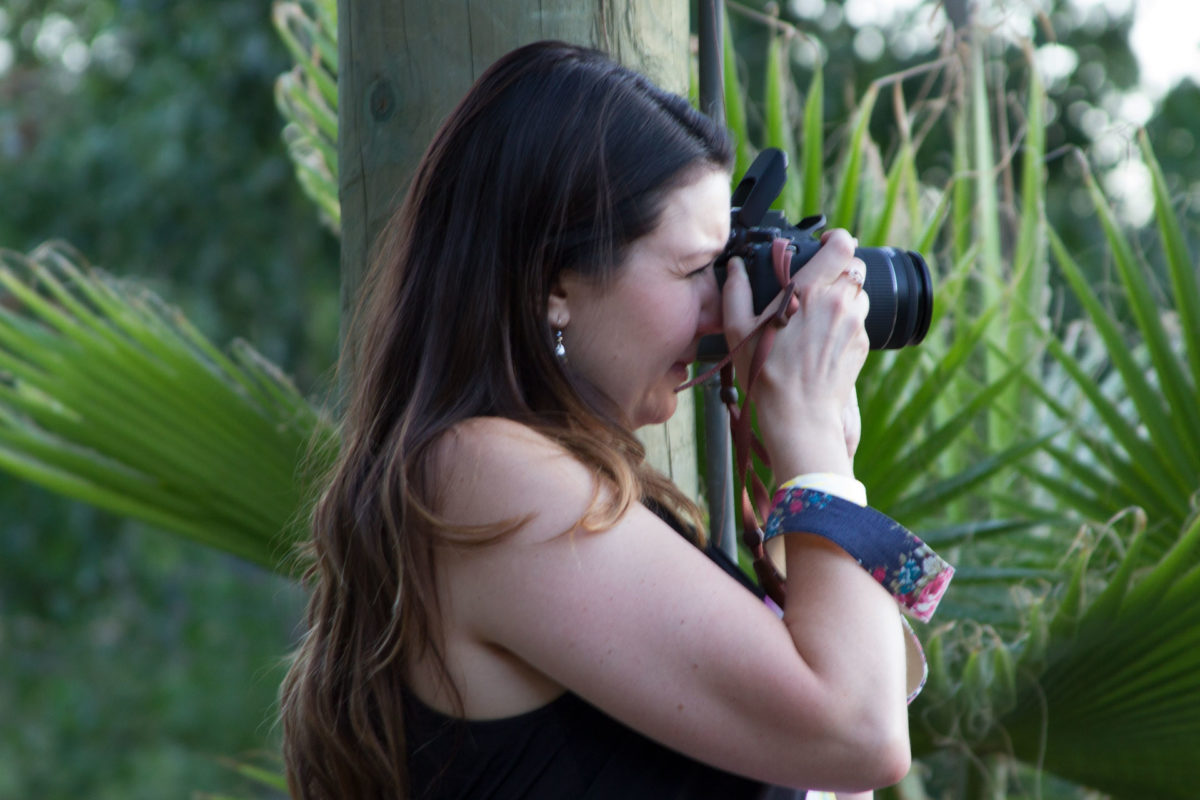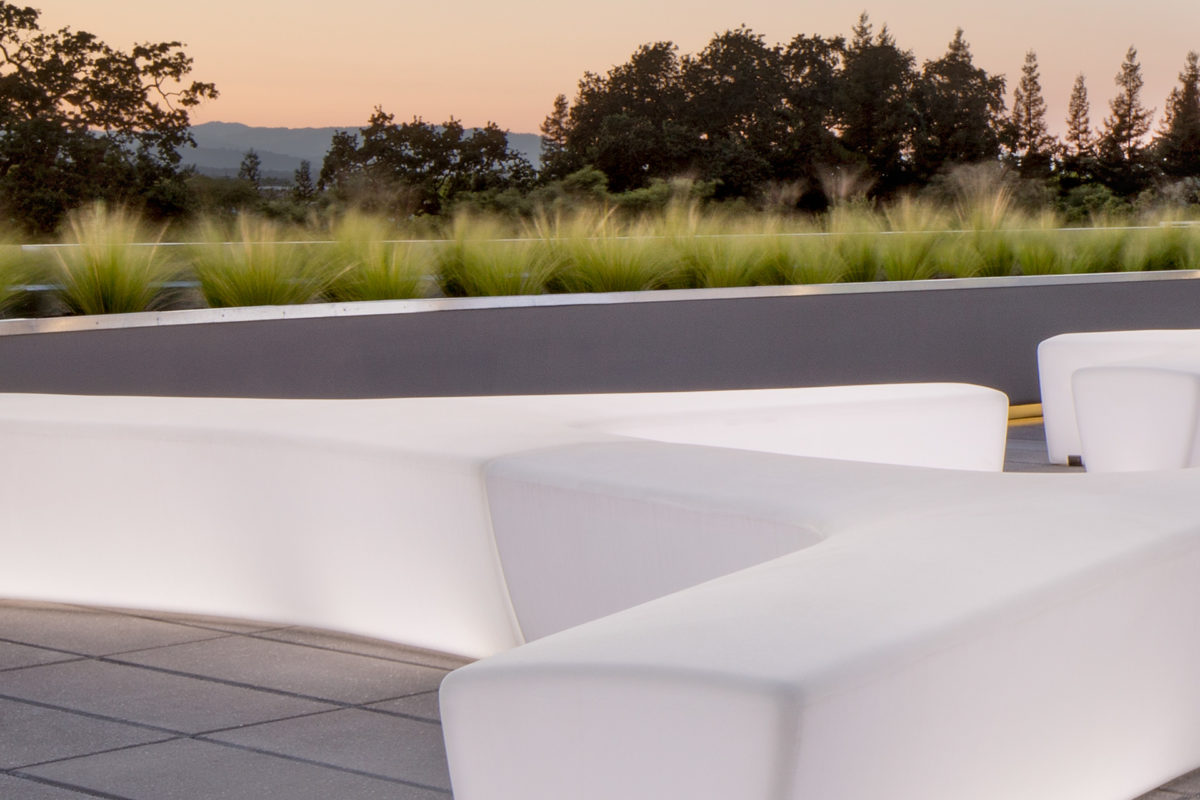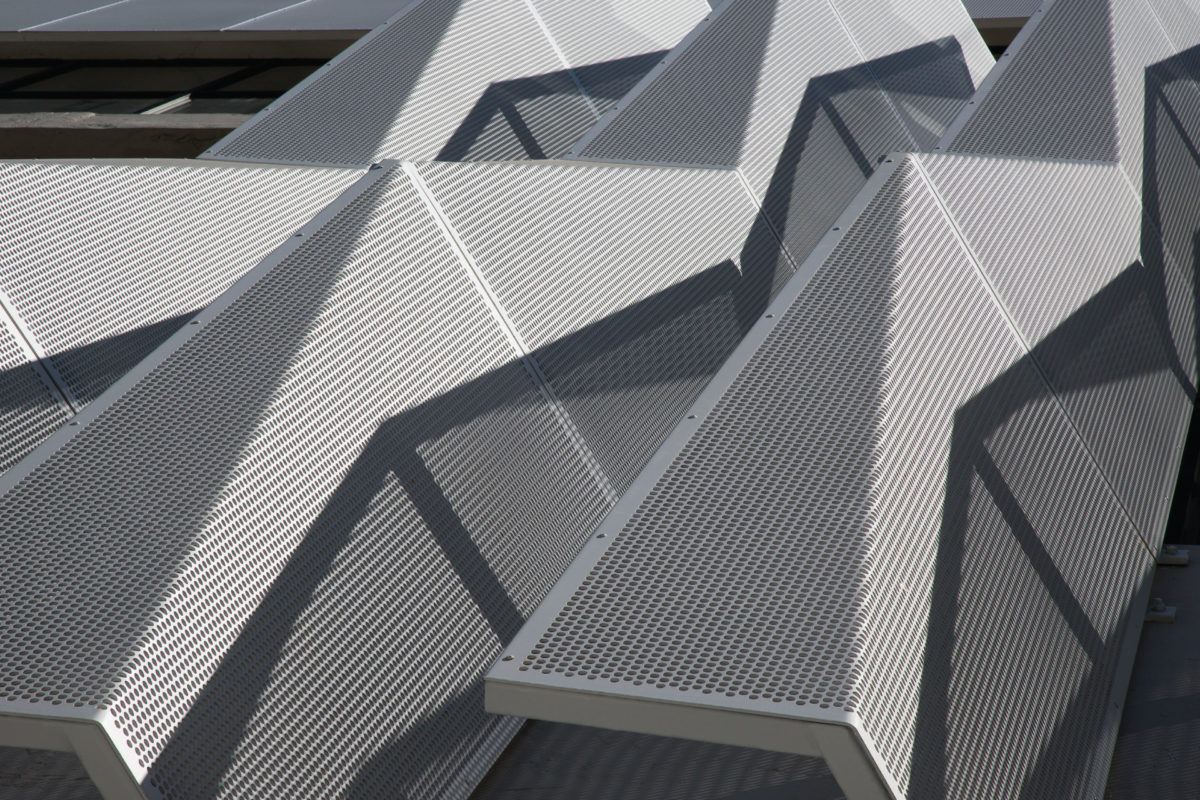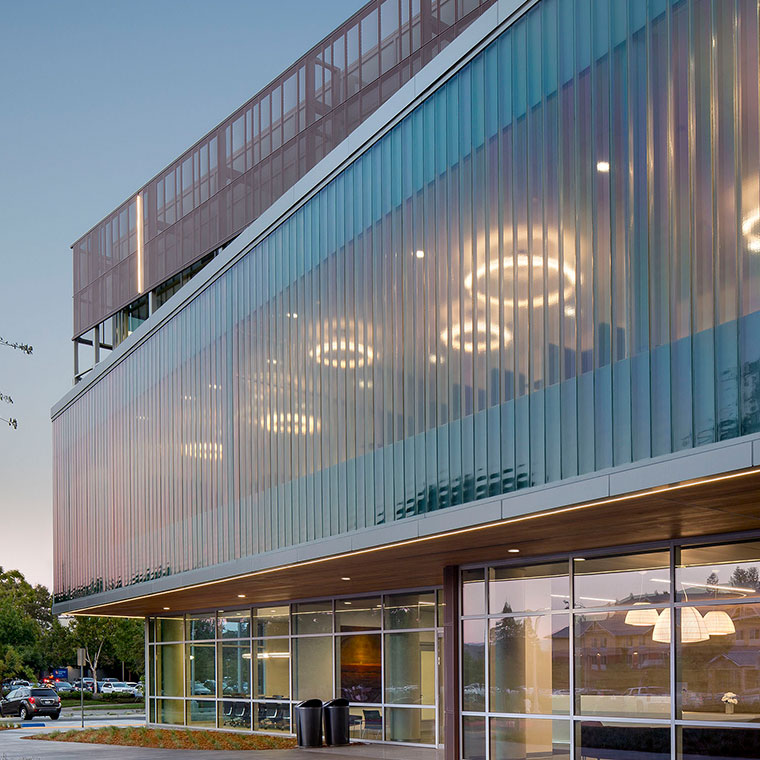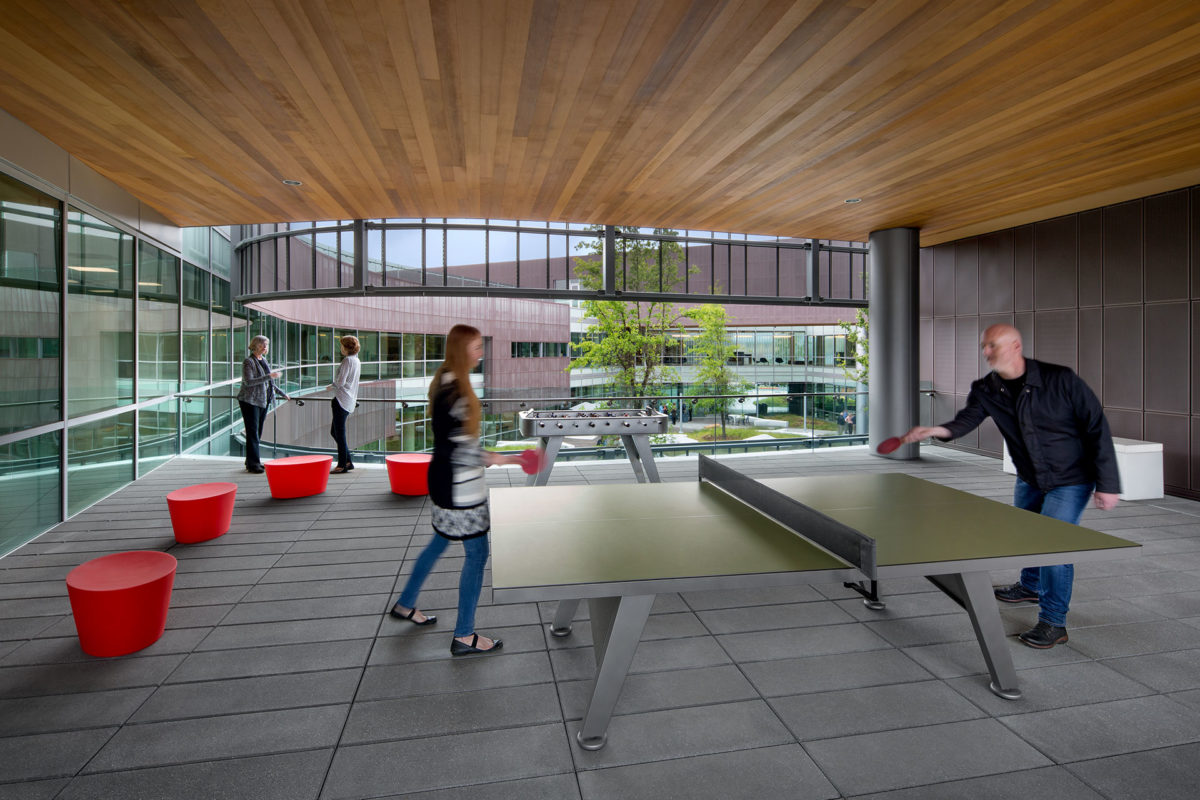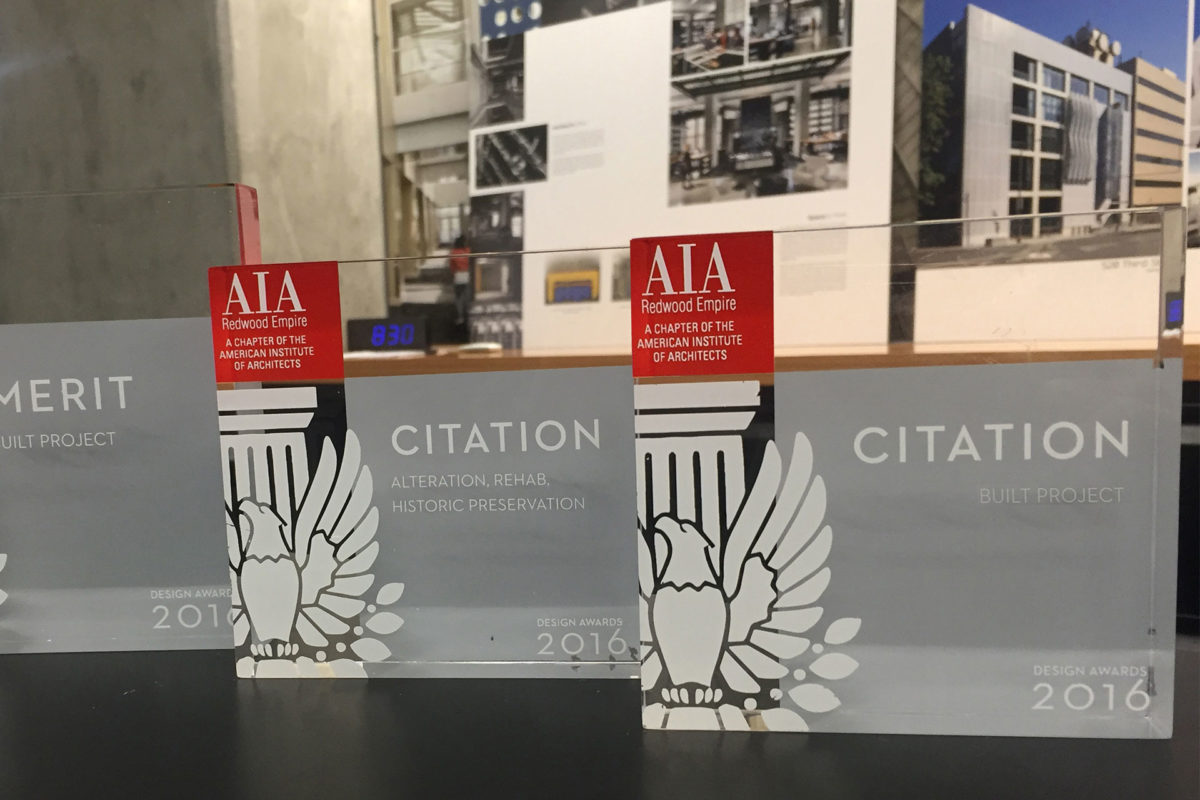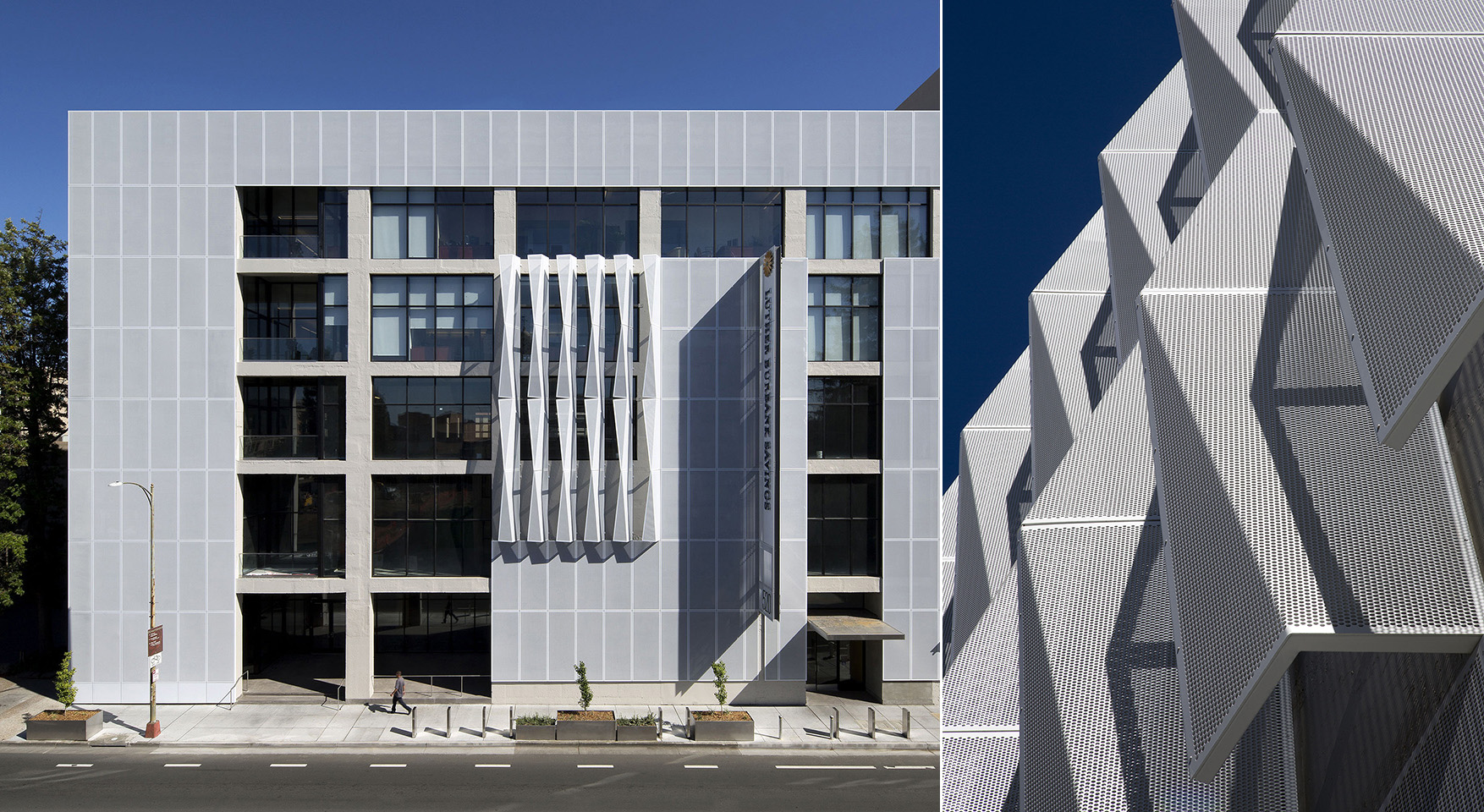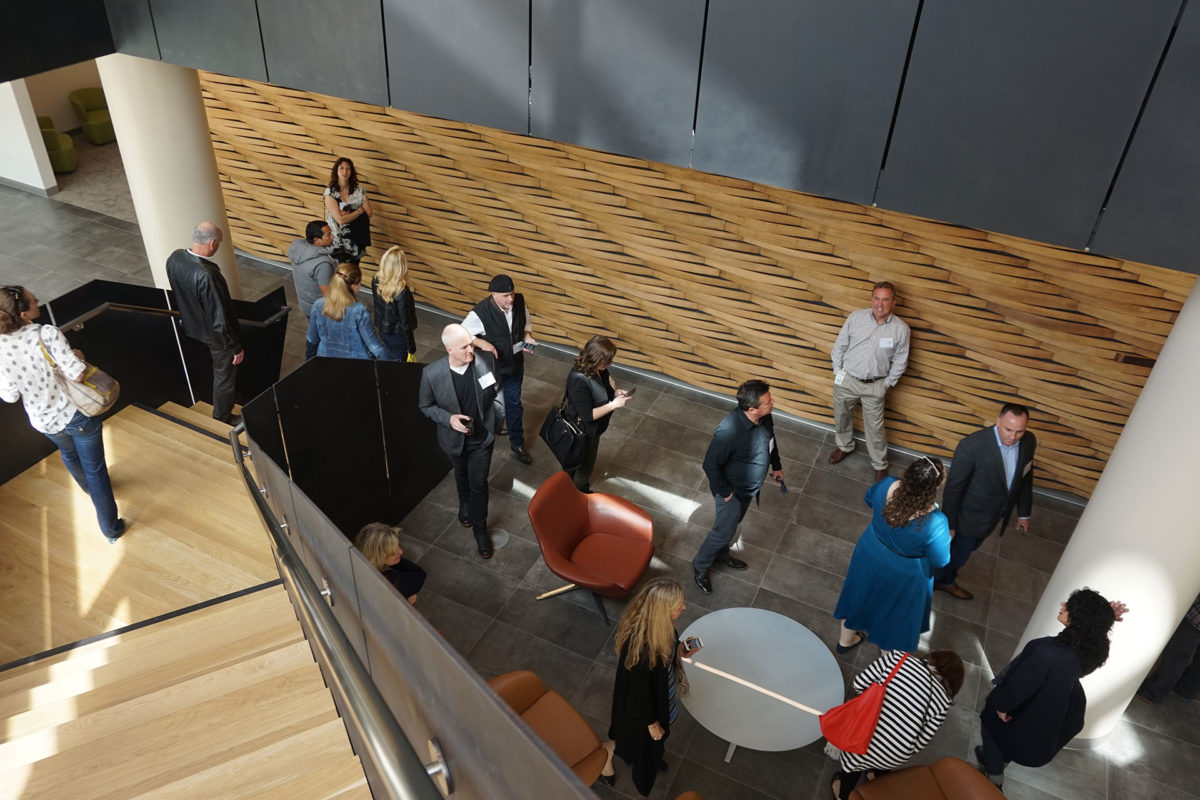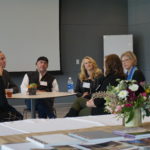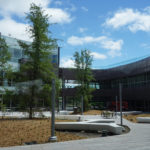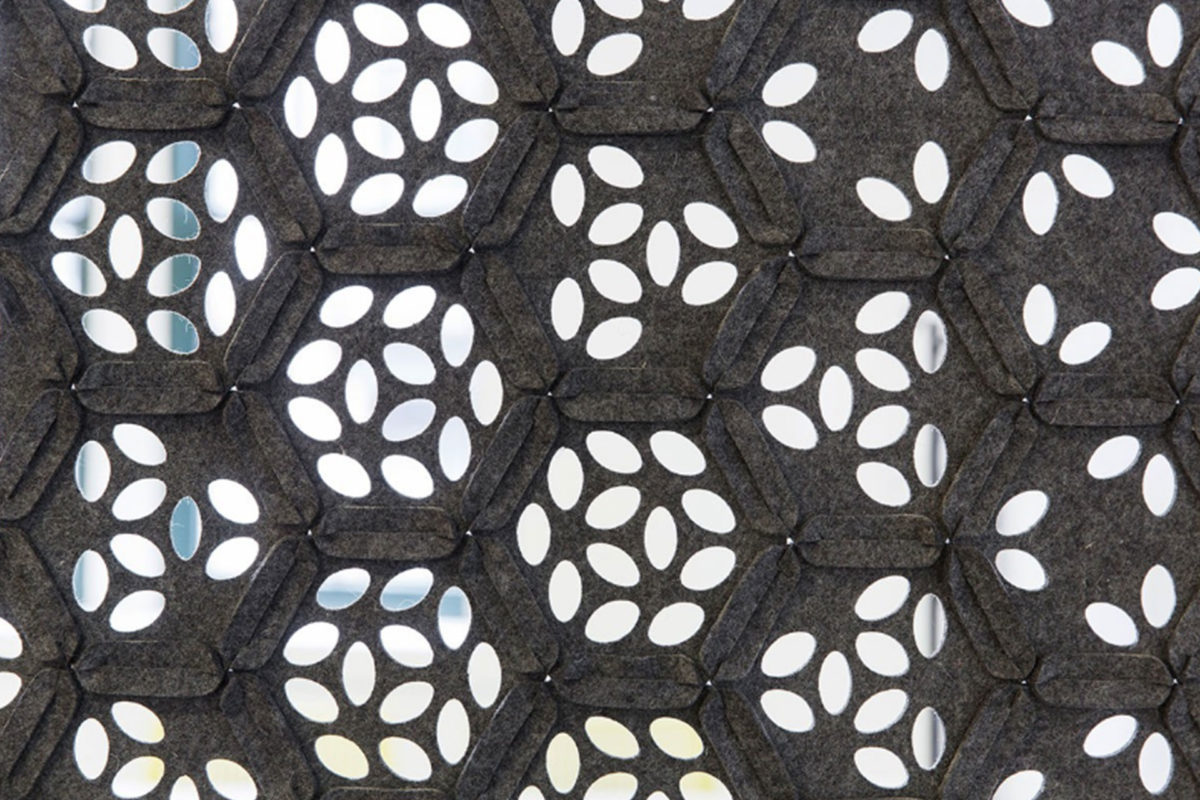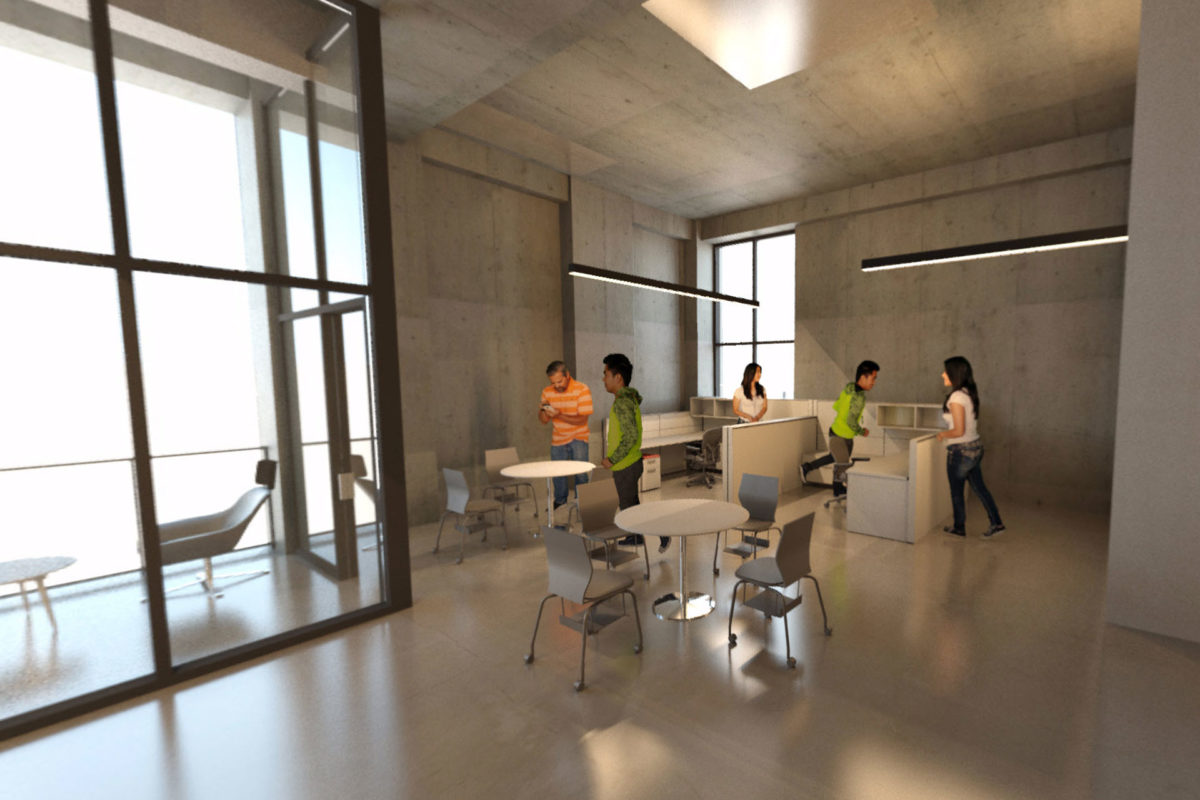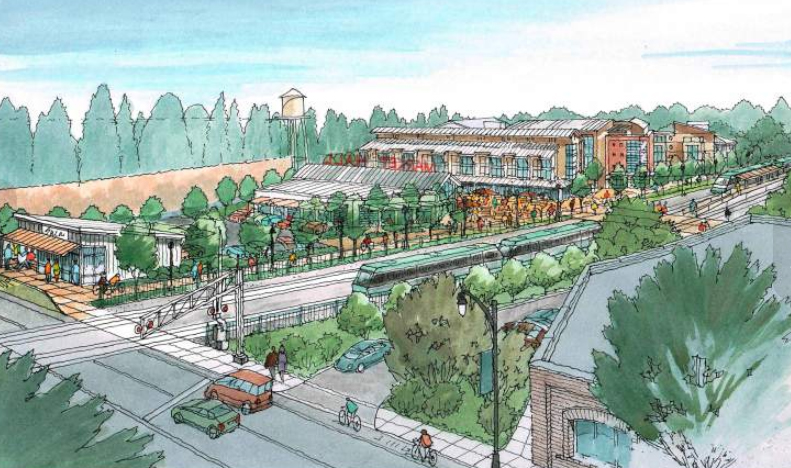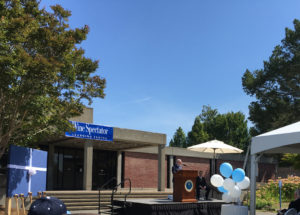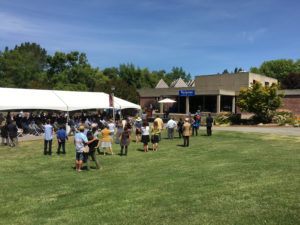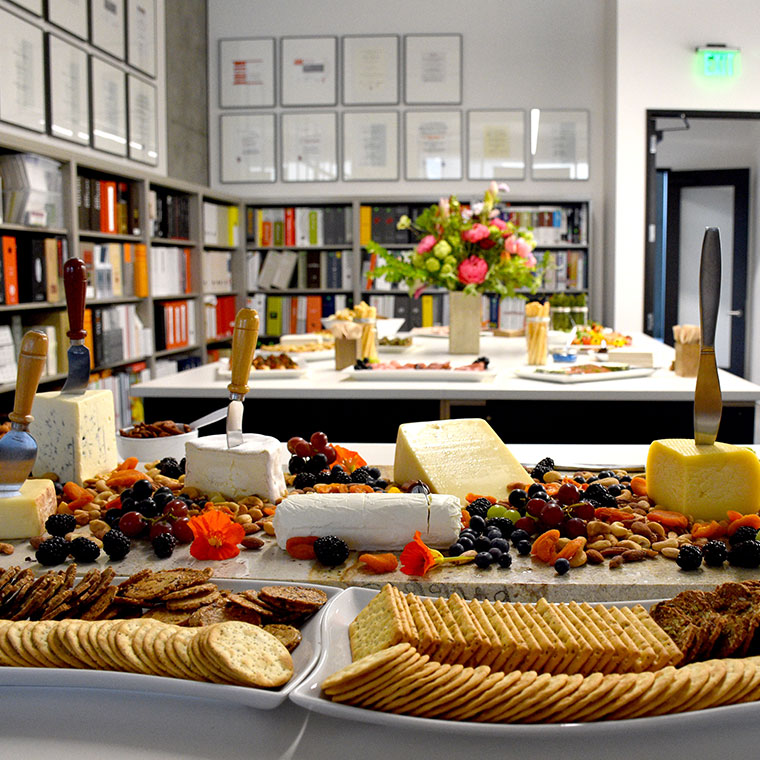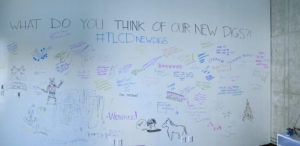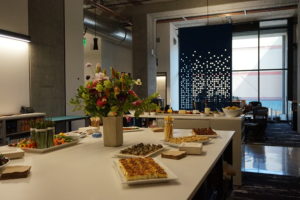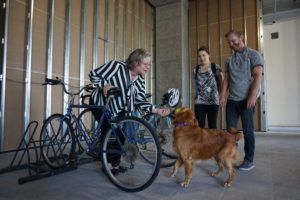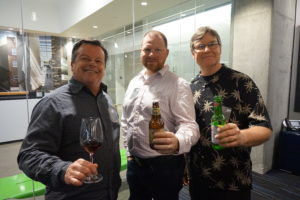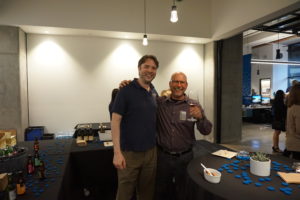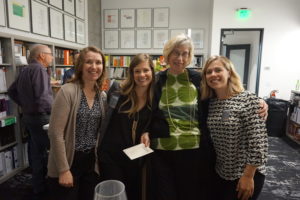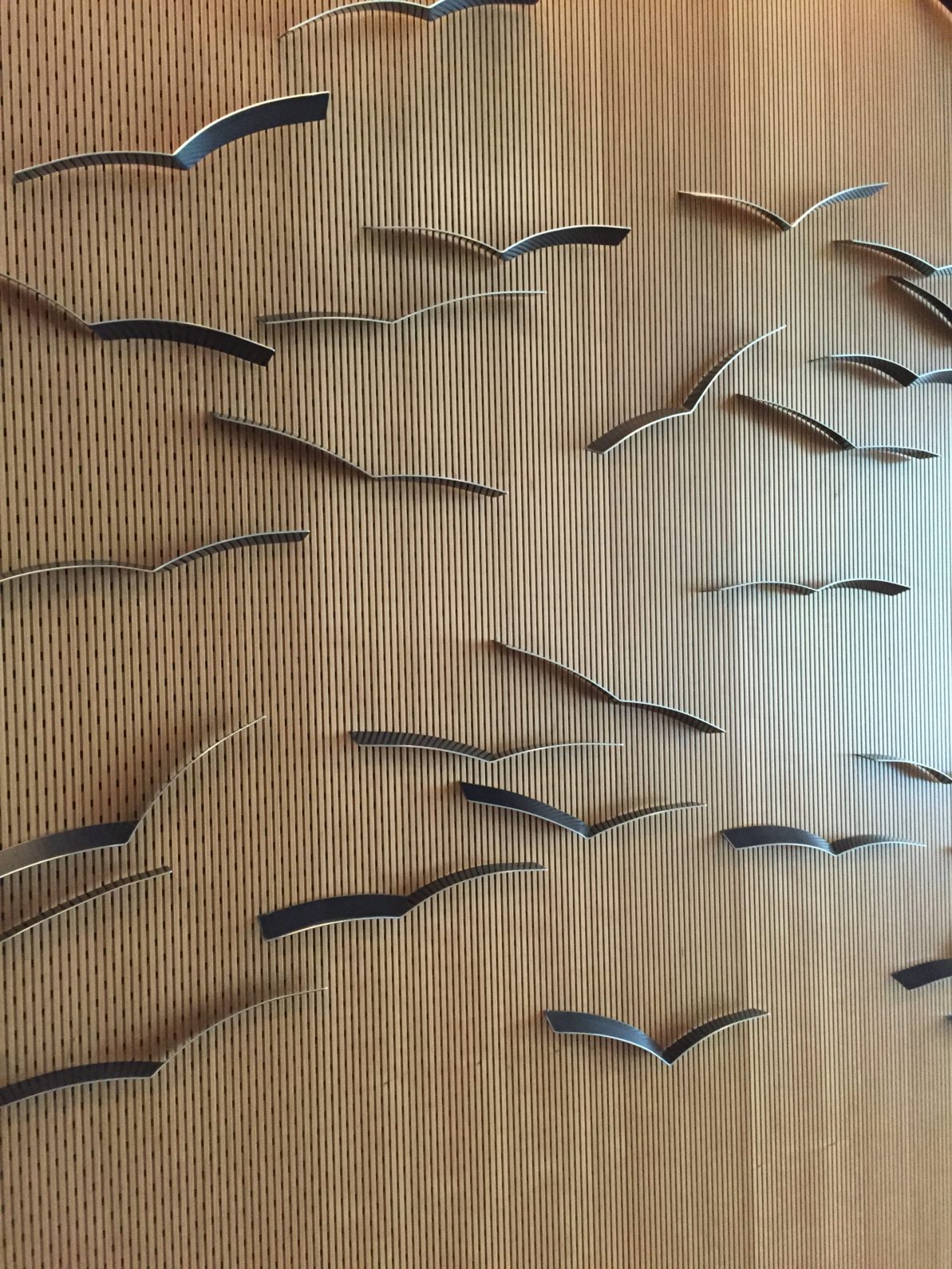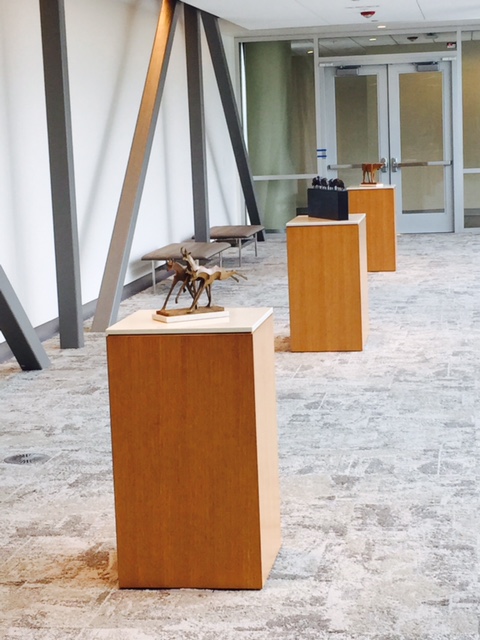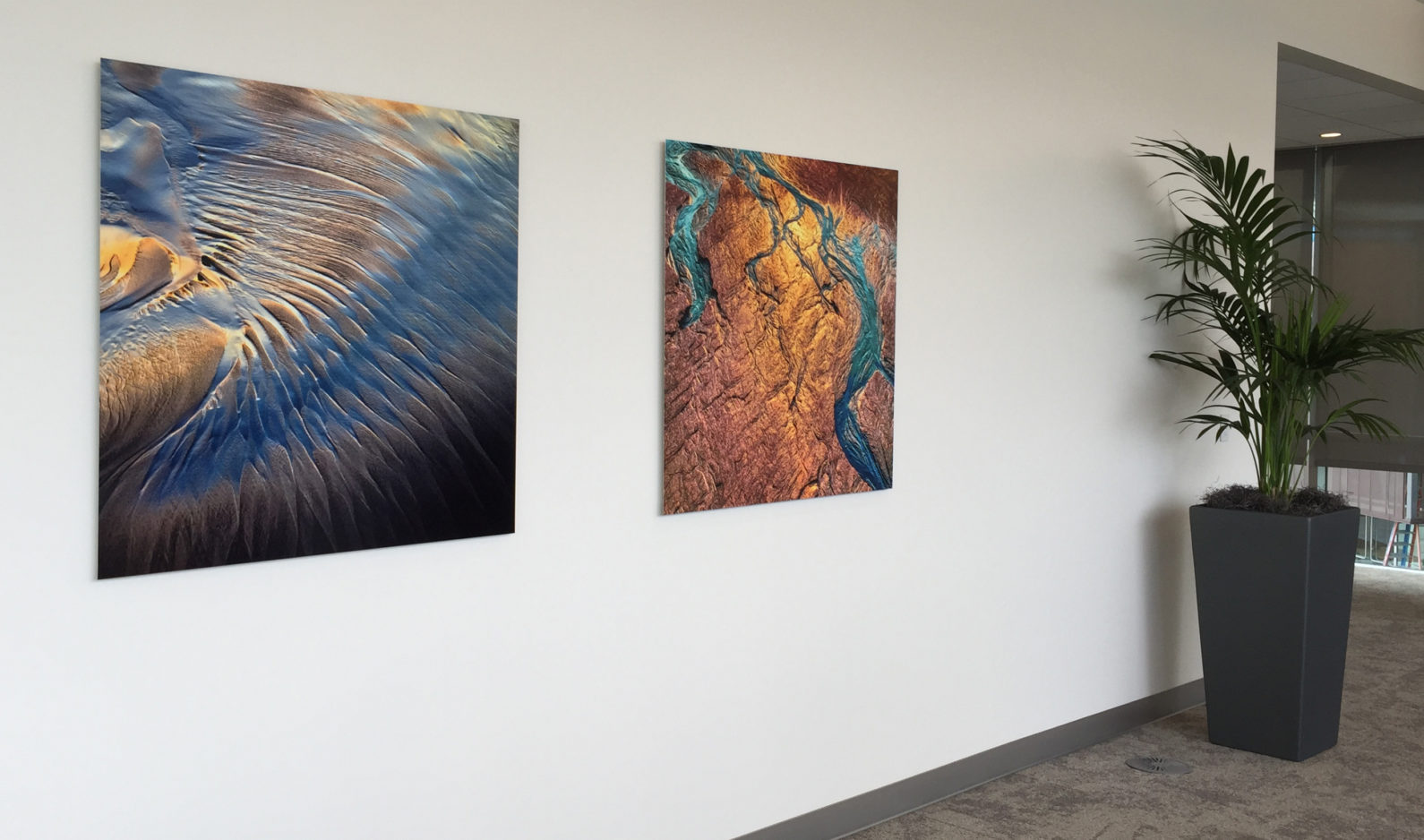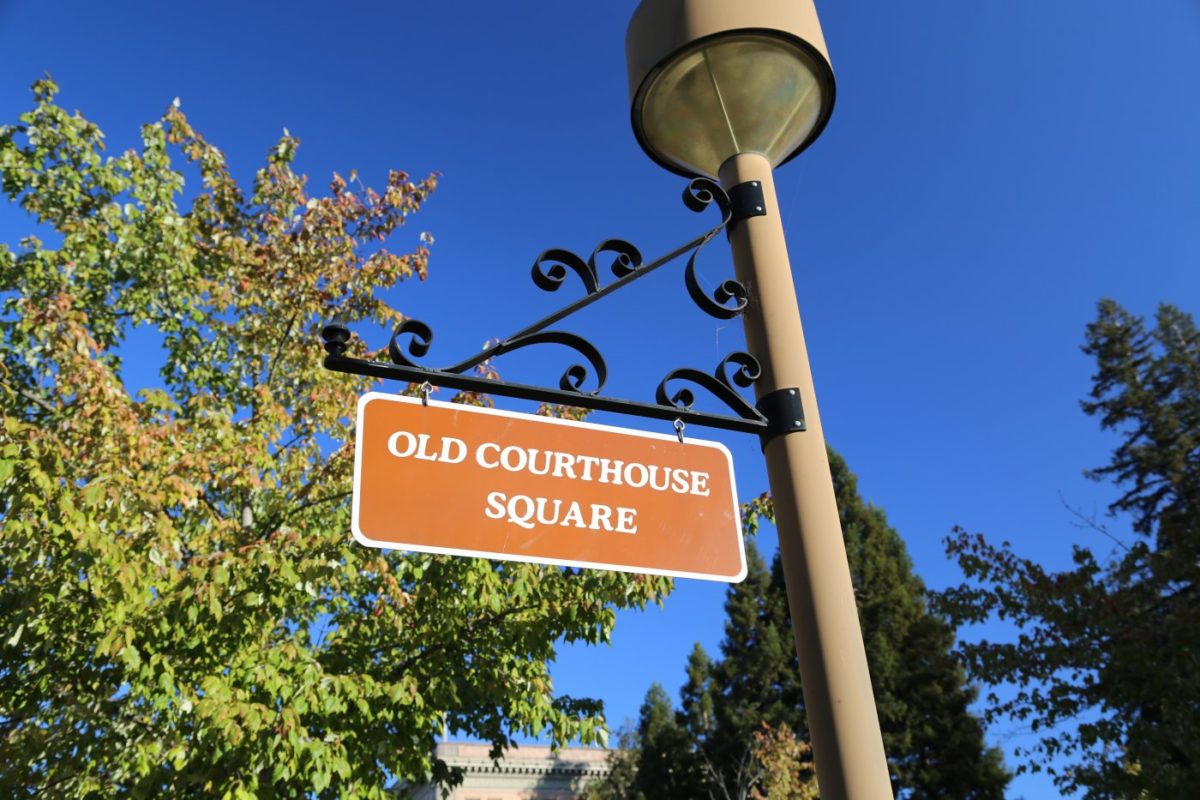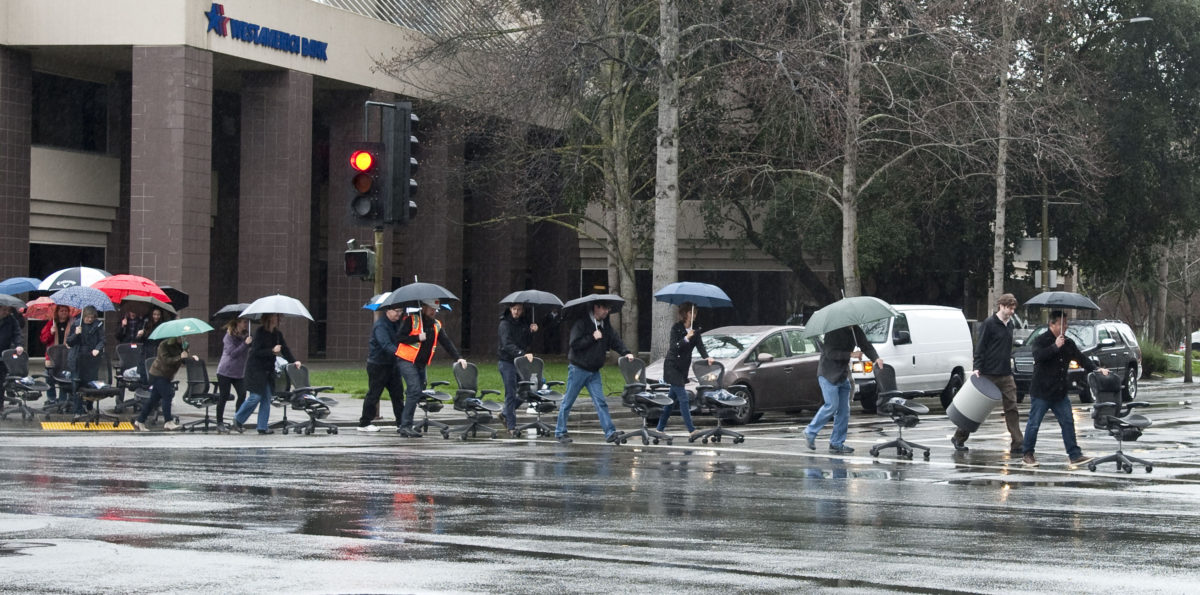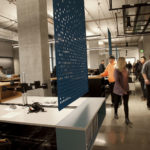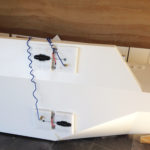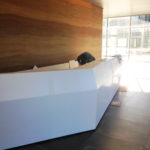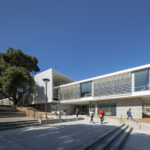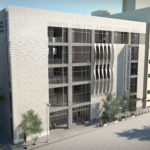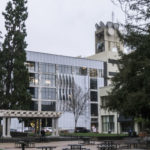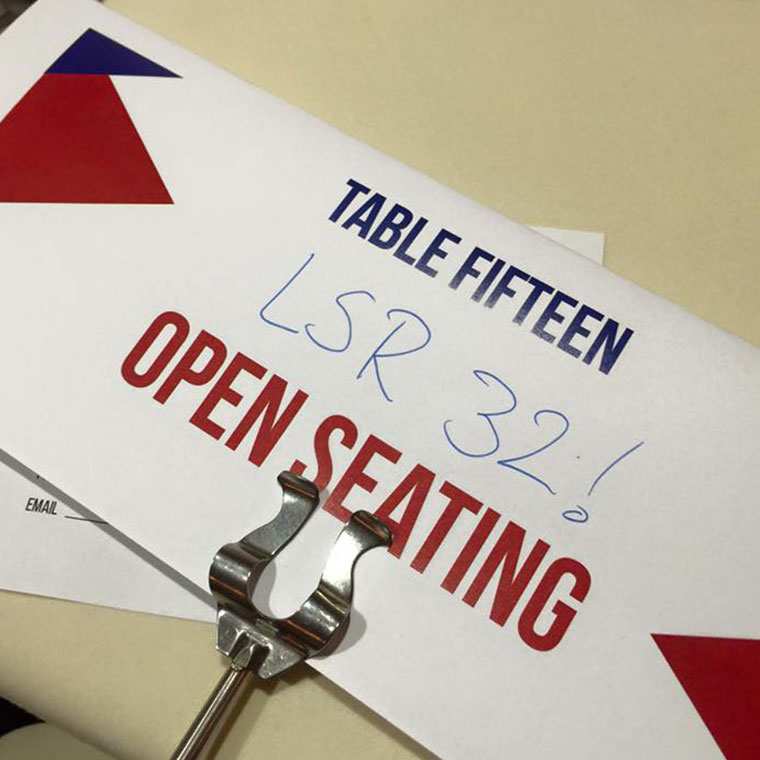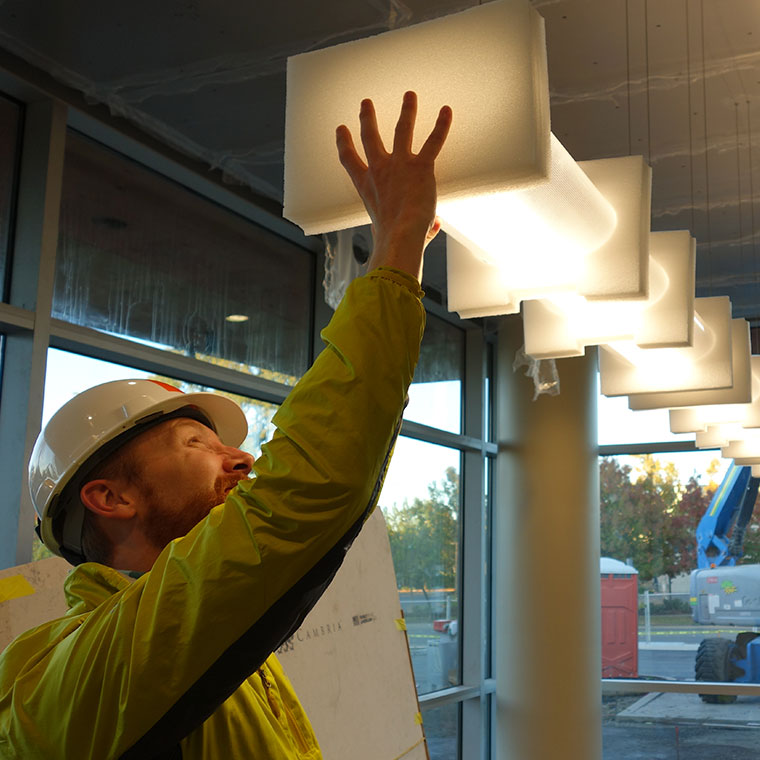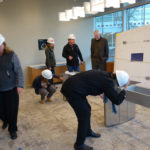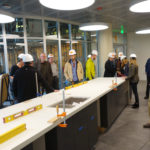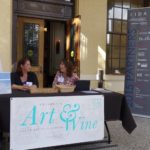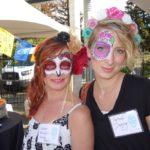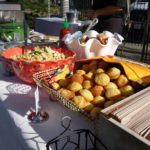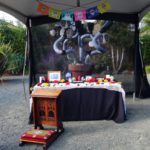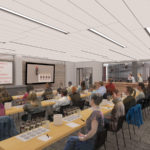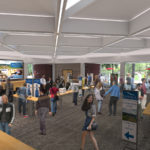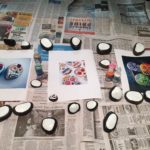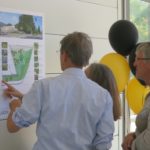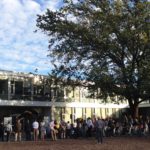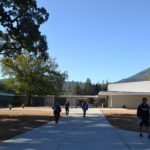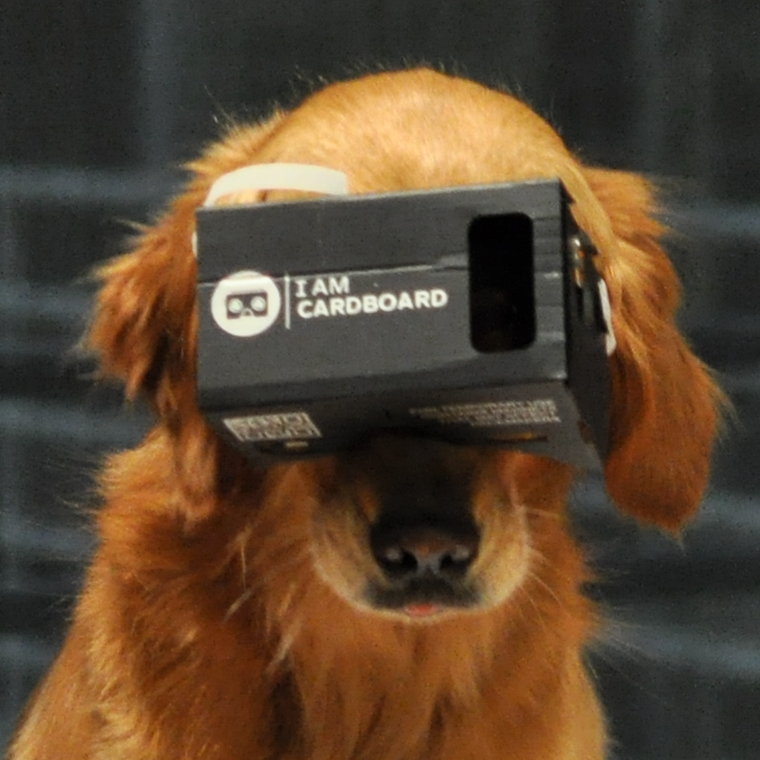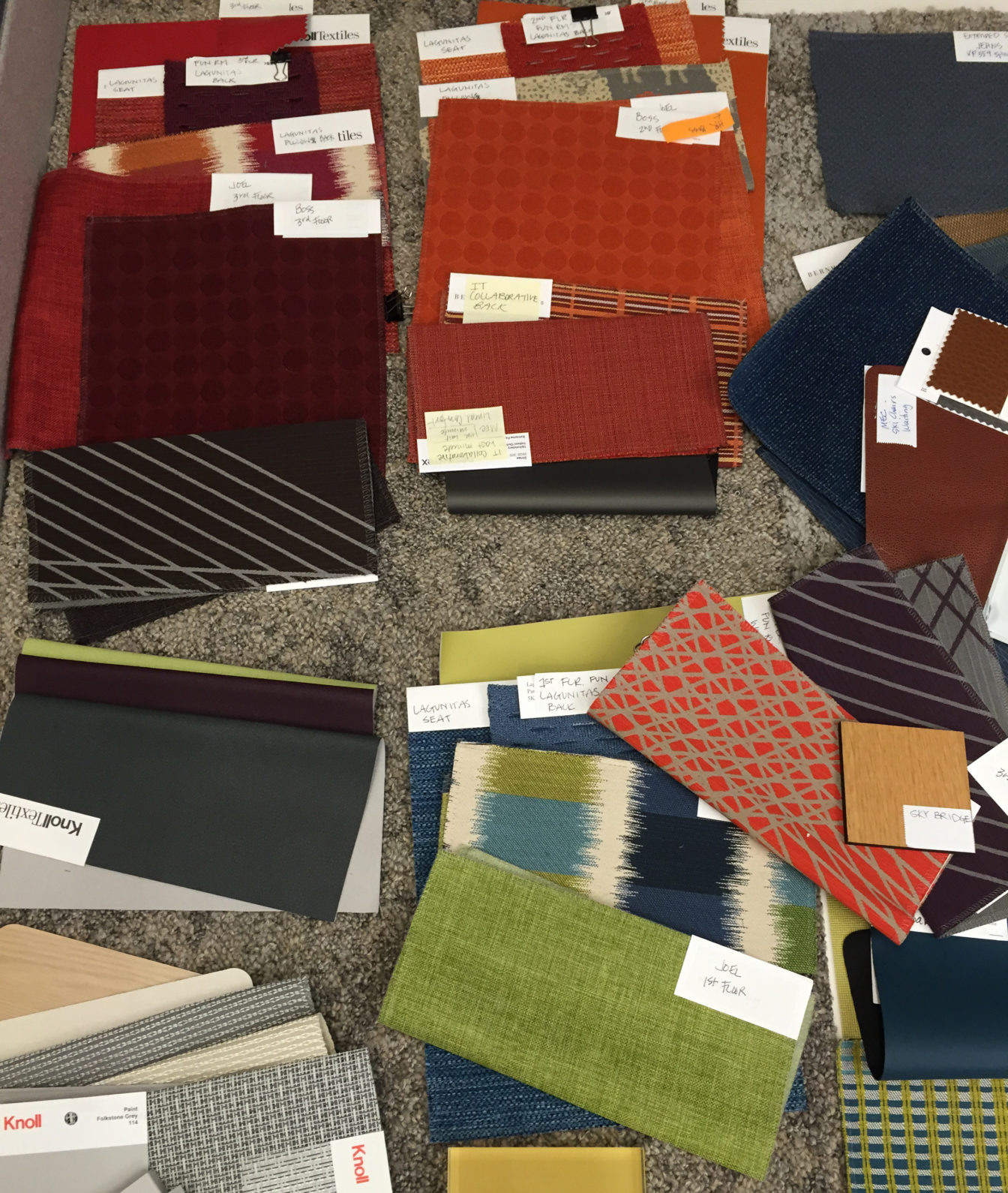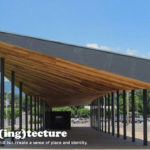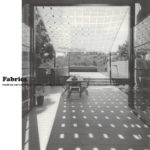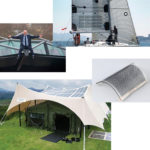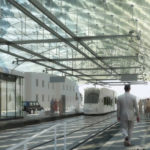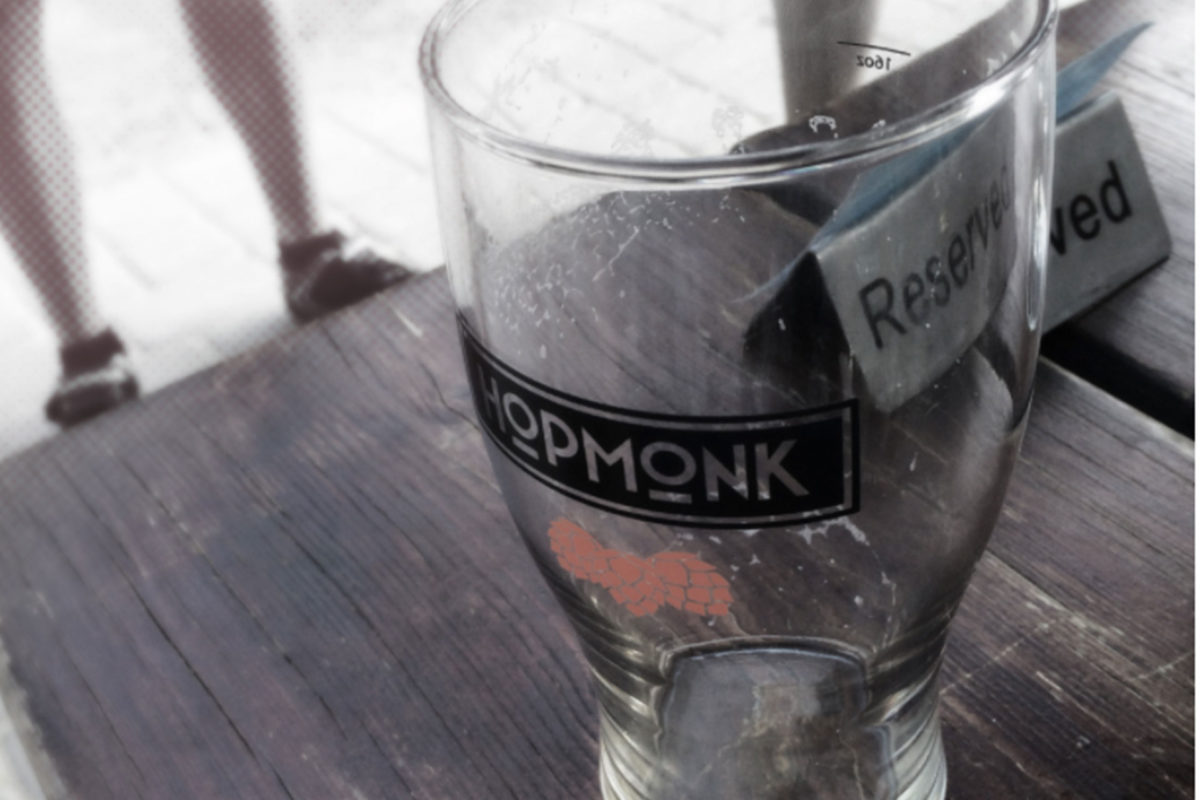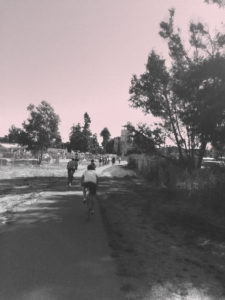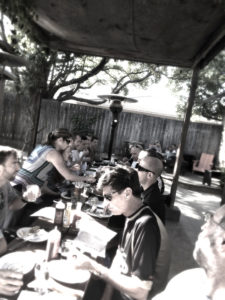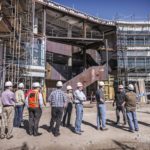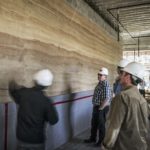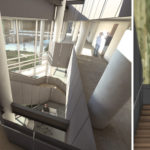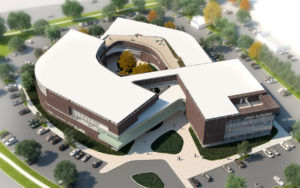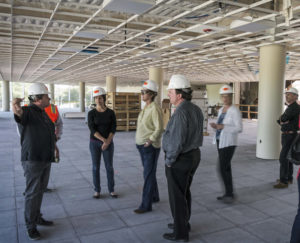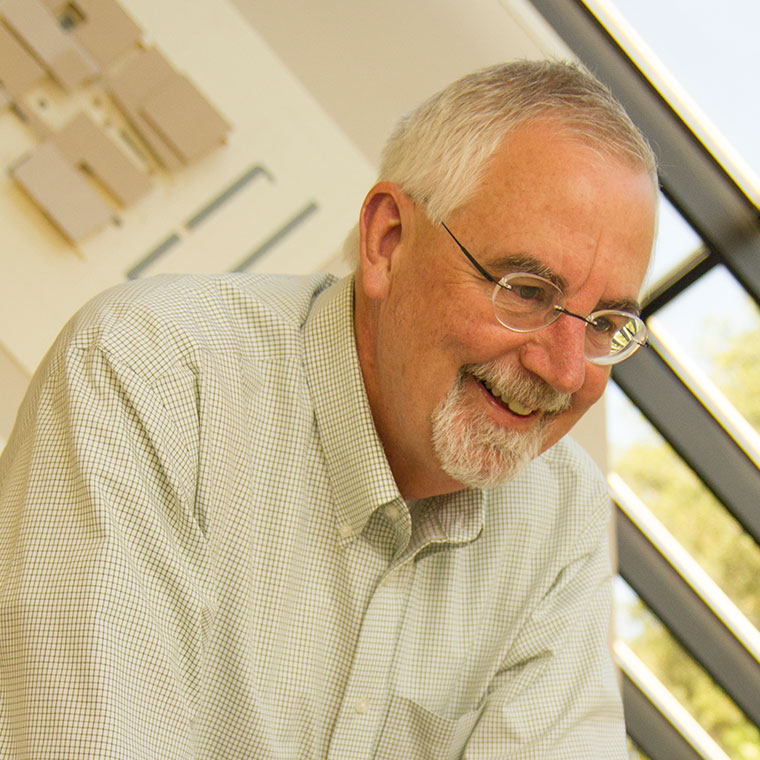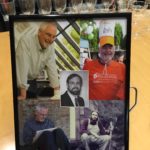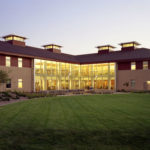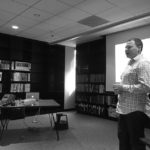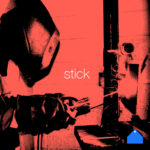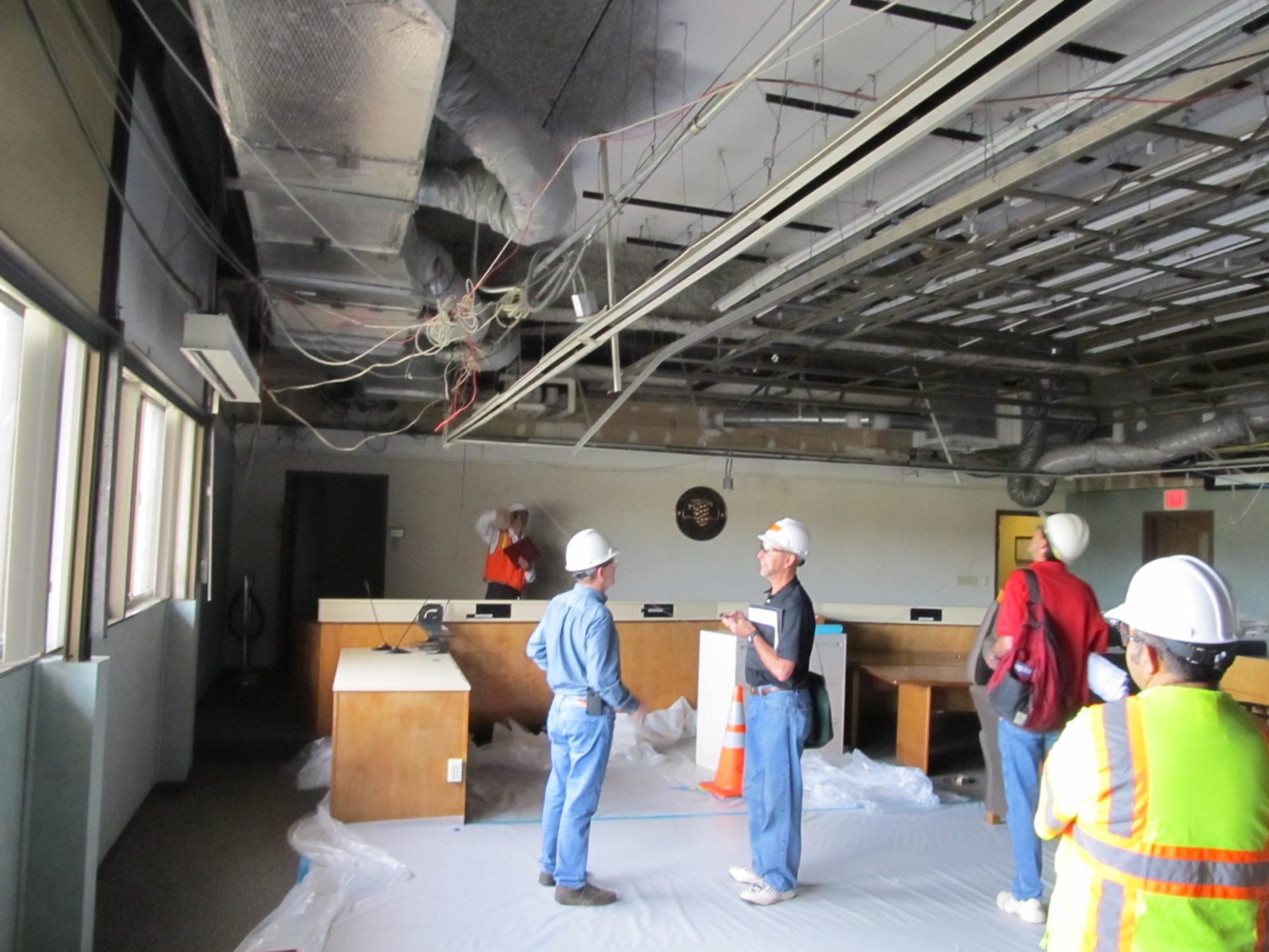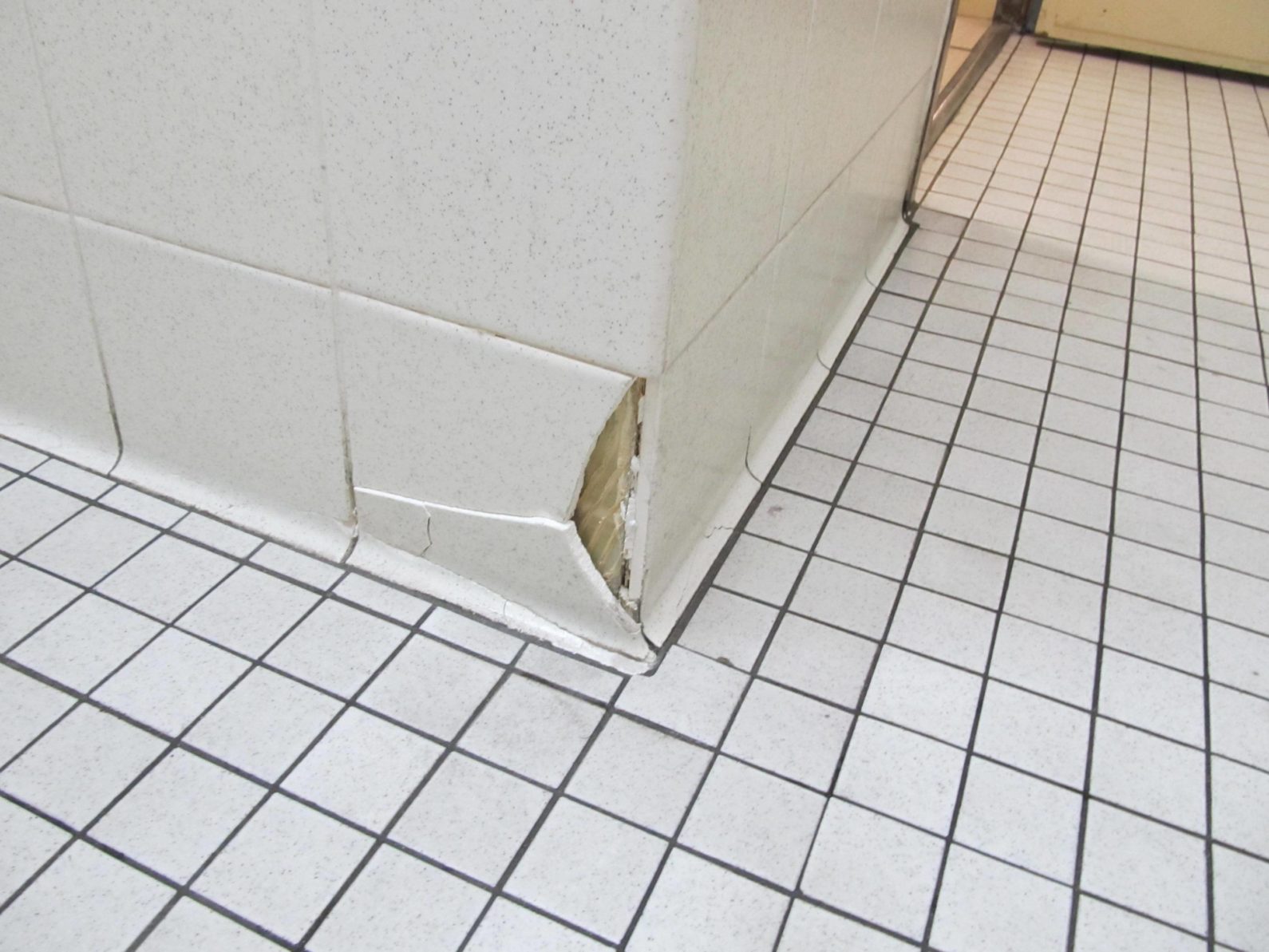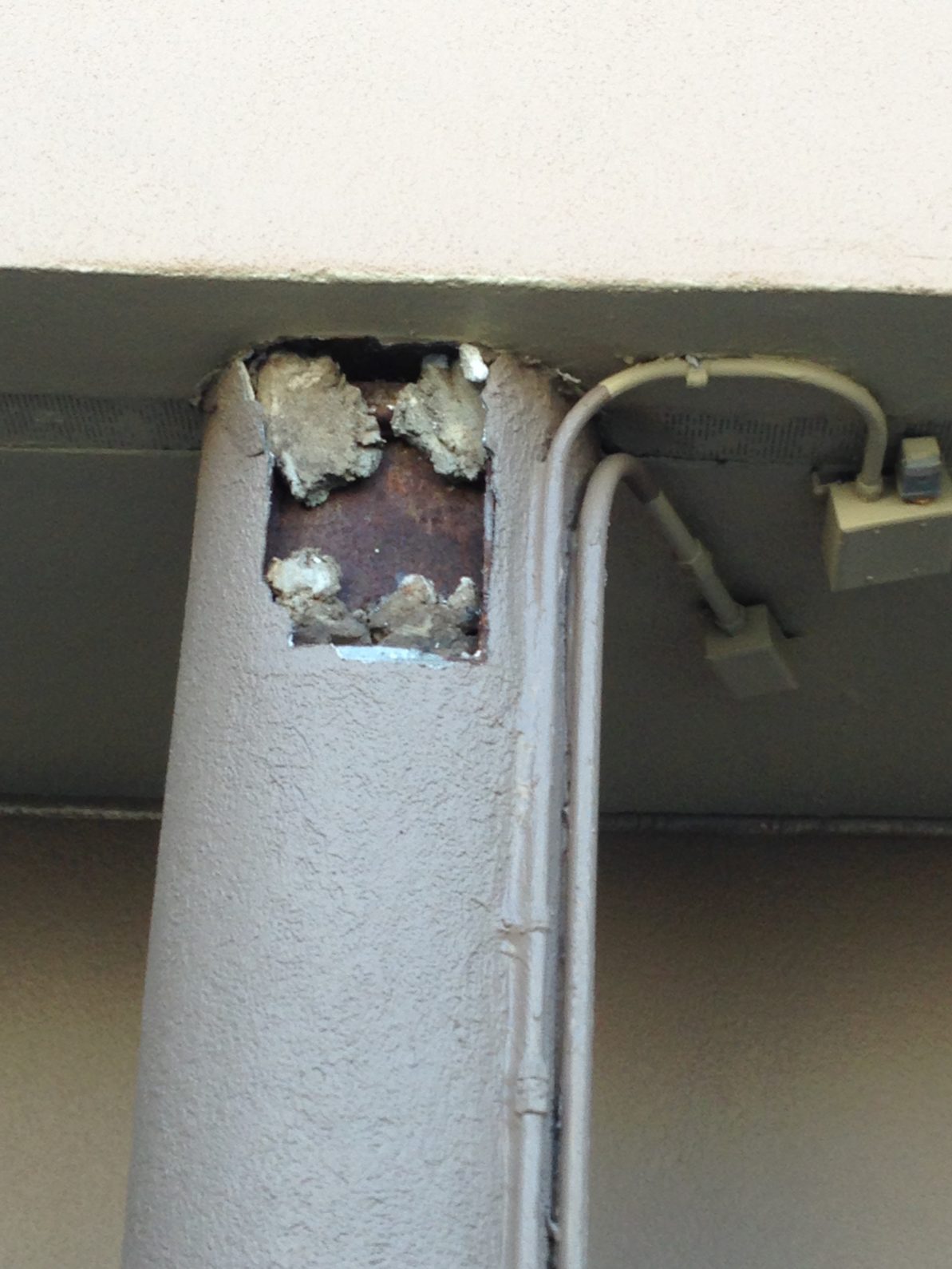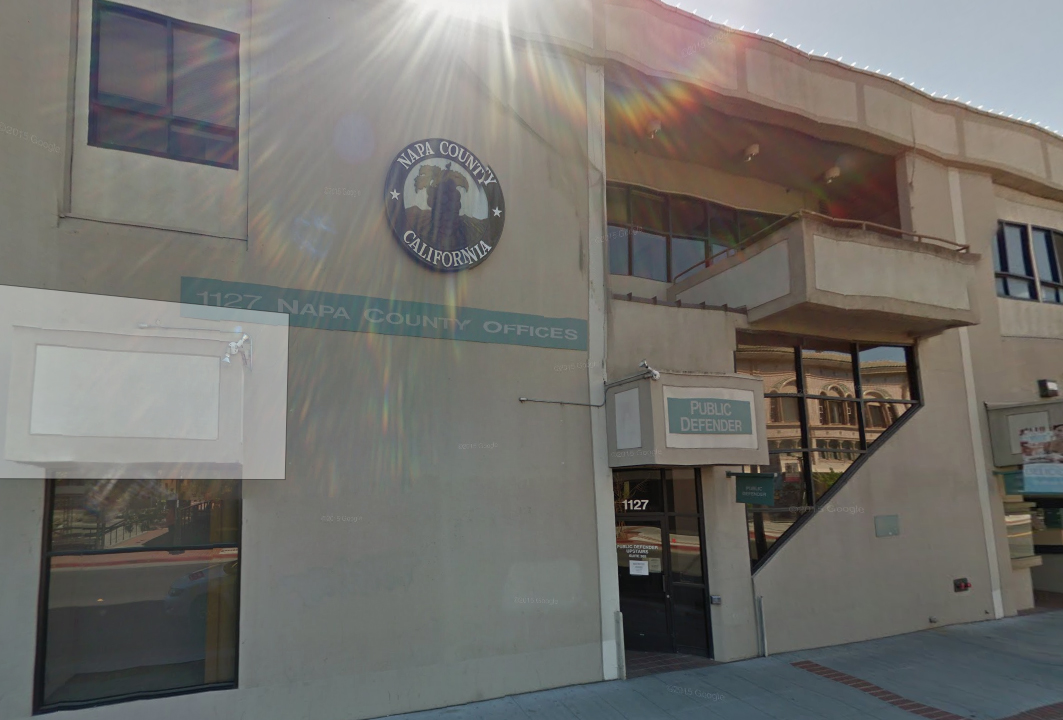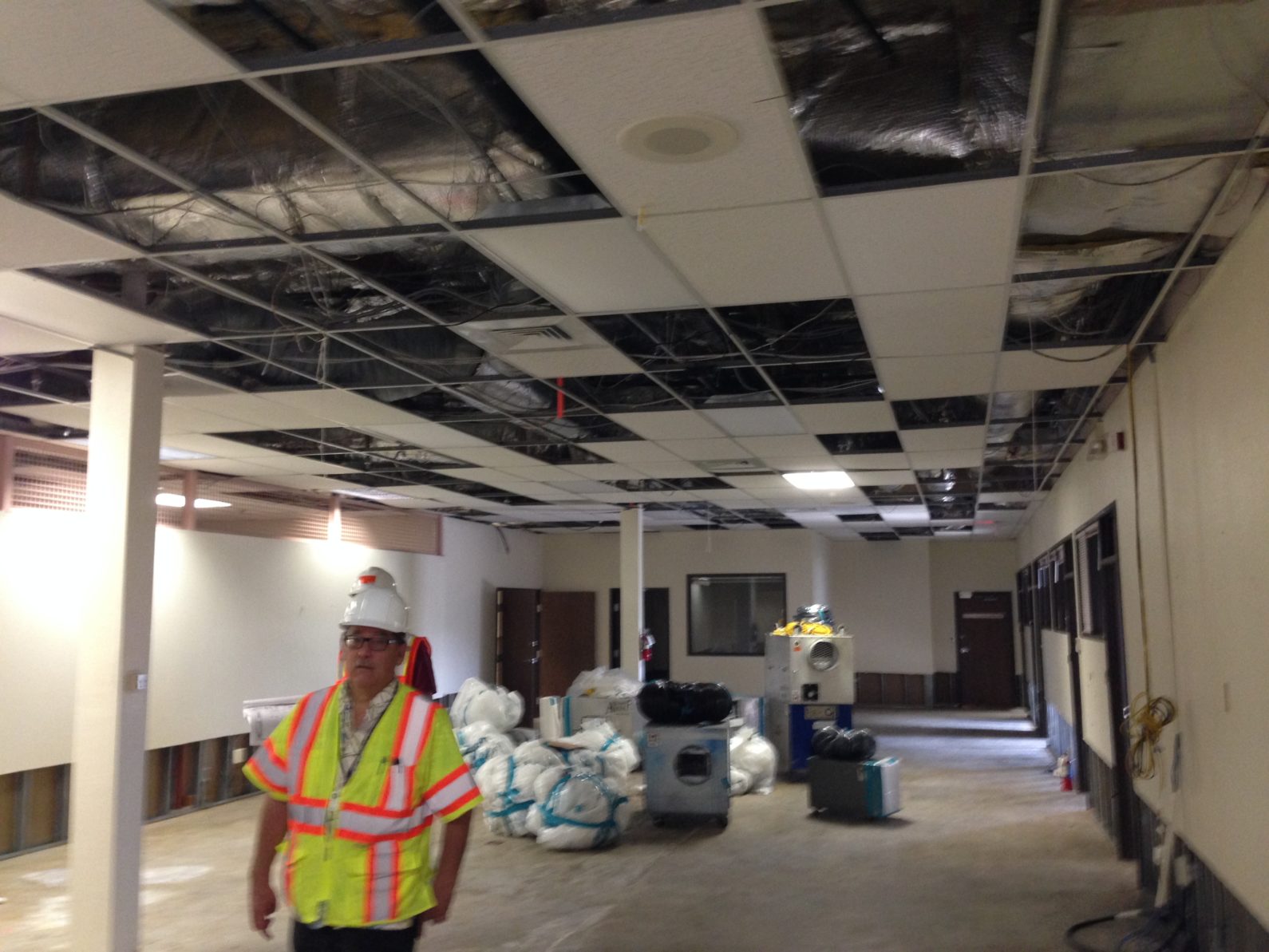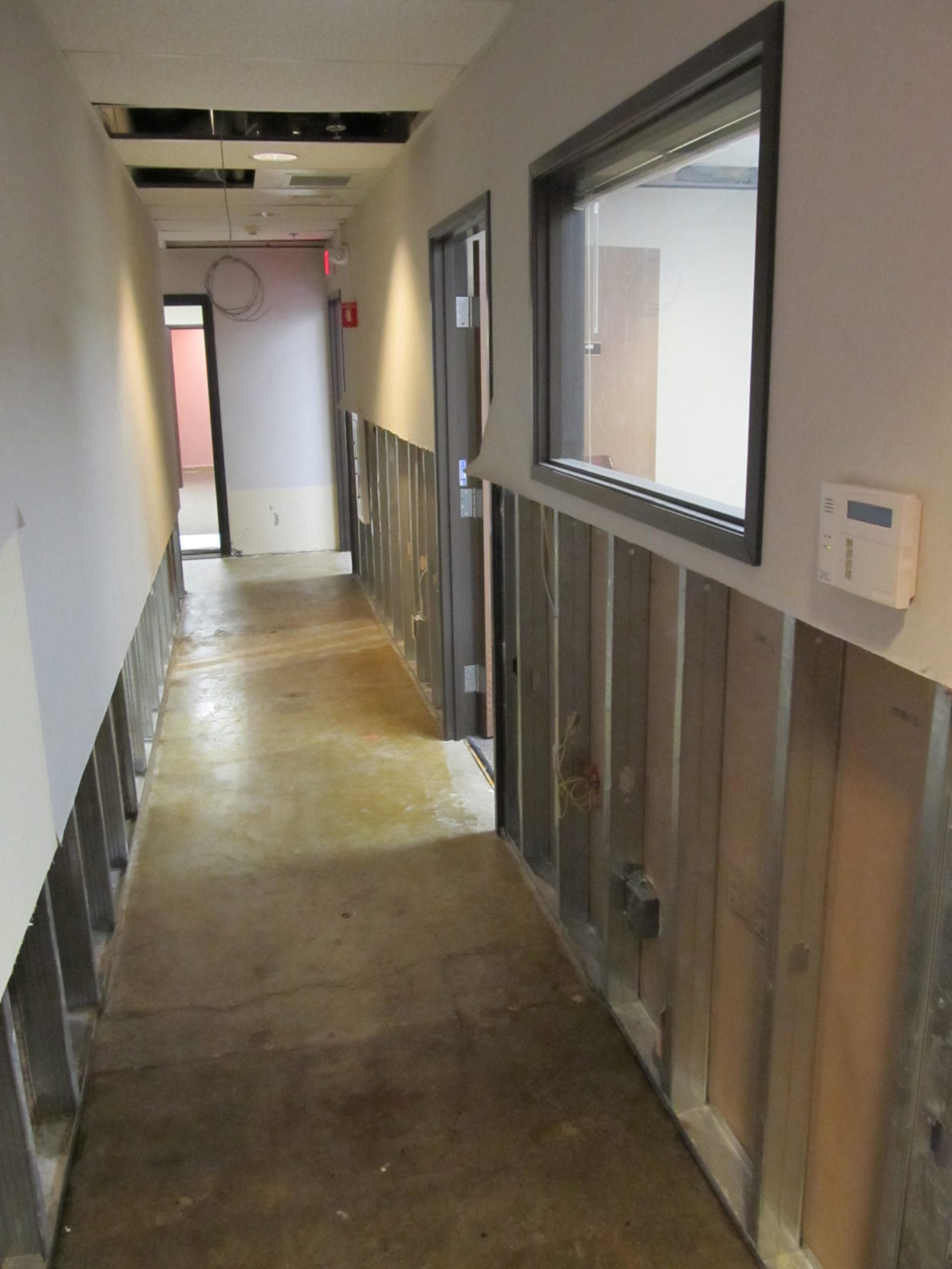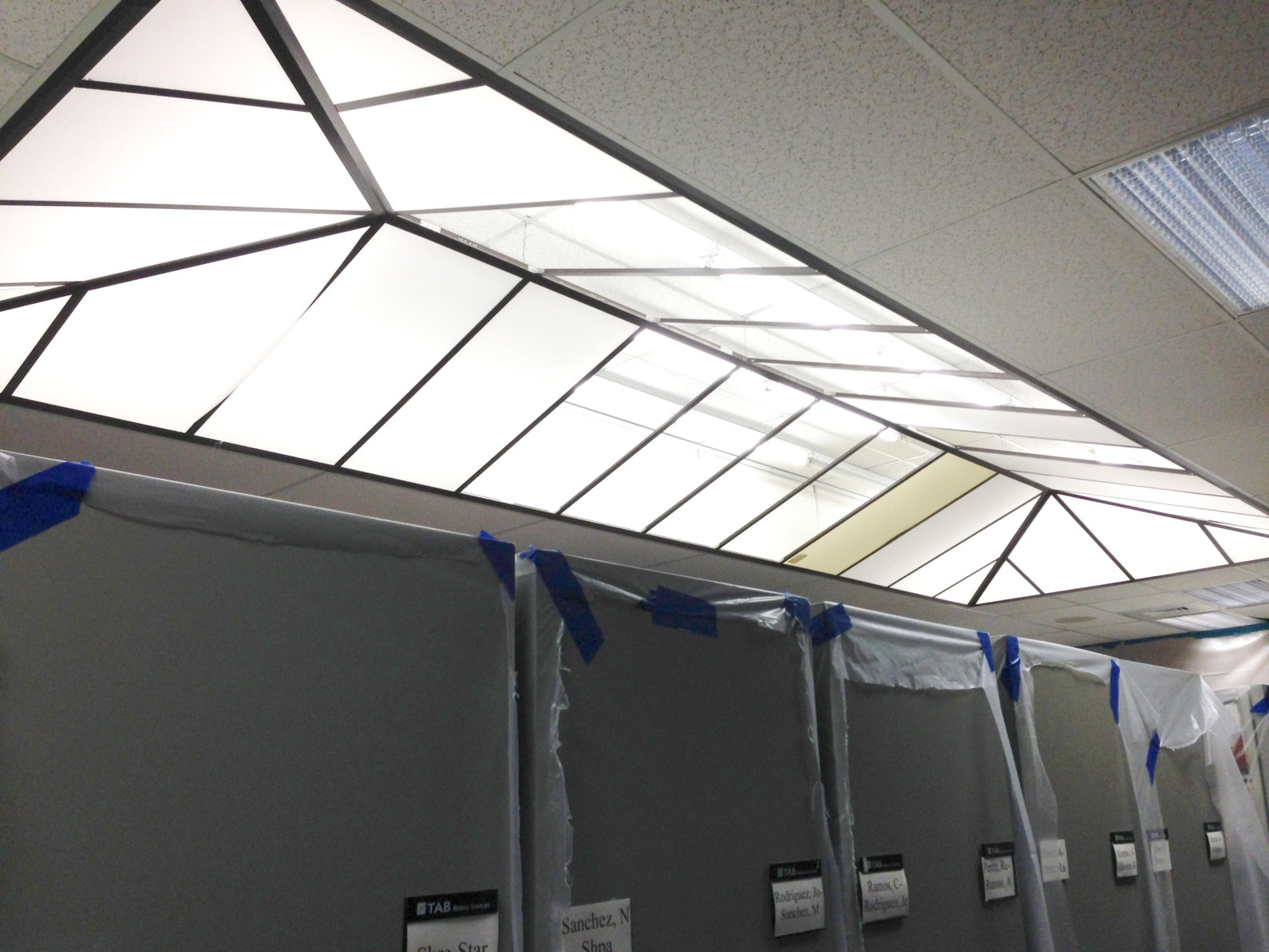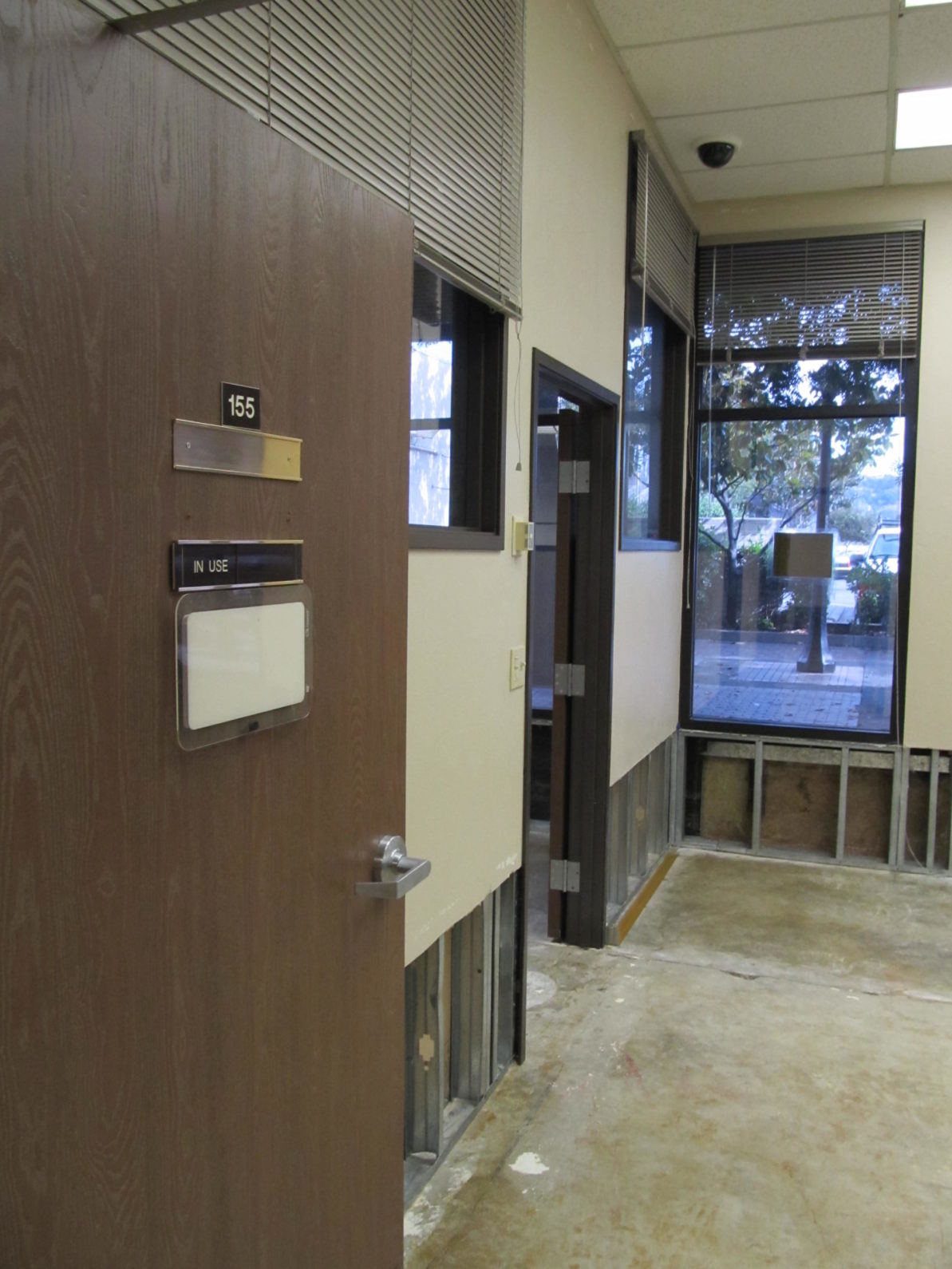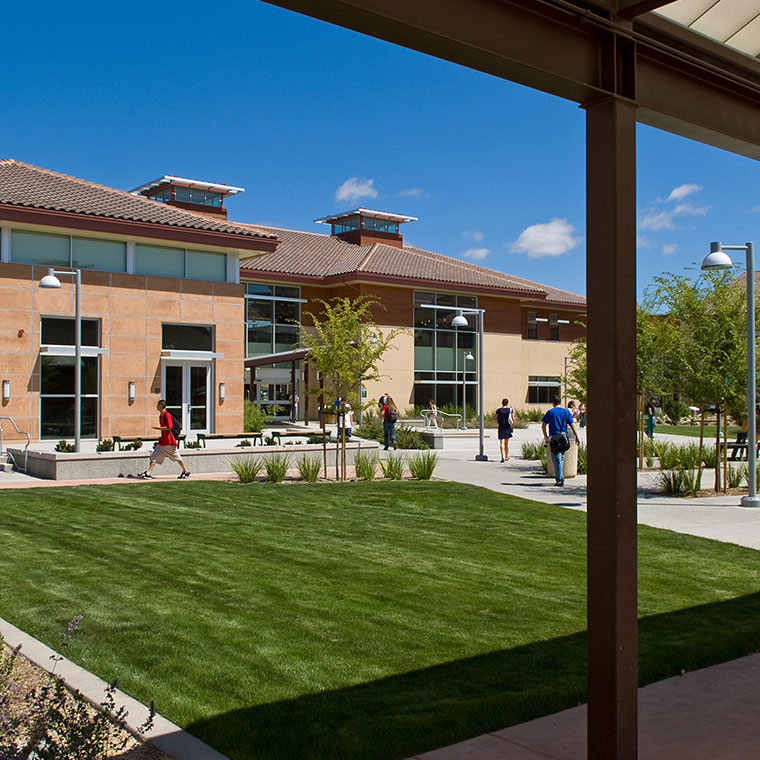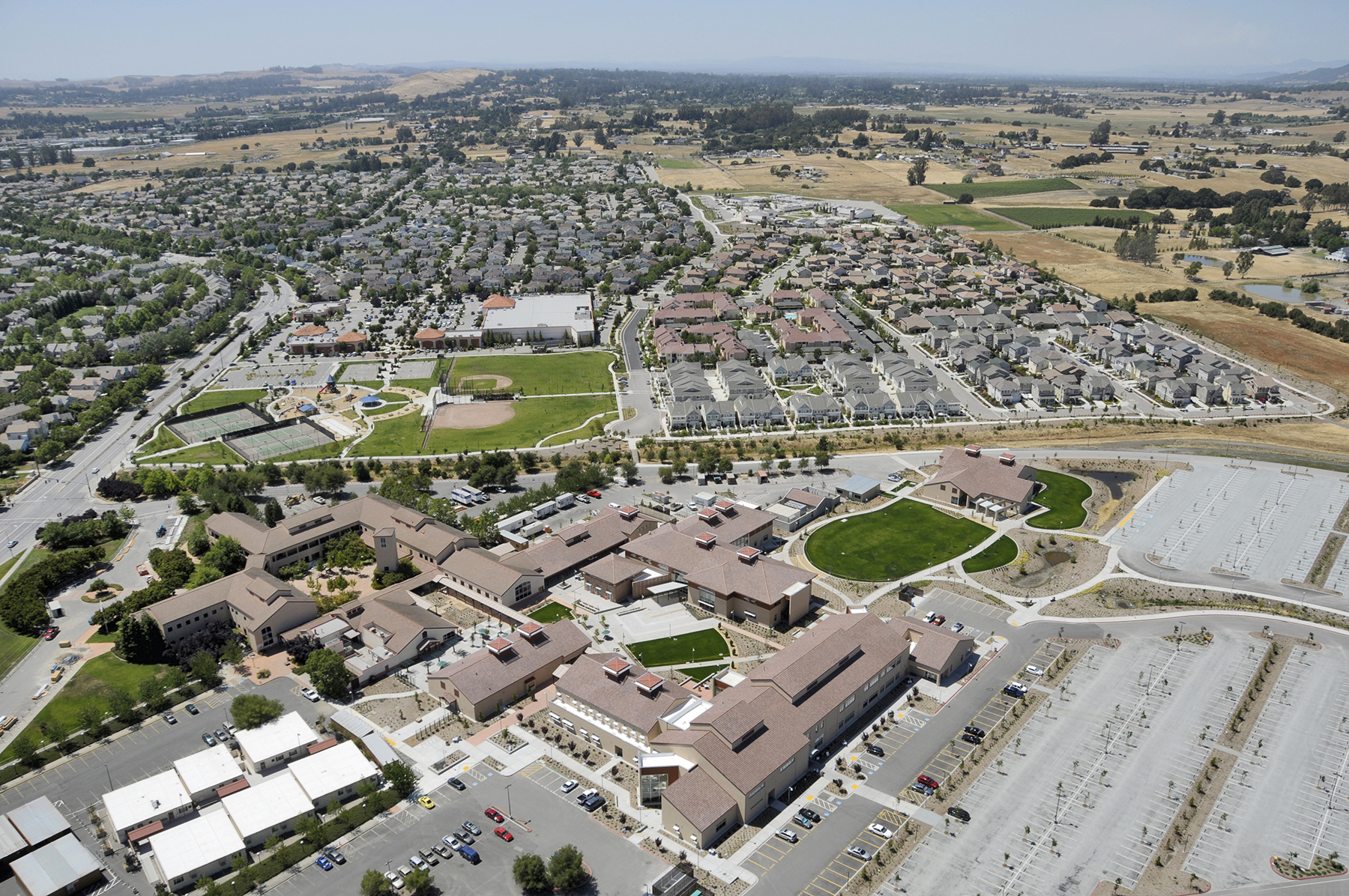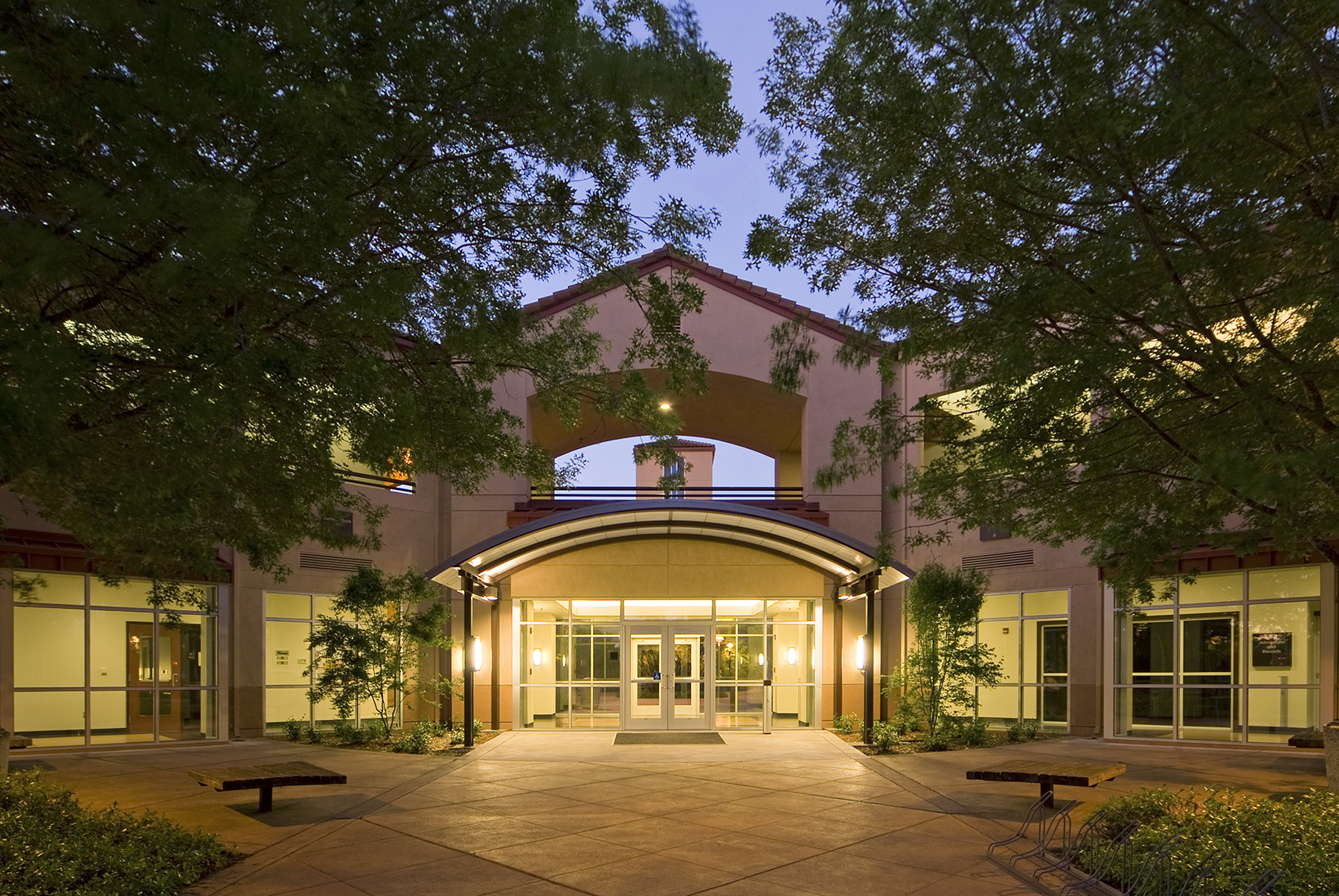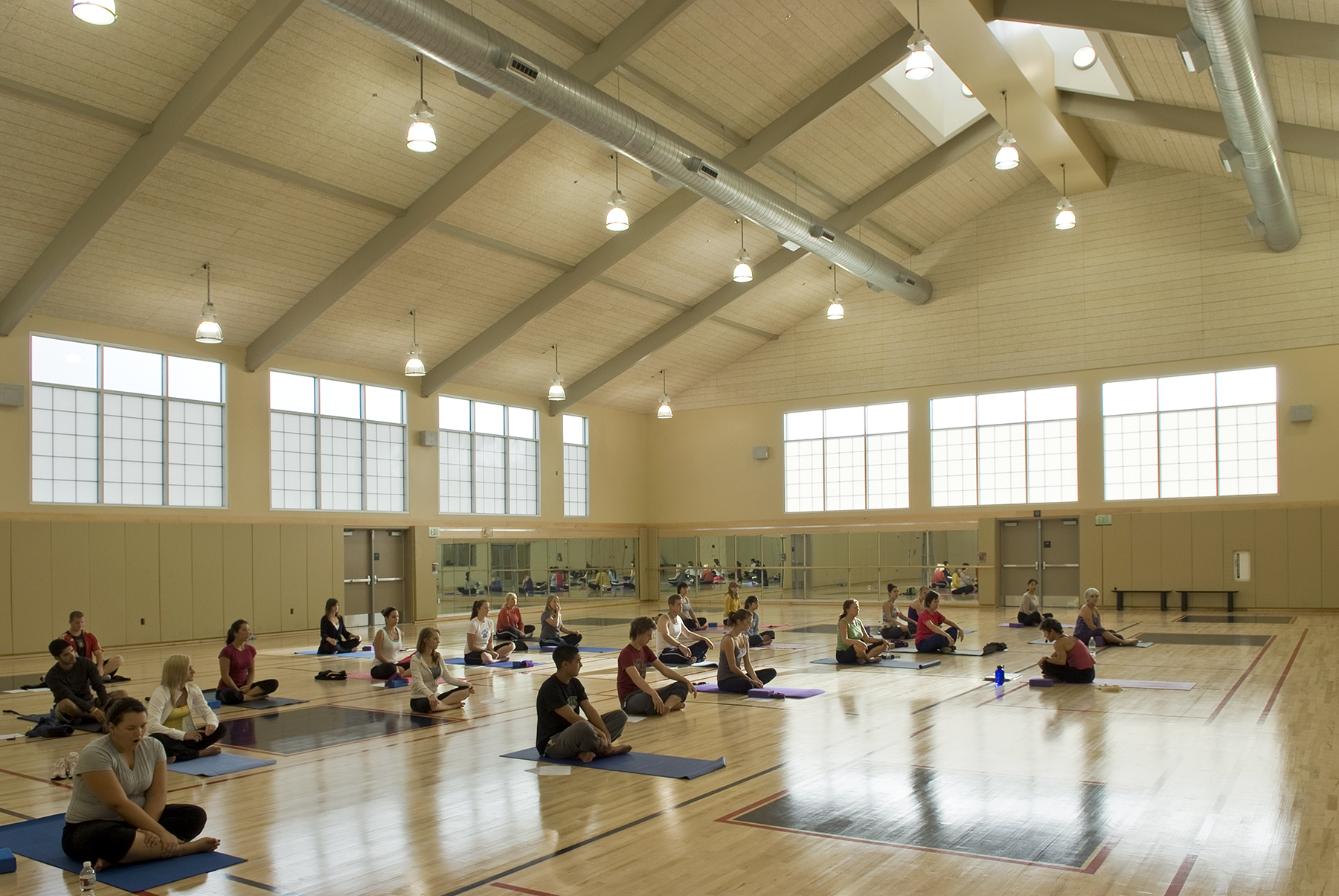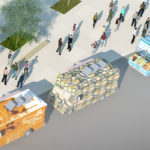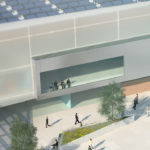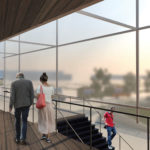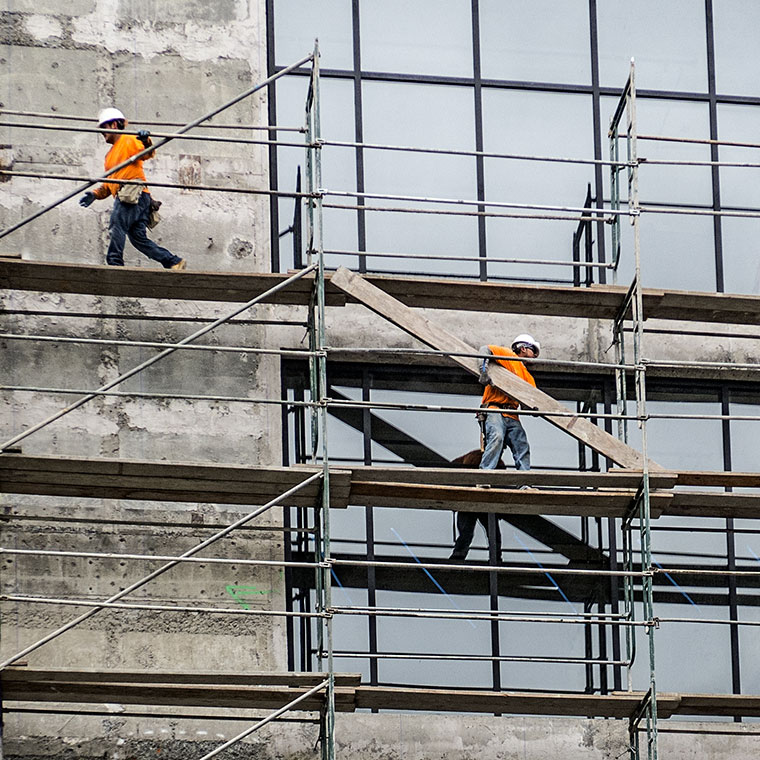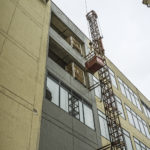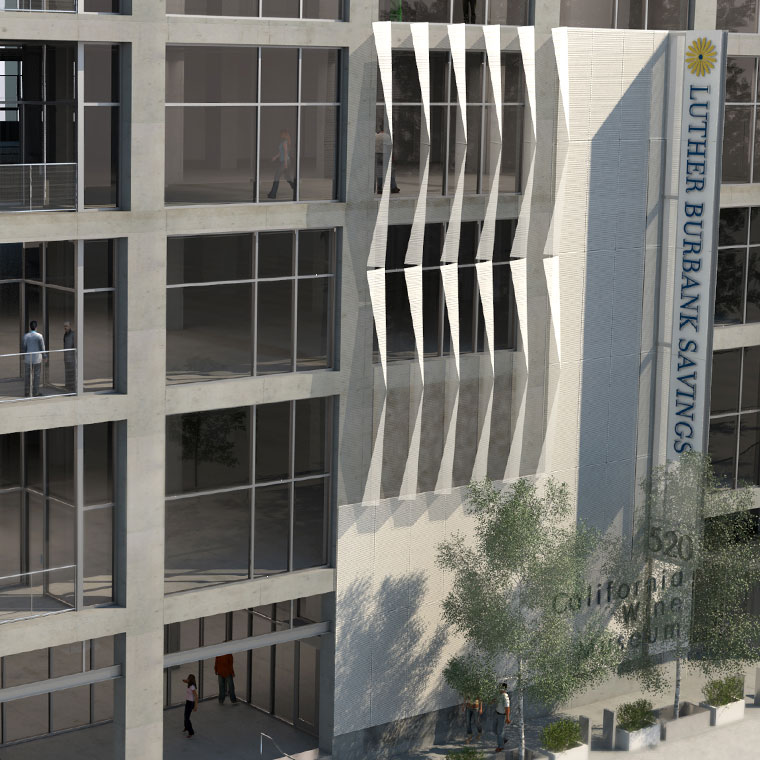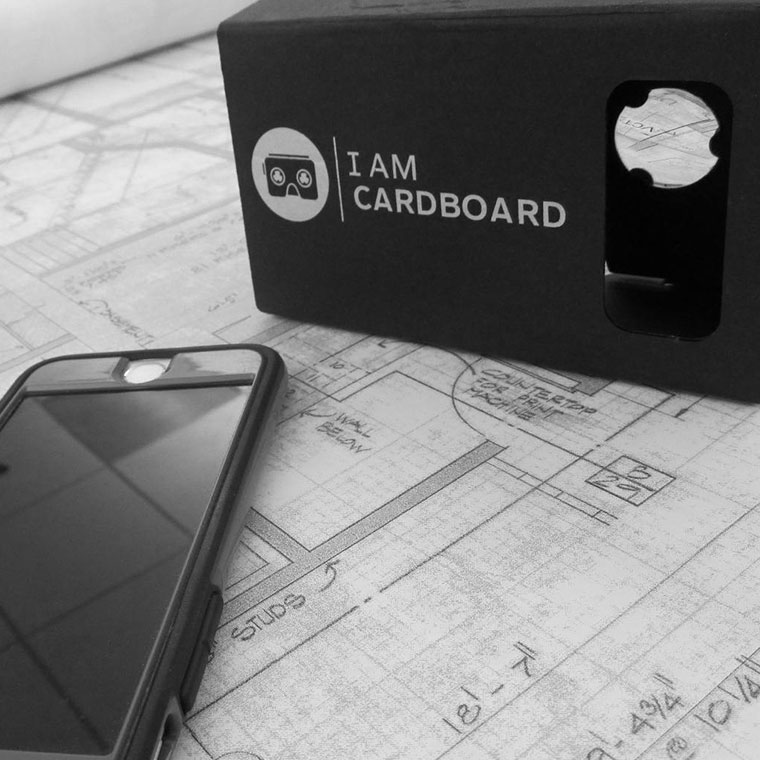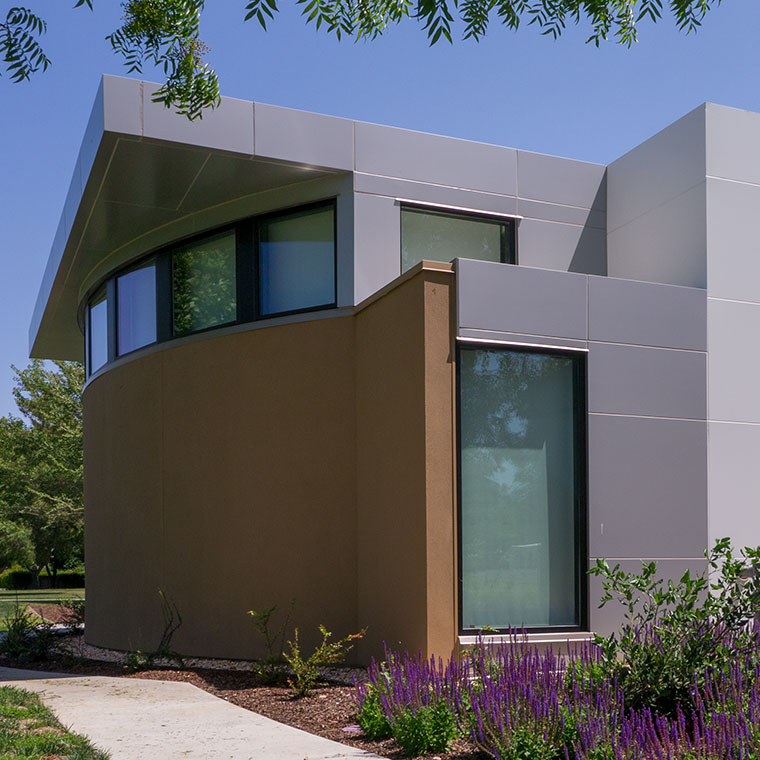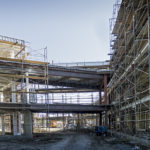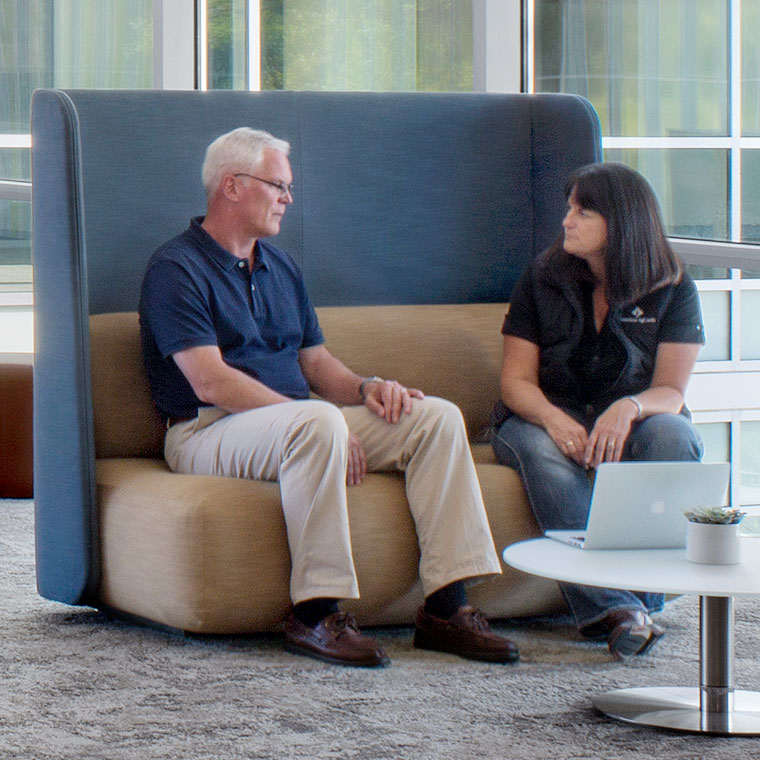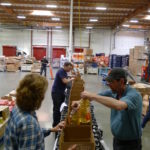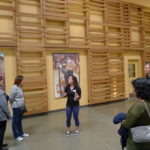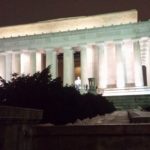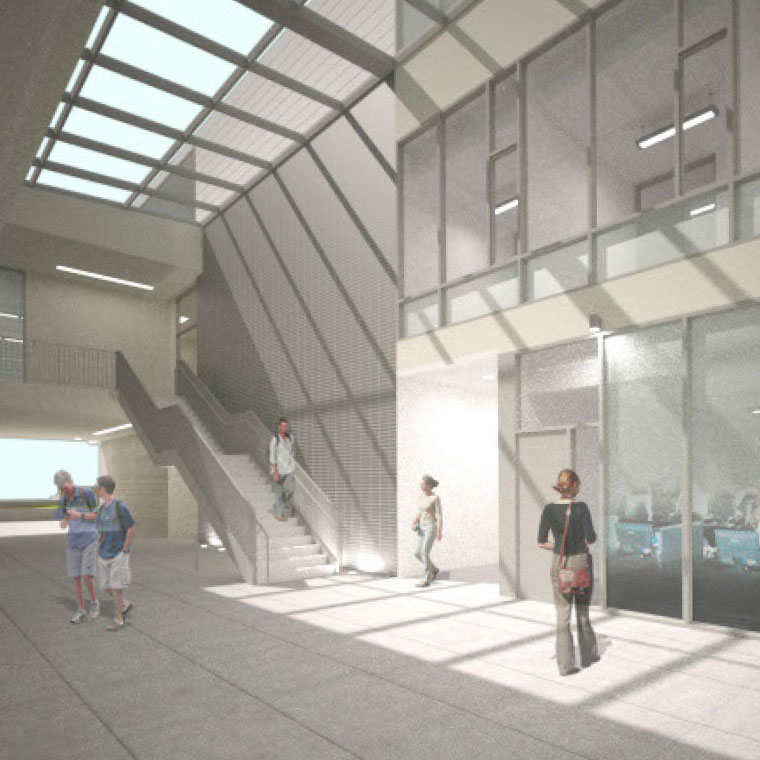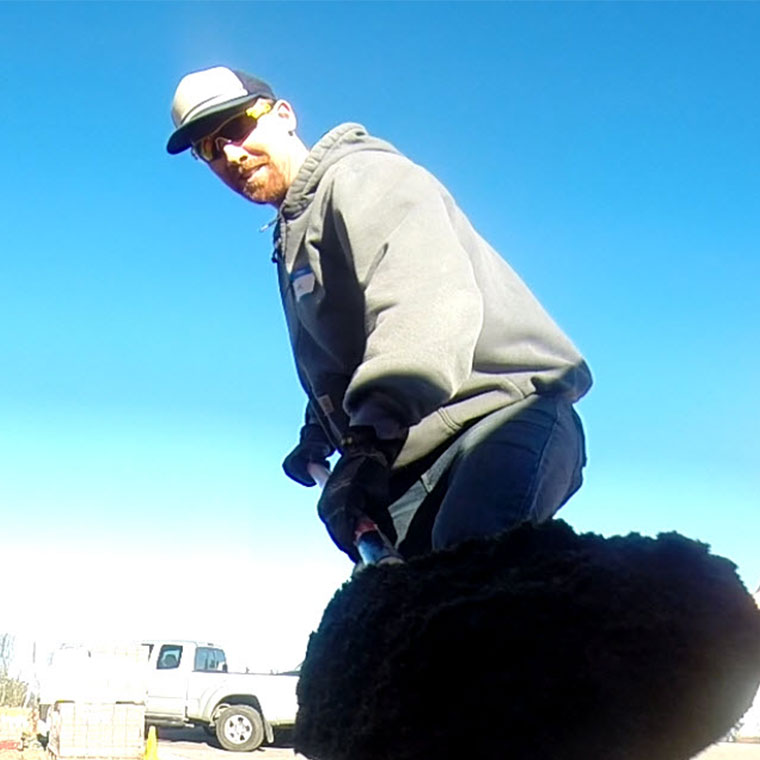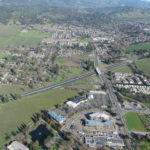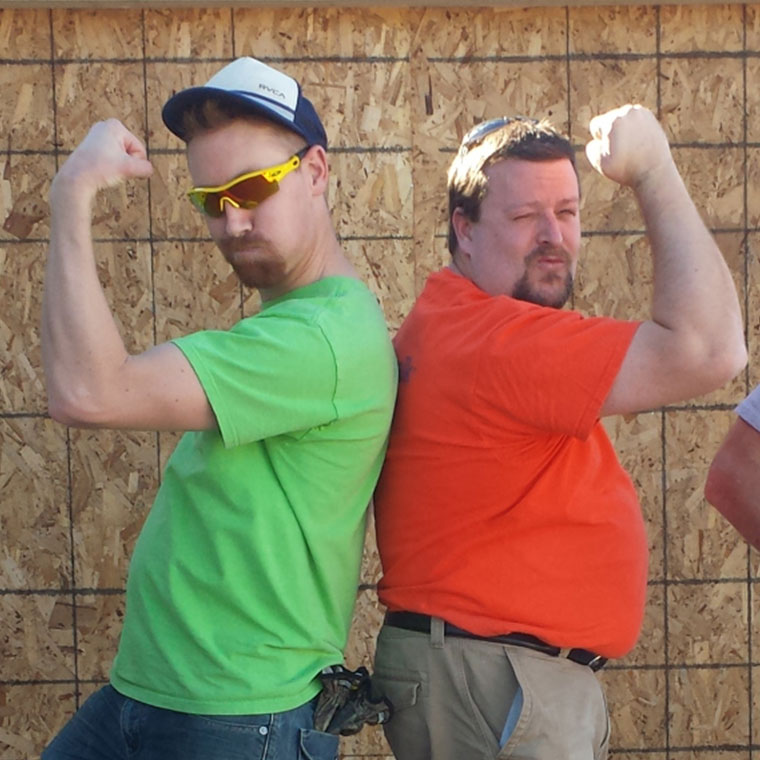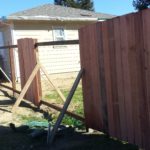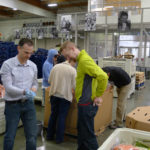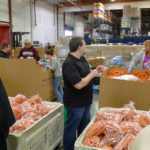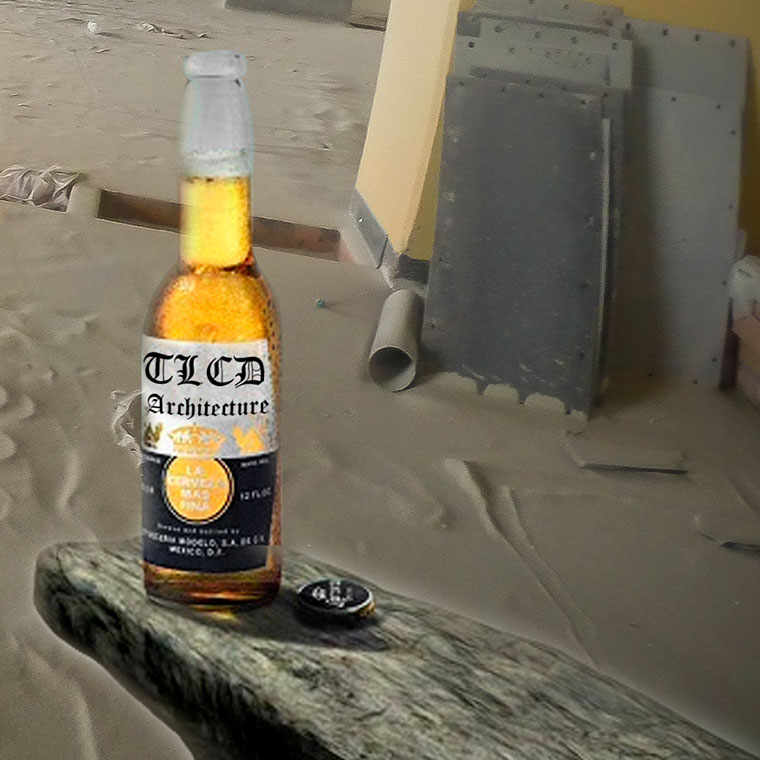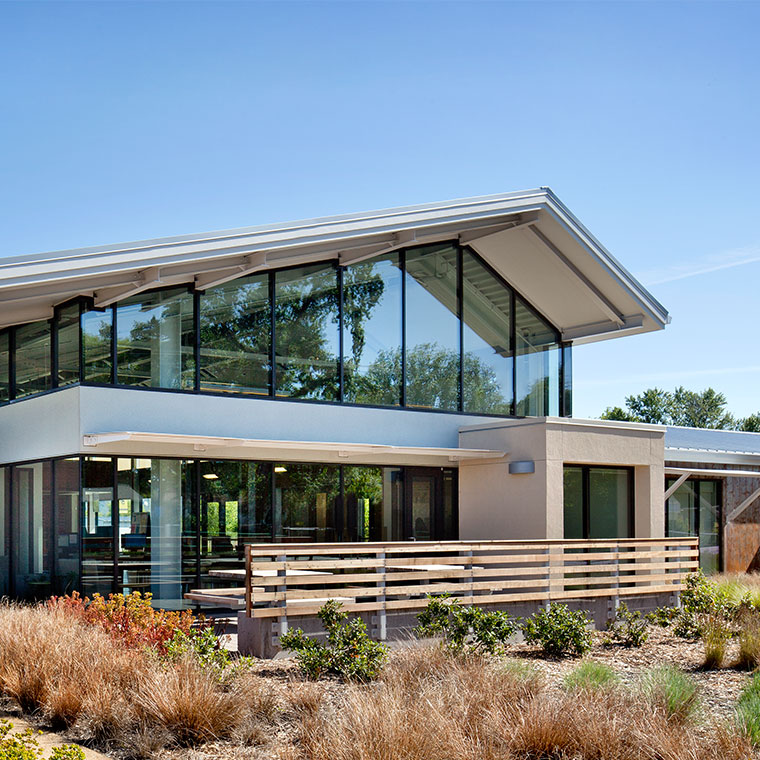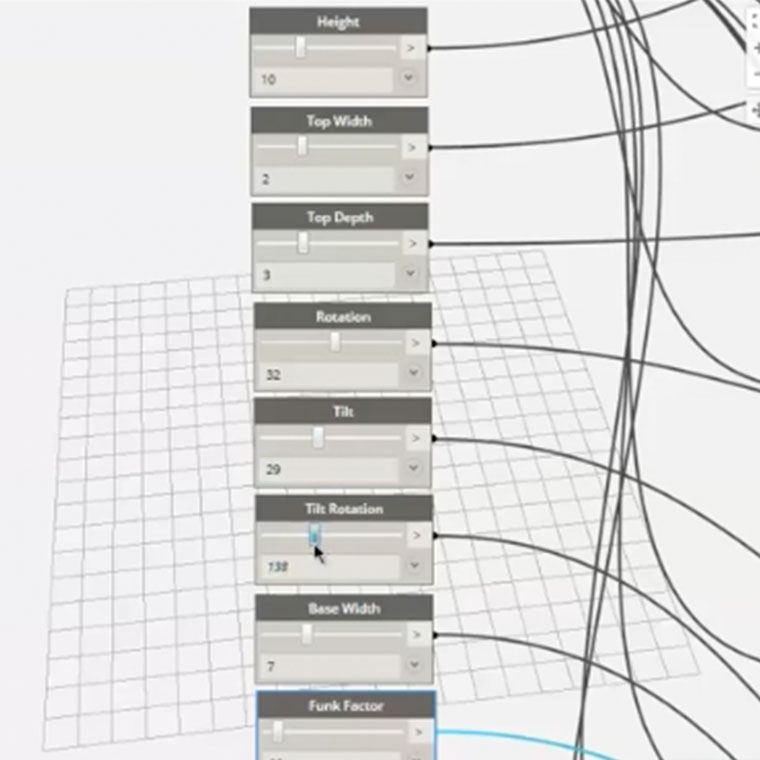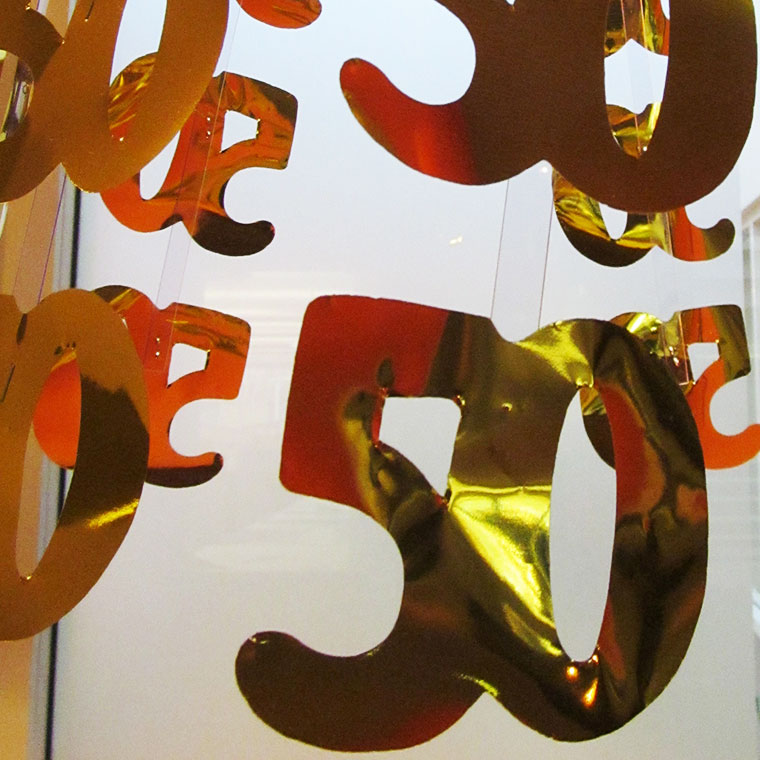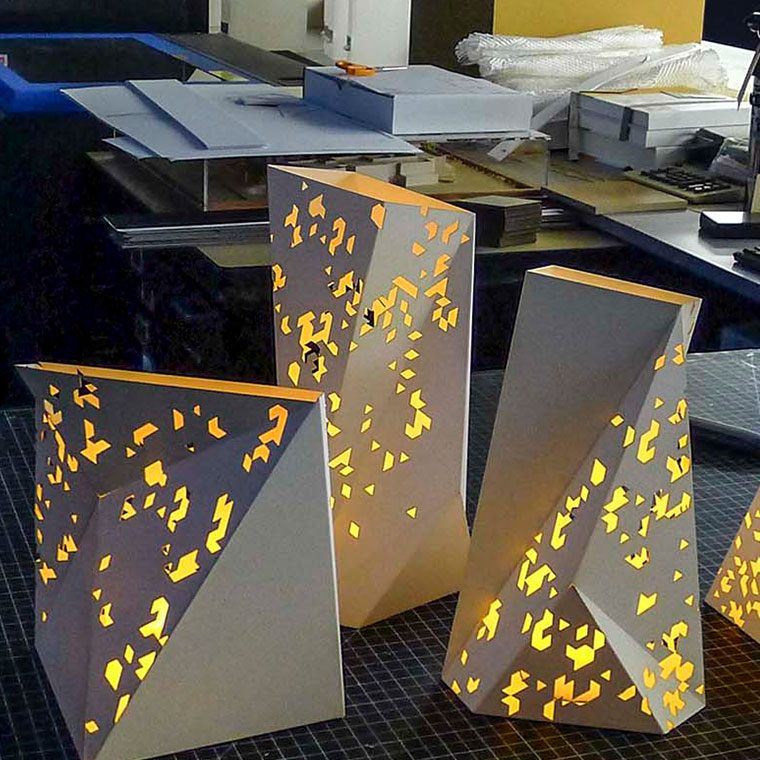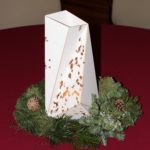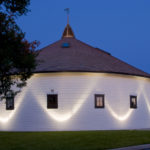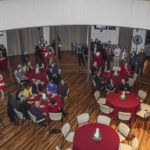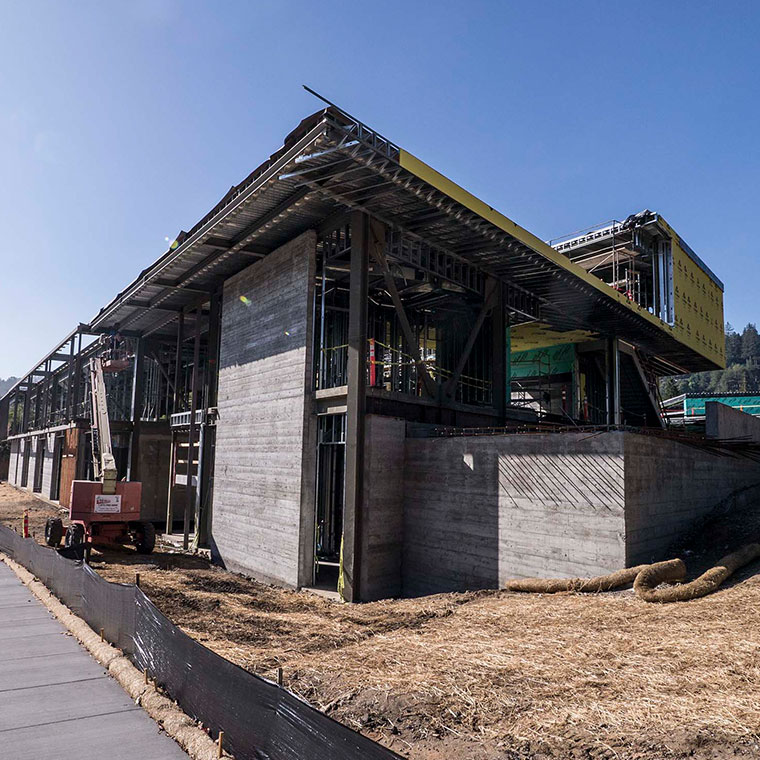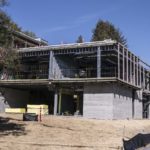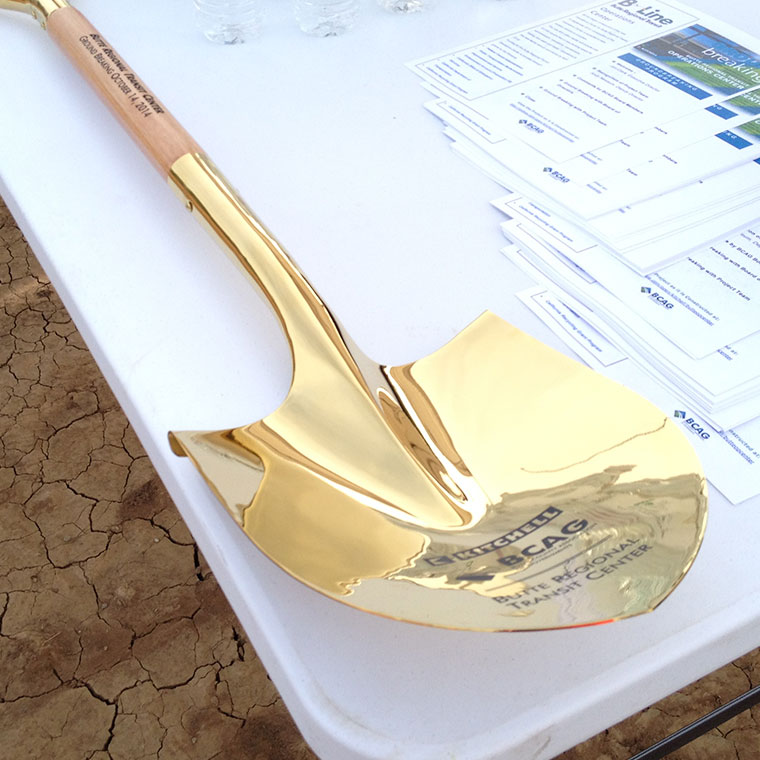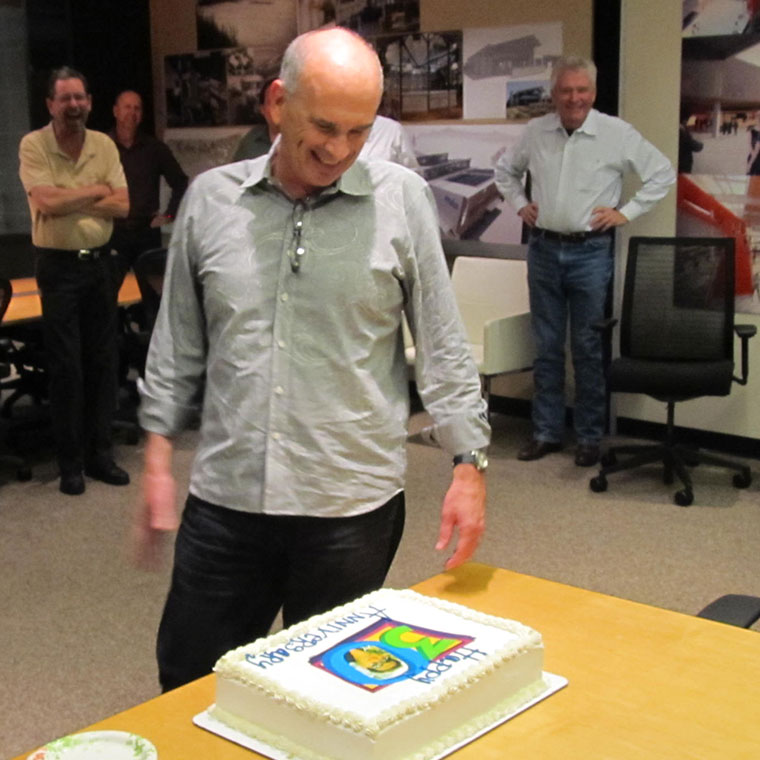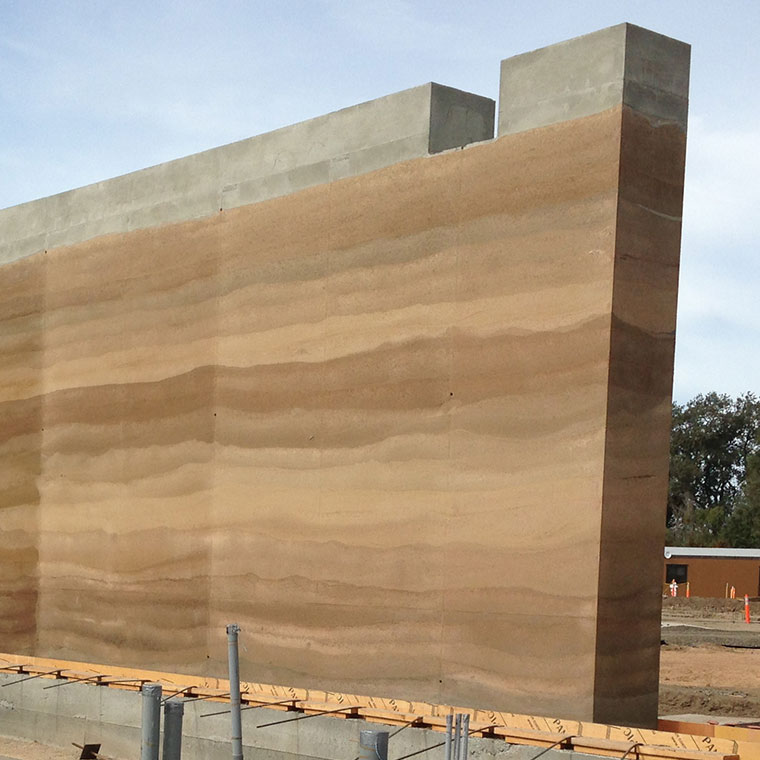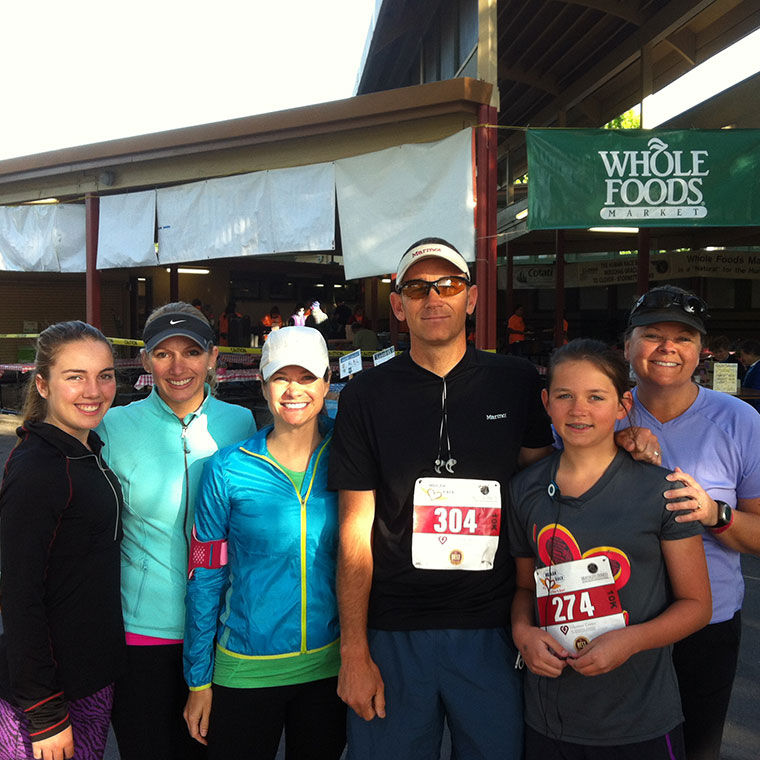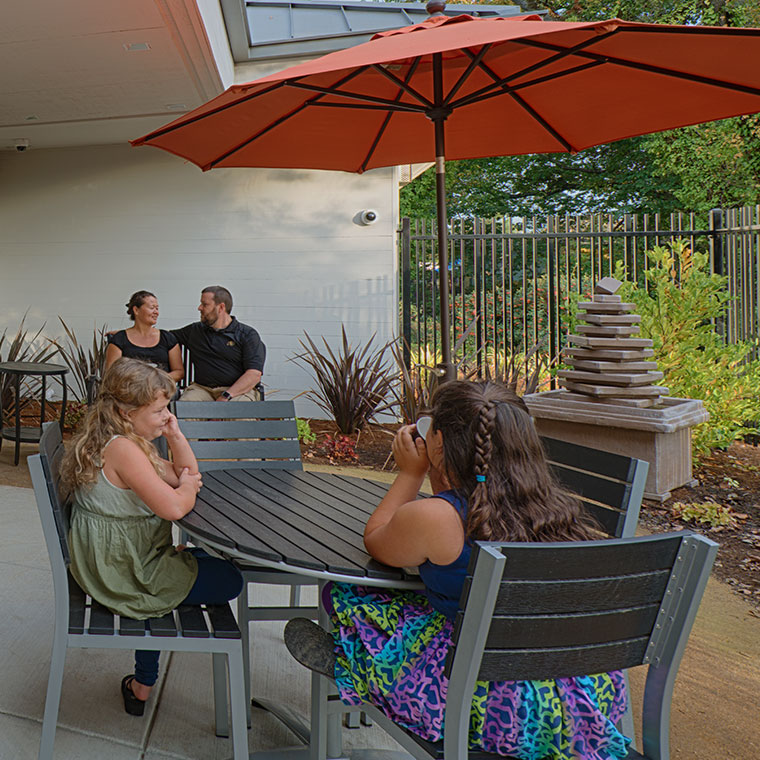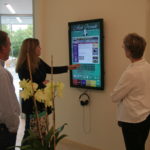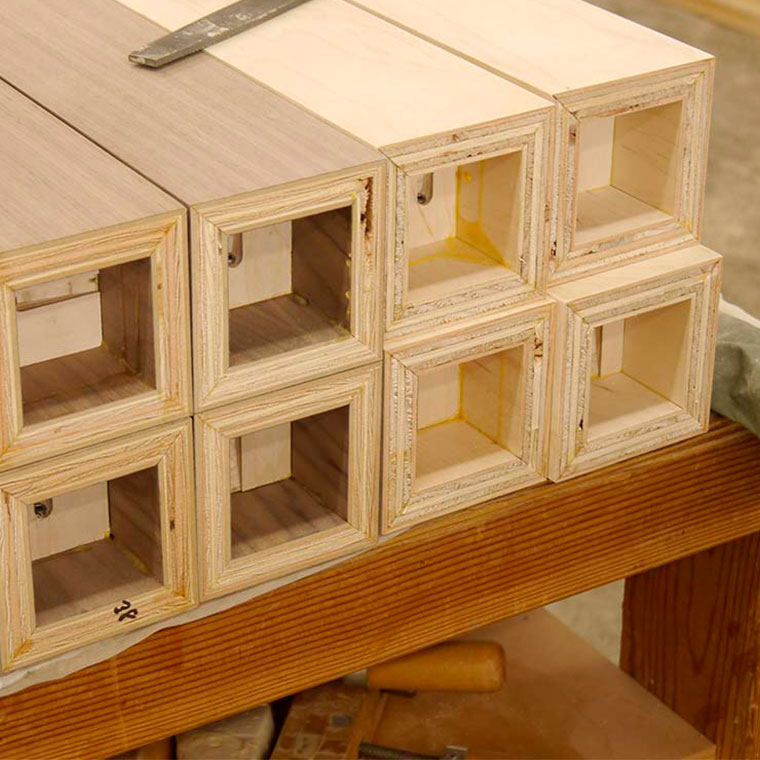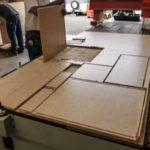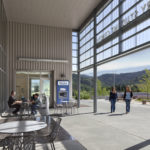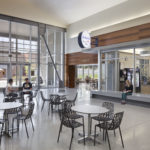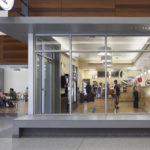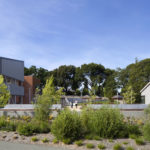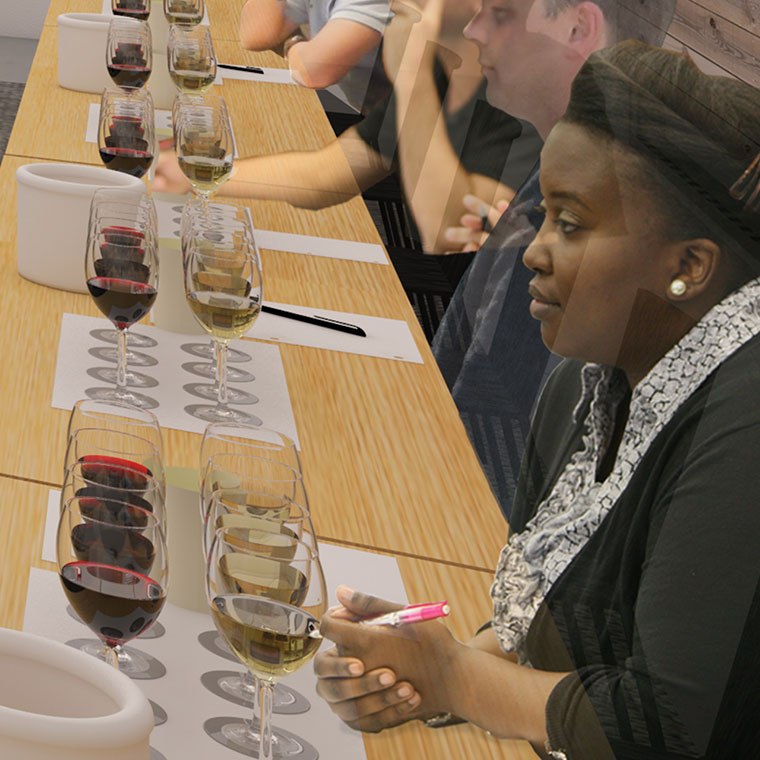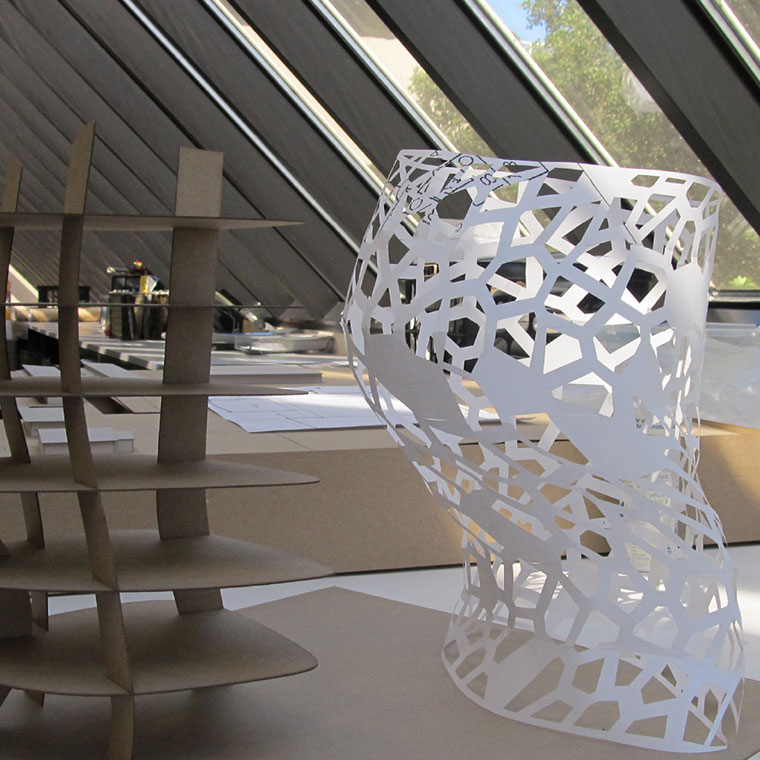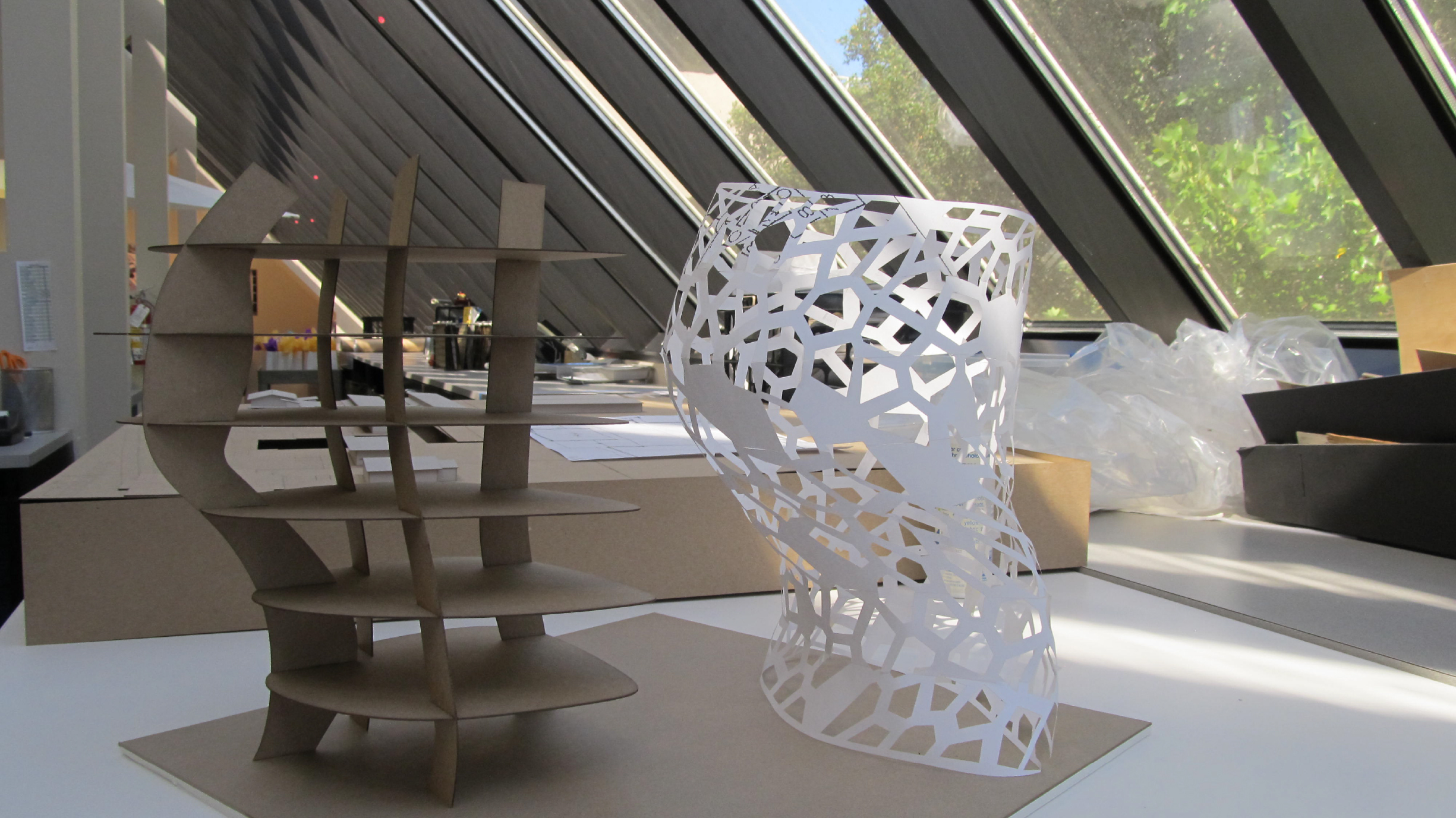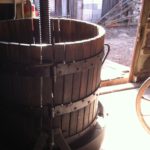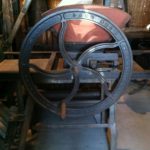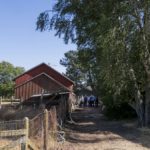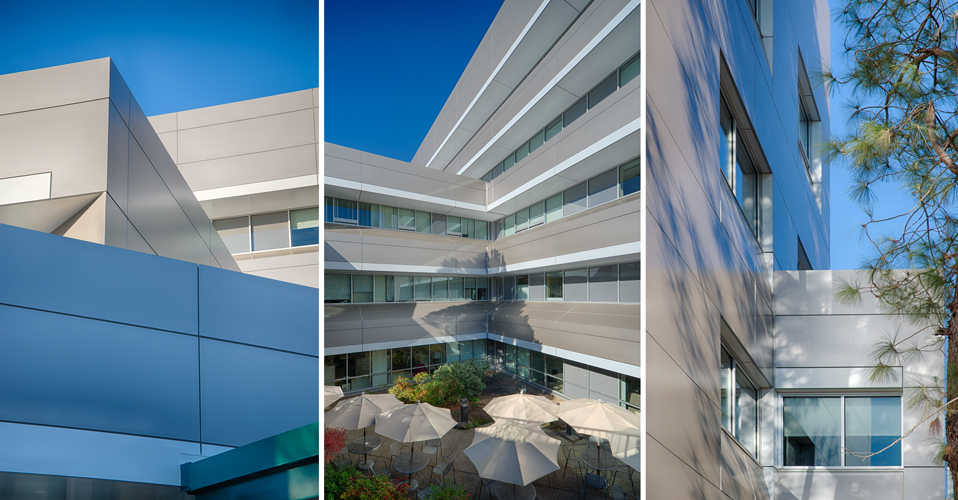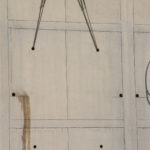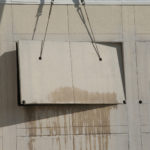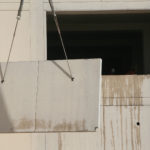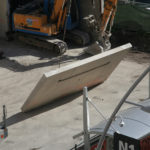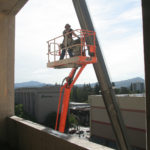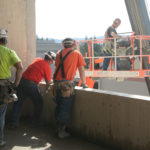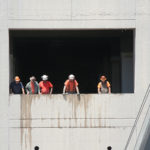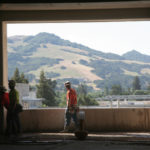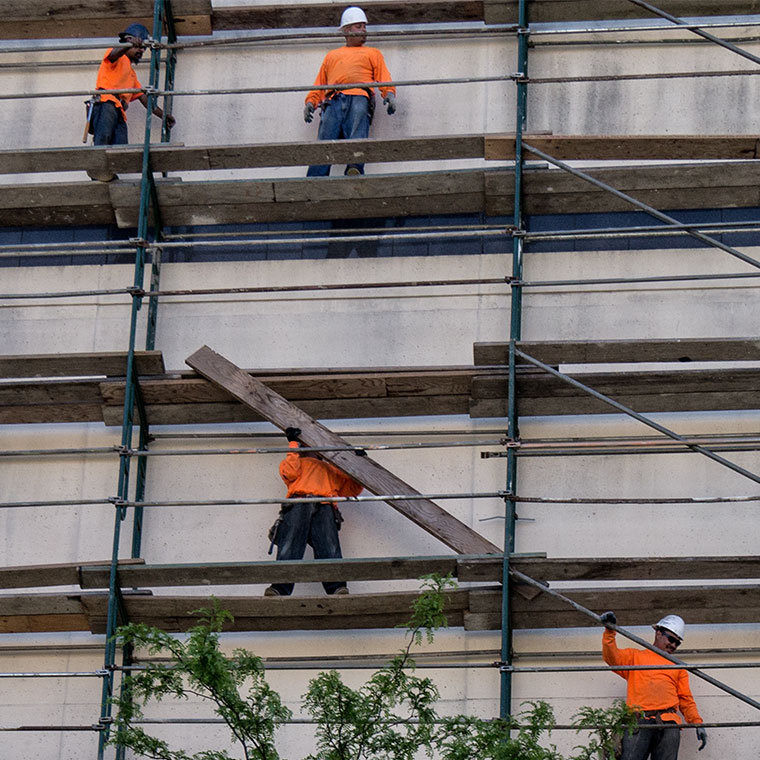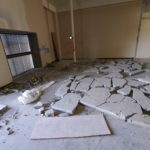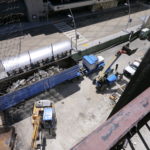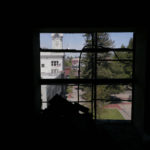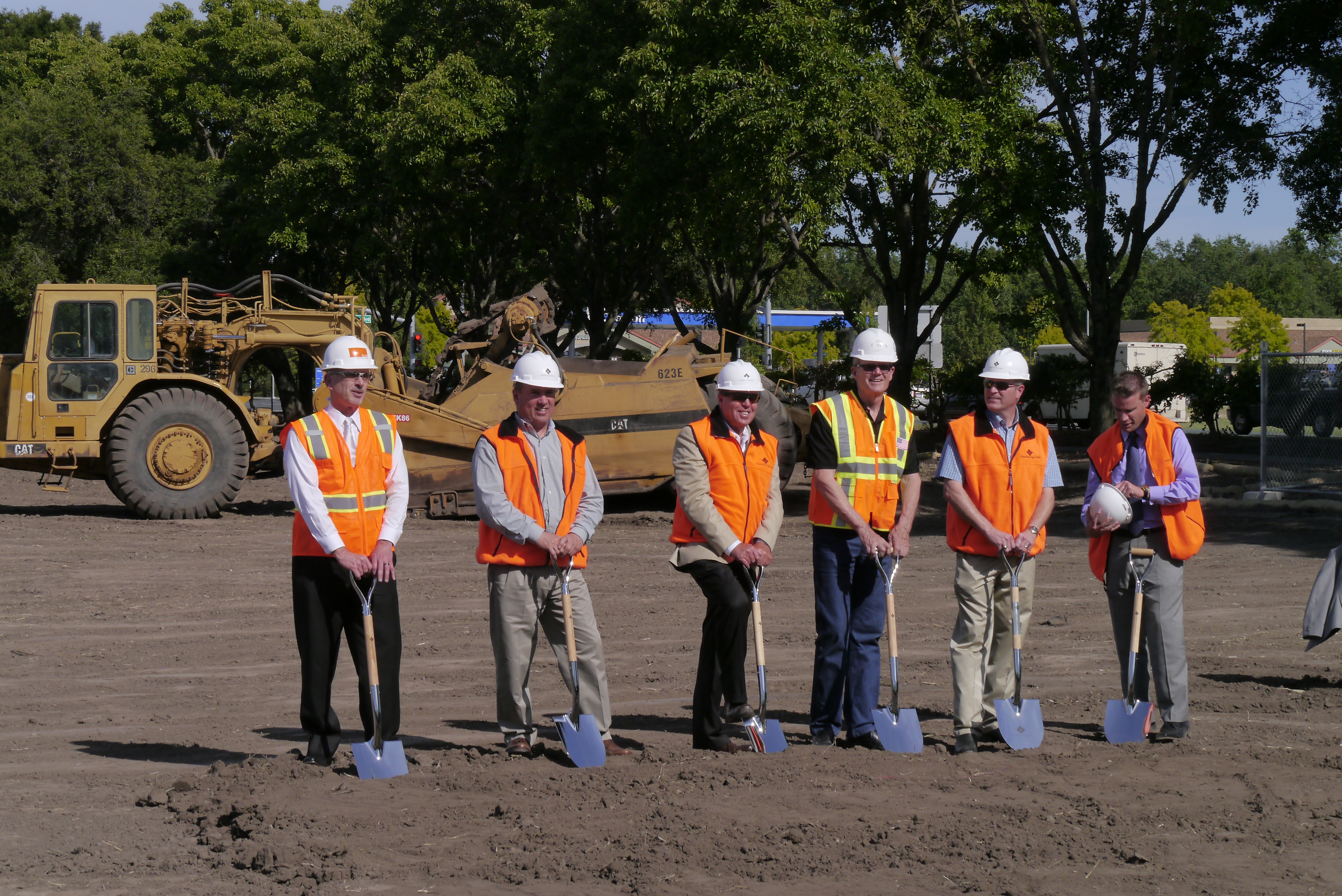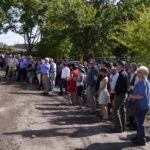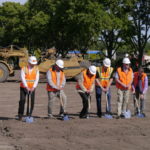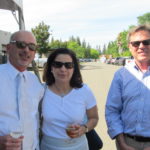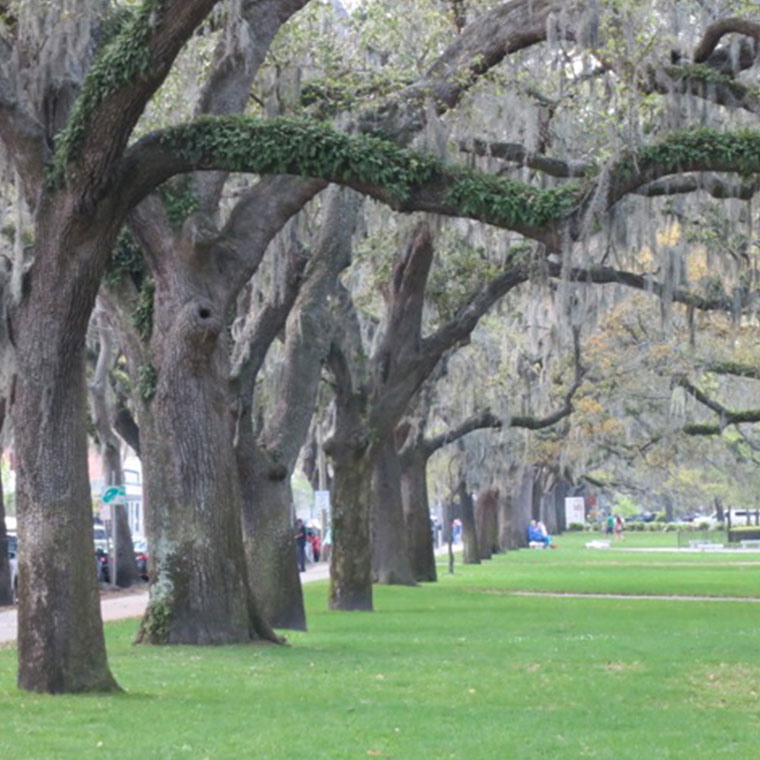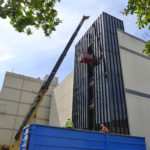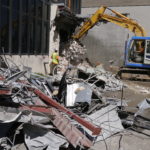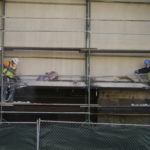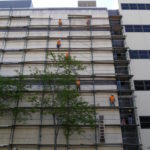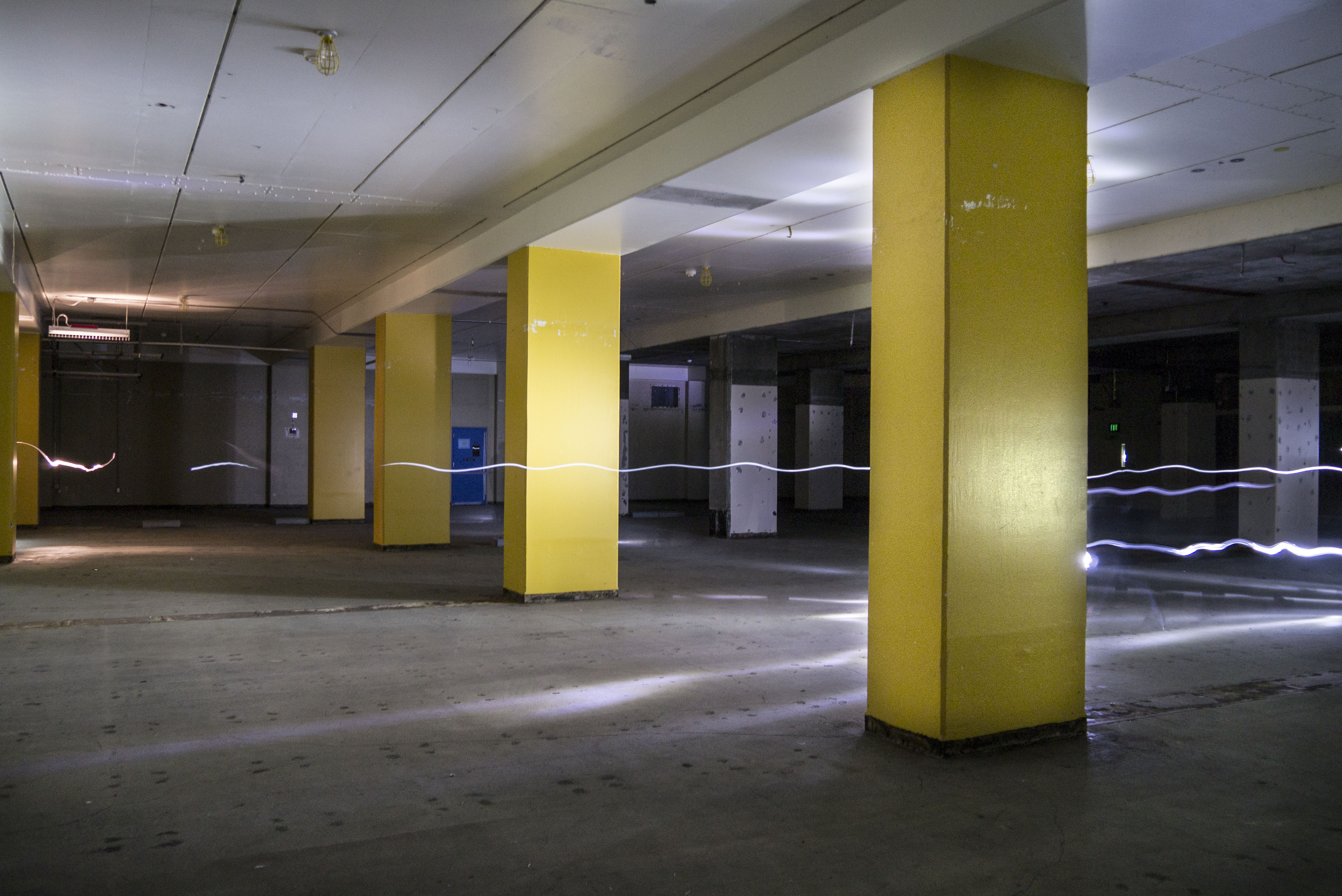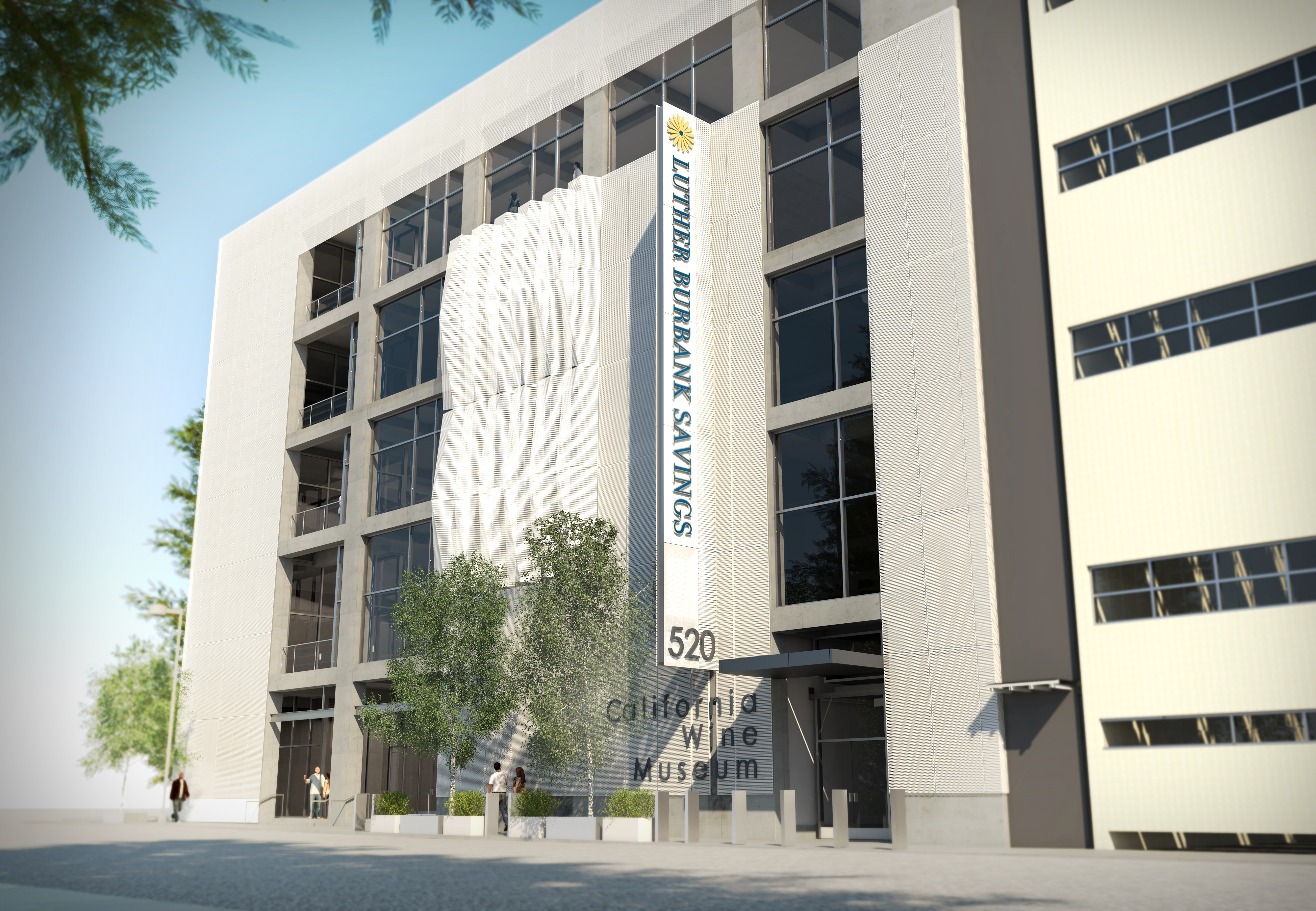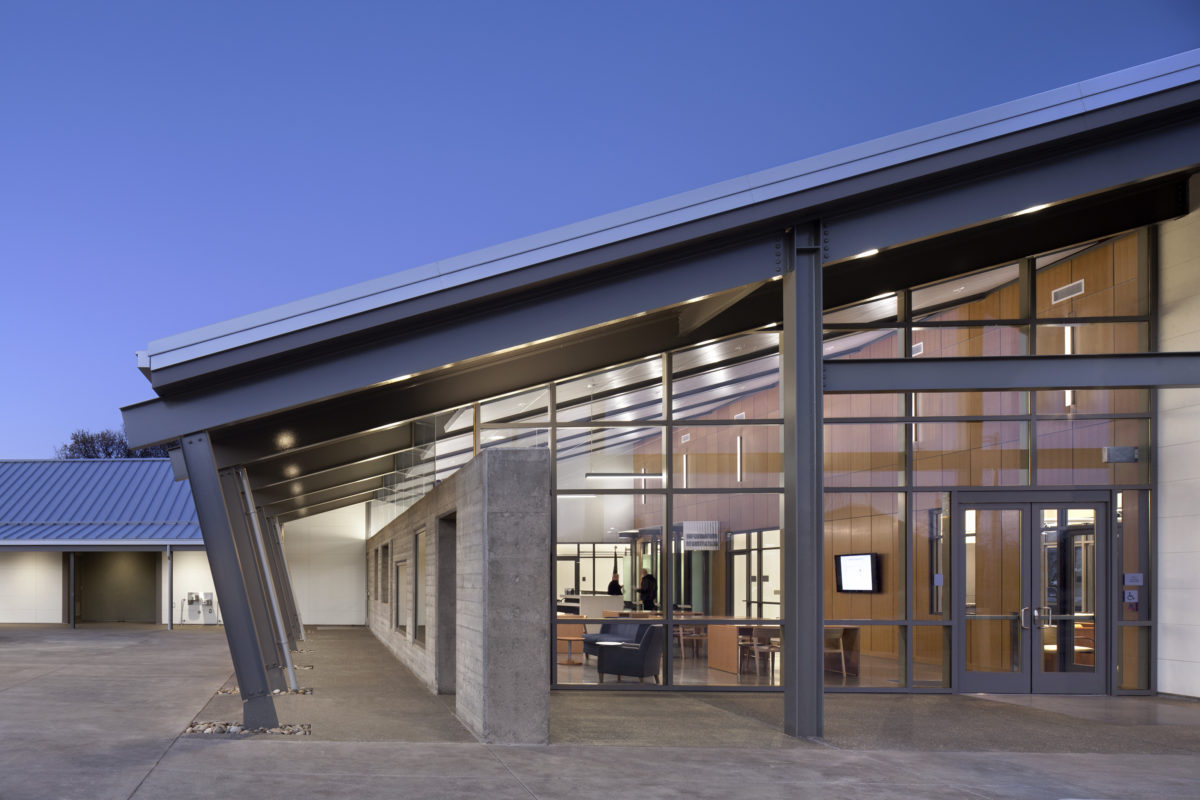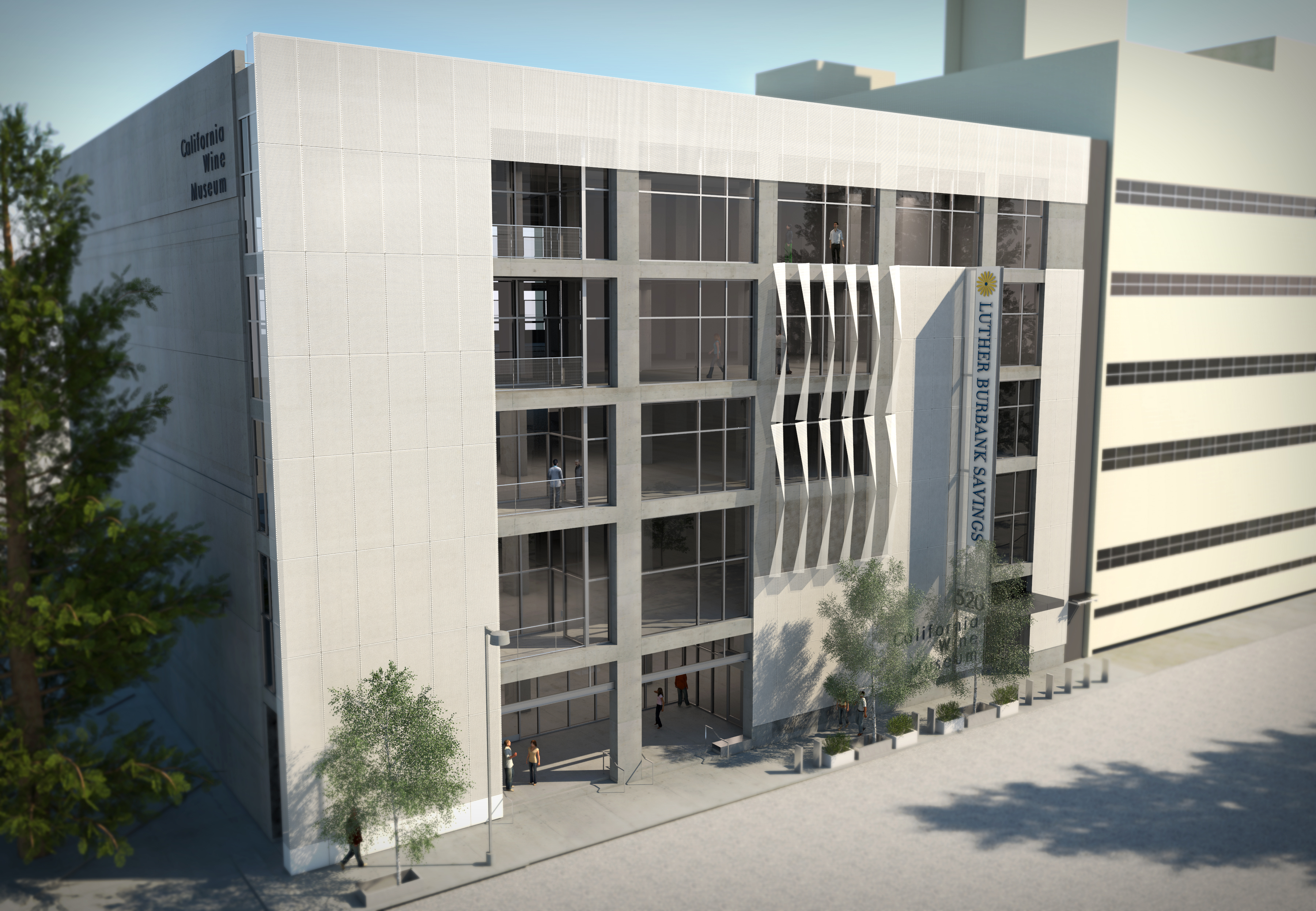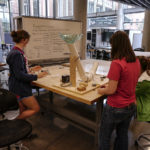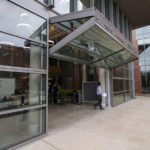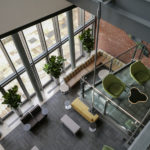Author: TLCD Architecture
Summertime STEM Fun!
Each summer TLCD Architecture welcomes incoming 9th grade students from the Mike Hauser Academy (MHA) to our office for one week to participate in a STEM related project. This county-wide program is a partnership between the Santa Rosa Metro Chamber, the Healdsburg, Rohnert Park and Sebastopol Chambers and exposes students to opportunities in professional, technology and engineering occupations.

This year our team used the international Park(ing) Day event as the basis for the project they planned for the Santa Rosa City Schools students. The week began with a walk over to the newly completed Courthouse Square to experience the square and select the parking spaces that would become the installation location for their design concepts.
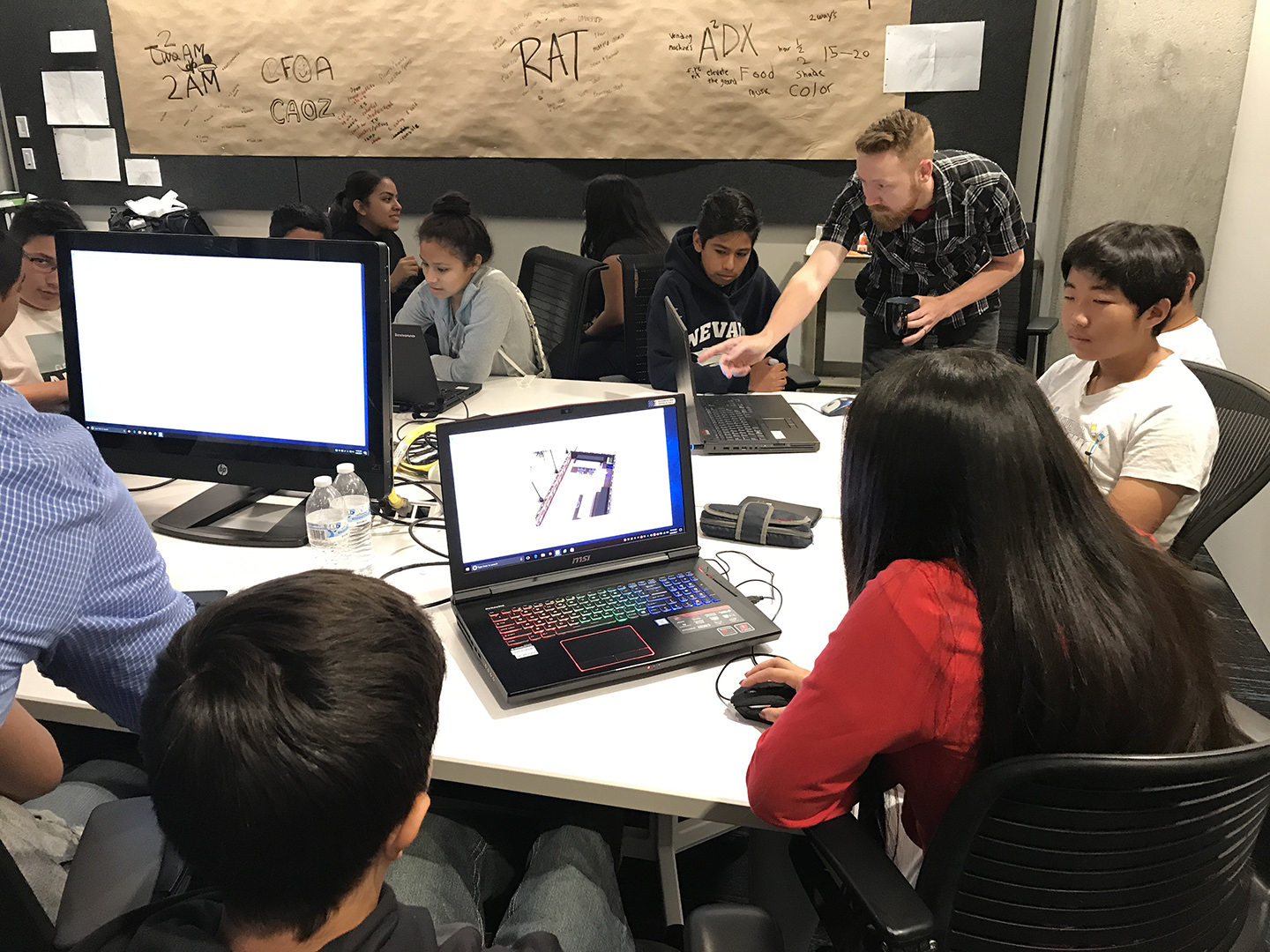
The students, lead by Instructor Jesse Hauch, split into teams to develop their concept for a pop-up urban oasis that would transform each parking space for one day. Students were encouraged to consider the audience for their concept and provide an inspiring retreat with amenities to entice tourists and the people of Santa Rosa alike. They came back to the office and worked on sketch plan diagrams in teams and then built 1/2 scale models of their space. We then had the kids take Avatar pictures against a green screen so that they would be able to place themselves in their 3D model later in the week.
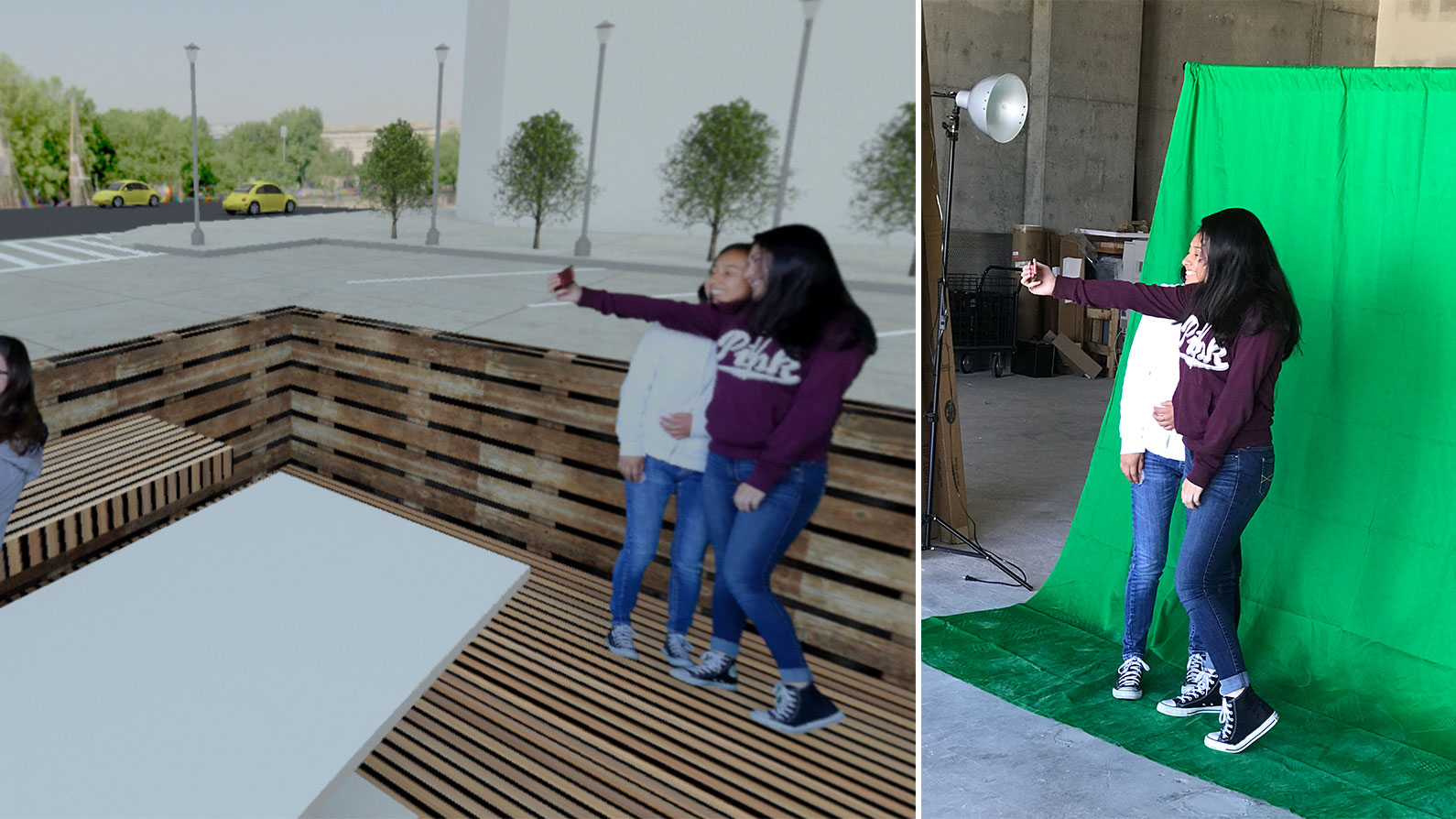
From the physical models, the students worked in Revit to create 3D models of their parking space. They especially enjoyed seeing their Avatars in the model and then experiencing their space using VR goggles. The students presented their concepts to their peers and a group of TLCD professionals on the last day – and all were invited to come back and see TLCD’s realized parklet experience on the actual Park(ing) Day this September!
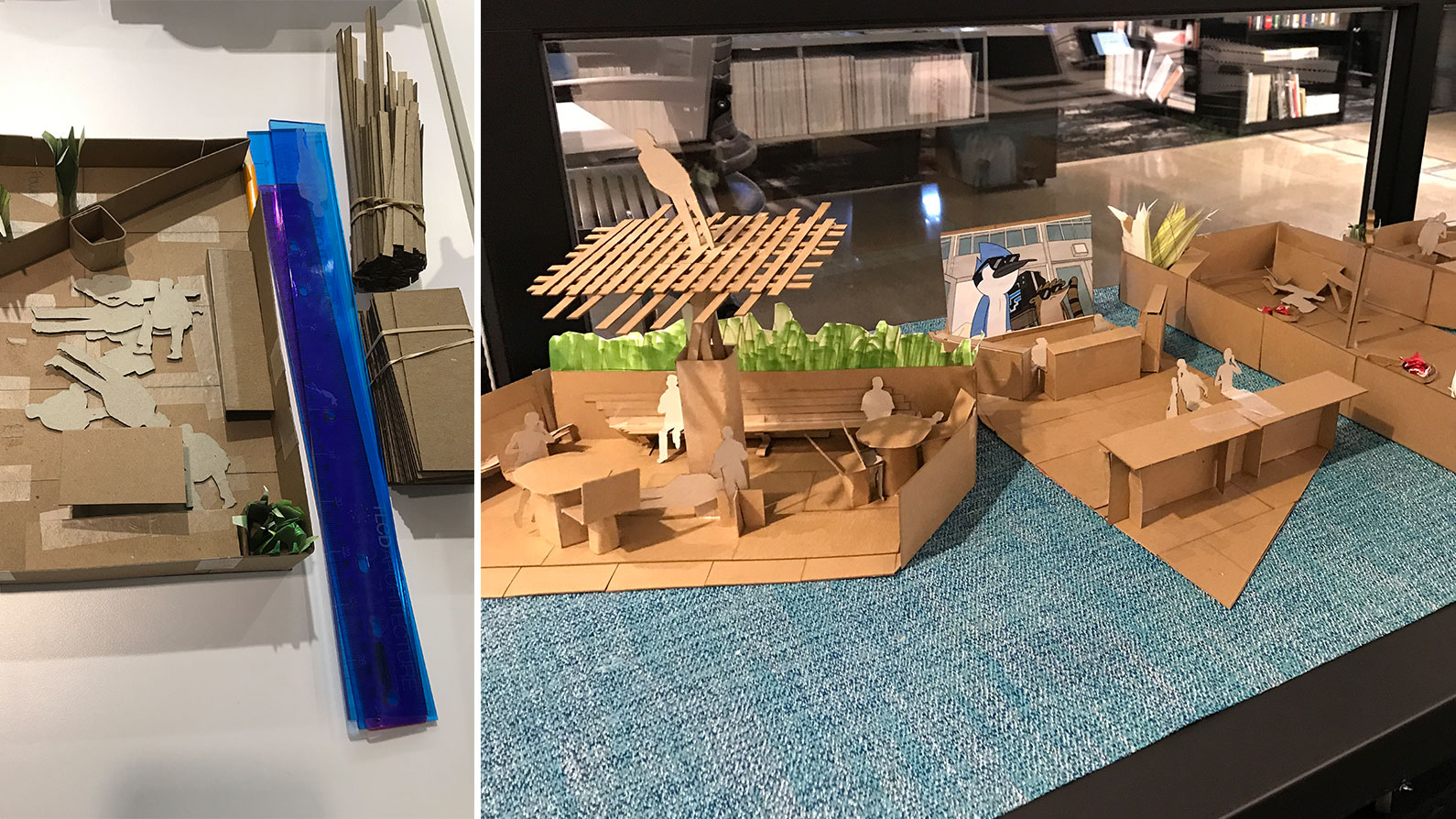
Links to the student’s renderings in Autodesk 360 Panorama:
Interior Designer Suzanne Nagorka Receives Women in Business Award
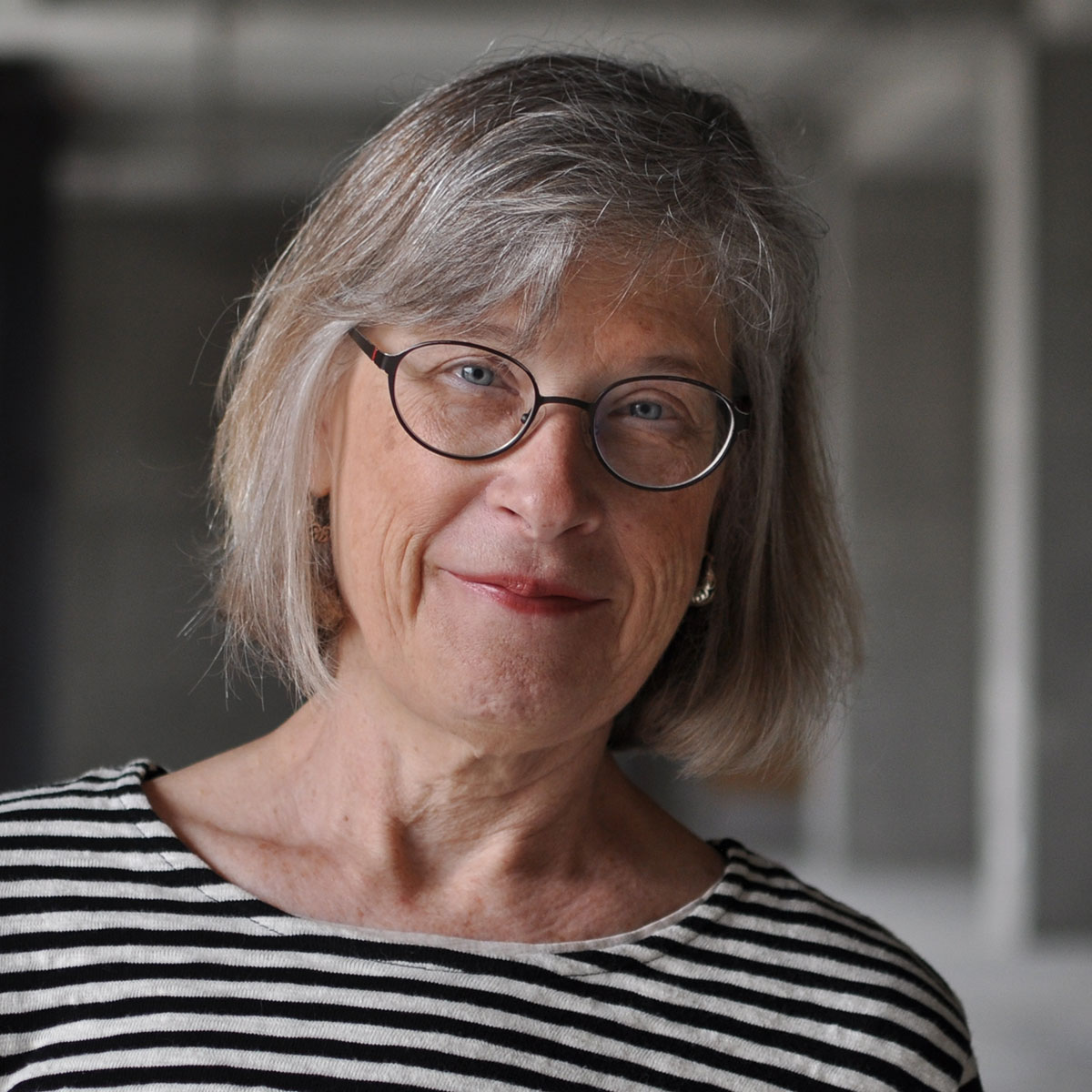 Surrounded by her colleagues and fellow award recipients, Suzanne Nagorka received a Women in Business Award at the 2017 North Bay Business Journal gala on June 21st. The award was presented to Suzanne by client (and friend) Sue Maddigan, Assistant Vice President at Exchange Bank. The evening celebrated accomplished women from throughout the North Bay in a wide range of professions.
Surrounded by her colleagues and fellow award recipients, Suzanne Nagorka received a Women in Business Award at the 2017 North Bay Business Journal gala on June 21st. The award was presented to Suzanne by client (and friend) Sue Maddigan, Assistant Vice President at Exchange Bank. The evening celebrated accomplished women from throughout the North Bay in a wide range of professions.
Suzanne has been a professional Interior Designer for over 40 years and owned her own business for 14 years. She joined TLCD Architecture in 2001 and has been an integral team member on many high-profile projects in Sonoma County. She was the Interior Designer on the SRJC Doyle Library, and most recently led the team for Interior Design and Art Consulting on the new American AgCredit Headquarters.
When asked by the North Bay Business Journal what advice she would give to a young woman entering her profession or the work world today, Suzanne shared:
A dog-eared copy of Mary Oliver’s poem The Summer Day hangs above my desk. It starts with the question “Who made the world?” and ends with a message I take to heart every day: “Tell me, what is it you plan to do with your one wild and precious life?” My advice: Never give up, and remember that what your inner critic thinks about you is none of your business!
Sound words from an amazing person and woman in business. Congratulations to Suzanne!
Visiting Artist: Petaluma Sculptor Matt Devine
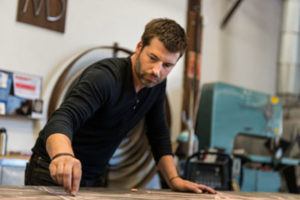 TLCD’s ongoing Wine Wednesday tradition is evolving and we are thrilled to welcome creative professionals to share their process, passion and artwork with our team. We recently had Petaluma sculptor Matt Devine join us and he brought many small scale pieces which he encouraged us to touch and examine. Matt works in metals… steel, aluminum and bronze and achieves beautiful variations depending on the metal and the finishing treatment.
TLCD’s ongoing Wine Wednesday tradition is evolving and we are thrilled to welcome creative professionals to share their process, passion and artwork with our team. We recently had Petaluma sculptor Matt Devine join us and he brought many small scale pieces which he encouraged us to touch and examine. Matt works in metals… steel, aluminum and bronze and achieves beautiful variations depending on the metal and the finishing treatment.
 Matt was commissioned by TLCD to create a custom installation at our American AgCredit project in Santa Rosa. It doesn’t get much better than designing a building from the inside out, with custom furniture solutions and an amazing collection of art.
Matt was commissioned by TLCD to create a custom installation at our American AgCredit project in Santa Rosa. It doesn’t get much better than designing a building from the inside out, with custom furniture solutions and an amazing collection of art.

Representation in the San Francisco Bay area is by Simon Brietbard Fine Arts.
IES Outdoor Lighting Award Goes to American AgCredit
The American AgCredit Headquarters building has received the Outdoor Lighting Design Award of Excellence from the San Francisco Chapter of the Illuminating Engineering Society. TLCD Architecture’s electrical engineer and lighting designer was Summit Engineering of Santa Rosa.
The building features numerous vertical strips of lighting throughout the building’s exterior zinc skin. These strips will eventually be computer controlled to generate changing patterns of light in the evening. Another key lighting feature are the landscape forms on the rooftop deck that creative an ethereal glow at night.
This was an incredibly fulfilling collaboration with the team at Summit Engineering.

3D Building Scanning as a Collaboration Tool
 The world of architecture and construction is rapidly expanding. The tools at our disposal are increasing every day, and keeping up with trends is critical to our profession.
The world of architecture and construction is rapidly expanding. The tools at our disposal are increasing every day, and keeping up with trends is critical to our profession.
While TLCD Architecture has been modeling all of our projects in BIM for some time now, the evolution of 3D scanning is finally getting to a point where the costs/benefit tradeoff makes it a no-brainer. 3D scanning is no longer a luxury, but a staple for modern construction.
We recently had the opportunity to collaborate with our friends at Truebeck Construction as they performed a 3D scan of the interiors of the soon-to-be Wine Spectator Learning Center at Sonoma State University. We have worked with Truebeck before and they do exceptional work, but we were amazed to learn that they have their own in-house crew to perform these scans. Alex and Drew walked us through the process as they moved through the building.



The entire shell interior took them approximately 4 hours to scan. The scanning equipment uses a gimbaled laser and camera combination, and utilizing a mirrored system it spins and takes thousands upon thousands of tiny photographs paired with a distance reading measured by laser. Each point on a wall is within roughly 1/8” of each other, and is captured a minimum of four times, and the average distance is taken. As they move the tripod-mounted scanners from place to place to capture all the hidden nooks and corners, they also relocate a series of plastic spheres. These spheres are used later on to triangulate position and match up all the various scans they have taken, similar to pasting together photographs to get a single continuous montage from several photos.
The resulting ‘point cloud’ can be thought of as a three-dimensional photograph, one that with the right software, can be explored as a walk-through. This software comes in handy especially on remodel projects, where it can be used to check the accuracy of the as-built conditions (columns are known to be off by a foot or more at times), as well as documenting the rough constructions before finishes are applied. For example, it’s a useful tool to capture the path of a plumbing run, electrical conduit, or other utilities in the wall before drywall is applied or concrete is poured.
When the point cloud is placed within our digital model (a 3D model of the building we use to generate our drawings), we can quickly assess the variations between our model and the built conditions. It’s an exciting time to work in architecture. Thanks to our friends at Truebeck for supplying the point cloud and walking us through the process.
TLCD Architecture’s Office Attains LEED Certification!
 We just learned that TLCD’s Office has achieved certification under the LEED 2009 Commercial Interiors rating system. While this is not our first LEED certification, it’s particularly meaningful since it’s our own office environment.
We just learned that TLCD’s Office has achieved certification under the LEED 2009 Commercial Interiors rating system. While this is not our first LEED certification, it’s particularly meaningful since it’s our own office environment.
Leadership in Energy and Environmental Design (LEED) is one of the most popular green building certification programs used worldwide. Developed by the non-profit U.S. Green Building Council (USGBC) it includes a set of rating systems for the design, construction, operation, and maintenance of green buildings, homes, and neighborhoods that aims to help building owners and operators be environmentally responsible and use resources efficiently.

We are proud to have designed a very sustainable office environment, and hope that it will spark interest on the part of our clients and other visitors to our office to do the same.
Commercial Architecture: Metal Origami Cladding Featured on Cover
When TLCD Architecture set out to transform a former telephone switching building in downtown Santa Rosa into a mixed-use project called Museum on the Square, our goal was to turn the windowless structure into a vibrant, urban building with visual appeal. In order to achieve this objective, we overlaid the concrete structure with perforated aluminum panels by McNichols Perforated Metal. Working with fabricator and installer B.T. Mancini, TLCD designed a series of bent panels to achieve a unique sculptural effect. Low and behold, these “origami’ panels (as we call them) ended up on the cover of Commercial Architecture Magazine, along with an article about our use of the perforated metal panels.
Top Projects 2016: Large and Small Scale Office Space
The North Bay Business Journal held it’s 2016 Top Projects event in December where 20 North Bay projects were recognized and celebrated by the business community. TLCD Architecture was the architect on two distinctly different projects in the “Office” category.
American AgCredit is a 120,000 sf financial headquarters building for the nation’s largest agricultural lender. Our team worked with the client to design a flexible office environment that encourages collaboration and supports a strong company culture. Read more on our blog post “Creating Unique Spaces That Enhance Culture”.
 TLCD’s new Office in downtown Santa Rosa is much different in scale but also supports workplace culture. It’s not often that architects have the opportunity to design their own space, and the former AT&T Building presented the perfect urban canvas for us. The design allows the natural character of the building to come through, while creating a very contemporary workplace.
TLCD’s new Office in downtown Santa Rosa is much different in scale but also supports workplace culture. It’s not often that architects have the opportunity to design their own space, and the former AT&T Building presented the perfect urban canvas for us. The design allows the natural character of the building to come through, while creating a very contemporary workplace.
Thanks to the North Bay Business Journal for hosting this event and celebrating the built environment in the North Bay!
Creating Unique Spaces that Enhance Culture
From the beginning, American AgCredit challenged TLCD Architecture to design their headquarters building with “movement” in mind. Concepts like clear circulation, inside-outside views, places to connect and flex space were part of the design conversation. This allowed us to explore opportunities beyond traditional office zones and look at the spaces “in-between” as a way to enhance work culture. Interior spaces range from furnished skybridges to quiet alcoves, while exterior spaces are as diverse as a large landscaped central courtyard to a ping-pong deck. There are many examples throughout the new American AgCredit Headquarters building – and they demonstrate how carefully crafted detail, finishes and artwork can help create a truly exceptional workplace.
These concepts are not unique to the office environment. We bring many of these considerations to our work for educational and healthcare clients. The opportunity to design these “in-between” spaces for collaboration, communication and well-being at a college or medical campus has far-reaching impact.
AIA Redwood Empire Celebrates Design!
The AIA Redwood Empire chapter celebrated the best in North Bay architecture at their Design Awards Gala held at Deerfield Ranch Winery in Kenwood on October 21st. Current AIARE President, Nick Diggins of TLCD Architecture, and Executive Director Wendy Young handed out awards, while juror Mary Johnston, FAIA announced the winners and shared insights from the jury on the winning projects.
The Academic Center at College of Marin, a project by TLCD Architecture + Mark Cavagnero Associates won a Merit Award for a Built Project.

“This project elegantly integrates a complex topography with a clear, simple plan organization. Its restrained use of materials and careful proportion create a building that anchors both its site and surrounding campus, reaching out to the neighboring community through a series of outdoor and indoor circulation spaces.”
– Jury comments
TLCD also received a Citation Award for the new American AgCredit Headquarters in the Built Project category.
“This project carefully breaks down massing to a human scale through the use of materials that layer light and shadow to mitigate against its inherent horizontality. The variety and character of outdoor spaces, connected visually and directly to interior function spaces, create the sense of a campus where the building’s users can come together. The internal stair provides a unique gathering space for informal encounters.”
– Jury comments
Closer to home (and our hearts) was a Citation Award for our new office at Museum on the Square in the Alteration, Rehab, Historic Preservation category. TLCD teamed with a local developer to renovate this building which faces Courthouse Square in Santa Rosa’s downtown core.
“This project provides a template for successfully repurposing urban infrastructure to accommodate new uses, acting as a catalyst for further development. The interplay between retained and new elements creates a compelling, unified expression that completely transforms the hermetic switching station into a transparent and well-proportioned urban palazzo.” – Jury comments
The North Bay design community knows how to throw a great party and celebrate the built environment!

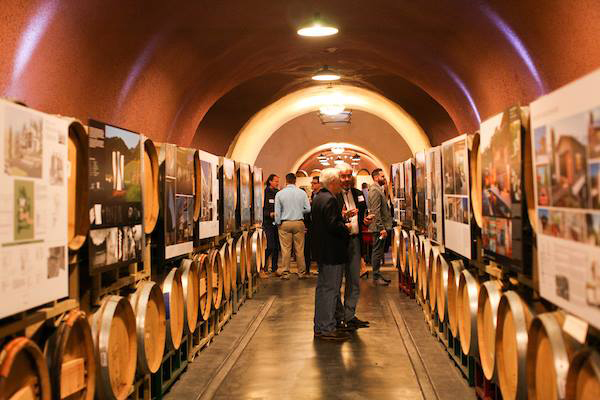
Tom Tomasi: Santa Rosa Architect’s Life Celebrated
Tom Tomasi, founder of Tomasi Architects in Santa Rosa, passed away at age 92 on September 16th. Tomasi is the “T” in “TLCD Architecture” and his passing has real significance to all of us at TLCD. Tom’s son, Don Tomasi joined his father’s firm in 1984 and helped shape the growth and decision to merge with Lawry Coker DeSilva Architecture in 1993.
After the merger, Tom stayed involved with the firm and brought his design expertise to projects, however Don took over a leadership role – which continues today. It’s not everyday that you experience such a strong family legacy passed down through generations. From the firm’s inception in 1965 to celebrating our 51st year as TLCD Architecture, Tom Tomasi will be remembered as a driving force in local architecture.
IIDA: Spring Forum and Farm to Table Event
By Suzanne Nagorka
Director, North Bay IIDA NC City Center
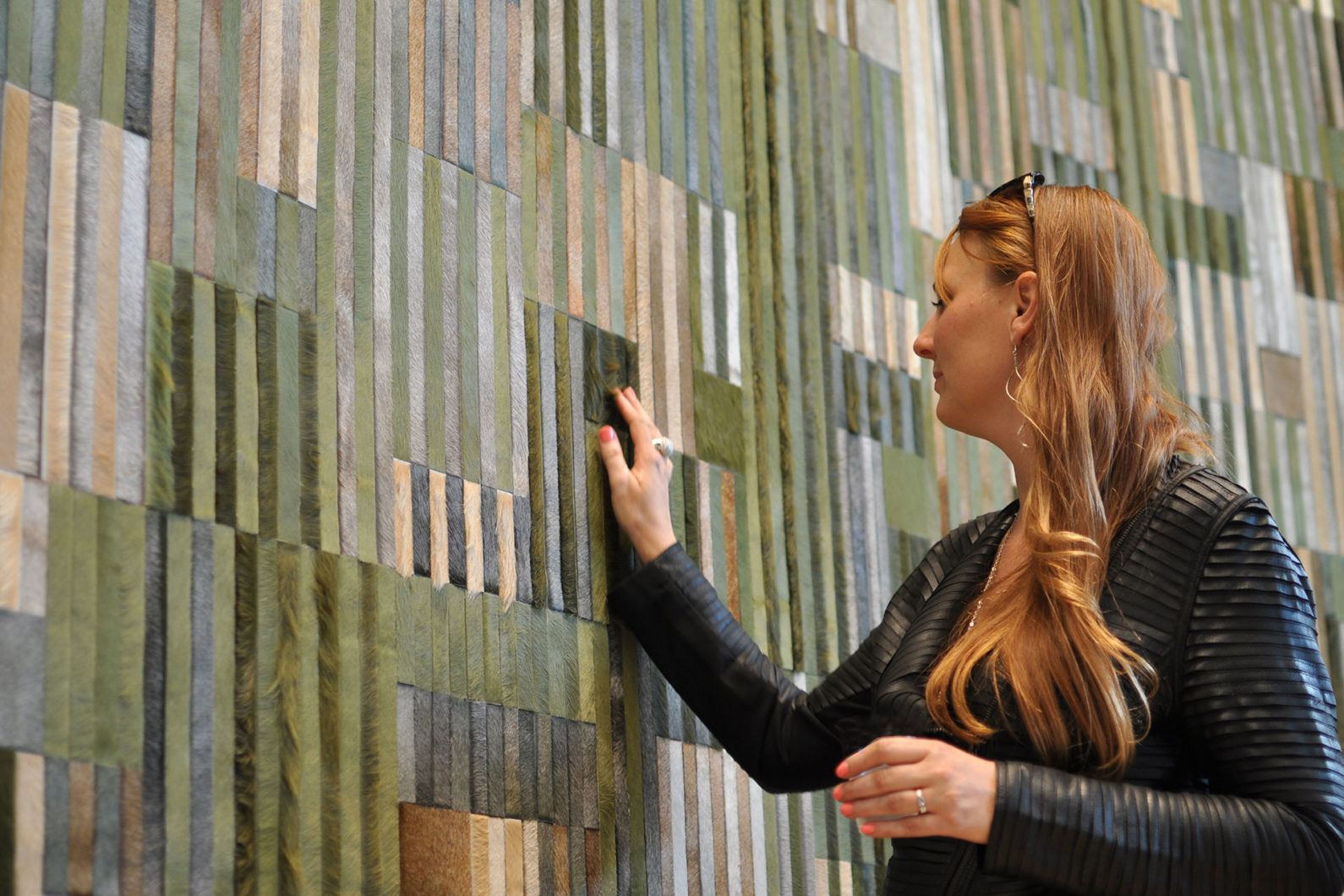 I recently had the opportunity to work with a wonderful committee of designers and industry representatives to plan the North Bay Spring Forum which followed the IIDA Northern California Chapter theme of “Design for Humanity”. What better place to host the event than at American AgCredit, a project for which I led the interior design, spaceplanning and art selection over a three year period.
I recently had the opportunity to work with a wonderful committee of designers and industry representatives to plan the North Bay Spring Forum which followed the IIDA Northern California Chapter theme of “Design for Humanity”. What better place to host the event than at American AgCredit, a project for which I led the interior design, spaceplanning and art selection over a three year period.
Following an inspiring round table conversation by panelists discussing how art and design can influence at-risk youth, American AgCredit’s CSO and the TLCD design team toured attendees through an amazing new 120,000 square foot new headquarters building. IIDA members were delighted to see a corporate interior environment with such an extensive art collection and commissioned installations including a cowhide wall mural, barrel stave feature and rammed earth wall. Throughout the afternoon local wines and delectable’s with a “Farm to Table” theme added to the festive atmosphere on the roof deck overlooking Sonoma County’s vineyards.
IIDA NC: Reflections on the Pioneers In Design Event 2016
By Suzanne Nagorka, CID, IIDA
As Director of the North Bay IIDA NC City Center, I was thrilled to attend the Pioneers In Design Event at the SF Jazz Center. This year’s award went to Michael Murphy of MASS Design Group, a non-profit architecture firm that specializes in providing healthcare and housing for under-privileged communities in Africa, Haiti and the US. His presentation tied in with our 2016 IIDA philanthropy theme “Design for Humanity” and inspired the audience of over 600 design professionals to look for a deeper understanding of the occupants and users of the spaces we design.
In conversation with moderator Dr. David Smith, founder of the Haight Ashbury Free Clinic, Michael explored the connection between healthcare and homelessness in our local communities. They both shared their personal stories that led them to serve the non-profit sector and encouraged the audience to reflect on what attracted them to the design industry. One of the most rewarding aspects of my job as Director of Interiors at TLCD Architecture is to see how our work affects the way people live, work, heal and play. Michael’s closing comments addressed possibilities for formulating new approaches to design and architecture during this time of social and political change.
All in all, it was a very inspiring evening with the Northern California design community.
Neocon 2016: Is Your Workplace Ready for a Refresh?

There’s lots of excitement around applying a more residential feel to the commercial workplace. Furniture designers are creating collections that support a variety of postures and resemble the soft curves you might see at home. Not all creativity and productivity happens at a cubicle – some of our favorites in this “Resimerical” movement really support alternative ways of working.
Bernhardt’s Casino is a beautiful new sofa collection that was extremely popular at Necon 2016. Incorporating lounge furniture destinations within a workplace are just as important as the design of individual desks. It gives employees the opportunity to put their feet up in the middle of the day, much like you would at home. Pull-up side tables for a laptop, iPad or coffee cup while reading the paper were also featured in furniture arrangements.
Another favorite is the new Rockwell Collection by Knoll. The idea behind these new pieces is to create an environment that enables a variety of experiences, and empowers users to transform their space at a moment’s notice. Everything is mobile, easy to reconfigure and has a hospitality quality that captures the “Resimercial” feeling seen throughout the show. This type of collection could easily be incorporated into a higher education project where students need to work alone or in groups – such as TLCD’s Wine Business Institute project at Sonoma State.

One of the biggest challenges in workplace design is creating acoustically balanced spaces for optimal working conditions. Luckily for designers, decorative acoustic solutions are hitting the market and there are more resources than ever before. We have already been able to incorporate some of these solutions into our current work and the products are both beautiful and functional.
Felt has been making a huge come-back in recent years. These sound softening, modular products can be found on walls and ceilings providing acoustic absorption and dividing space with opportunities to incorporate graphics and pattern into the environment. One new felt introduction is Link from Filzfelt and it’s comprised of reconfigurable hexagonal modules that connect to create a private to semi-private screen depending on the negative space within the module. The overall effect has a delicate crochet type patterning.
For TLCD’s new office, we were able to use one of Filzfelt’s hanging panel products to introduce a playful, screening and sound absorbing element at the end of the workstations.
 The need for acoustics does not transcend specialty spaces. Newest to the acoustic wood wall and ceiling product scene is Unika Vaev’s Ecoustic Veneer product. Perforated and non-perforated beautiful wood veneer is available in a linear shiplap installation method. The product is engineered to reduce install time and be installed over almost any substrate for our remodel clients with expedited schedules!
The need for acoustics does not transcend specialty spaces. Newest to the acoustic wood wall and ceiling product scene is Unika Vaev’s Ecoustic Veneer product. Perforated and non-perforated beautiful wood veneer is available in a linear shiplap installation method. The product is engineered to reduce install time and be installed over almost any substrate for our remodel clients with expedited schedules!

We hear this new buzzword in relation to workplace design from clients, social scientists and manufacturers in the design industry. Neocon 2016 was a great way to learn about the latest and greatest products available to address the need for privacy in today’s fast-paced and technology rich work environment. We found three products that we plan to add to our toolkit. 
The Reflect chair by Allsteel is presented as a “new solo workspace” that creates a personal refuge in an open work environment. The large enveloping back reduces visual distractions. Generous armrests allow room for a laptop or paperwork. Mostly we like the oversized comfy seat with contrasting materials that welcomes folks who need a break. The new headquarter building TLCD designed for American AgCredit incorporates similar furniture solutions for privacy and comfort.
We learned about a new glass source for our projects – Carvart Contract, which was awarded Gold in the architectural & decorative glass category. Their super easy website boasts a soup-to-nuts collection of architectural glass products and hardware systems for just about any application. Their privacy solutions include full-height sliding glass panels with a range of gradient and pattern options.
 Teknion received the Neocon Best of Competition award for it’s Zones Collection that provides flexible alternatives for small one and two-person getaway spots. People can stretch out or huddle in privacy yet still have a subtle visual connection with their surroundings.
Teknion received the Neocon Best of Competition award for it’s Zones Collection that provides flexible alternatives for small one and two-person getaway spots. People can stretch out or huddle in privacy yet still have a subtle visual connection with their surroundings.
A New Healthcare Experience for Patients, Family and Clinicians

By Domenica Sheets, CID, IIDA
I recently attended Neocon, North America’s premier trade show and conference on commercial interiors, products and evolving design trends. This conference, which is held at theMART in Chicago each year, allows our Interiors team to stay on top of the trends in all vertical markets, including Healthcare. As someone who has spent many years working on Healthcare projects at TLCD Architecture, I was particularly interested in how my observations matched with those of Steelcase, one of the leading manufacturers of furniture for hospitals, offices and classrooms.
This last week, representatives from Steelcase Health, and our Steelcase Furniture Account Manager gave a presentation at TLCD Architecture on new solutions for healthcare spaces. As designers and architects for our healthcare clients, they emphasized the need to create spaces that support communication and collaboration between patients, clinicians and family members so that everyone becomes a mutual participant in the patient’s health. Additionally, there is increasing need for productive and comfortable waiting or “transition” spaces for the family members whose day may have unexpectedly been put on hold while taking care of their loved one.

As the “center” of the healthcare experience, exam rooms are not only for physical examinations, they are also used for consultations and for family members to receive instructions for at-home care. The typical exam room table is being replaced with residential-like recliners for the patient, and a comfortable lounge chair or sofa for the family member. The clinician is given an ergonomic stool and adjustable height table to remain at the same eye level as the patient and family member. Technology has also evolved and mobile carts for ipads or computer monitors can easily move to help the clinician face the patient and family member. The use of demountable walls (walls that can be relocated), and modular furniture can also support evolving technology and room uses.
Waiting or “transition” spaces are changing as well and play a significant role in improving the overall healthcare experience. Rather than row upon row of uncomfortable chairs facing one direction, today’s waiting room offers choices and supports a range of postures and activities. People waiting may need to pull out their laptop and work for a few hours, charge their phone, have a conversation, watch young children or take a rest.
It’s our role as Healthcare designers to accommodate these functions and provide furniture solutions that support a wide range of needs. I’m very excited to share and implement the new furniture introductions showcased at Neocon with my clients and the customers they serve.
Summertime STEM Education and Architecture
 By Carl Servais AIA, NCARB, LEED AP
By Carl Servais AIA, NCARB, LEED AP
The Mike Hauser Academy is a summertime program through the Santa Rosa Chamber of Commerce that focuses on STEM (Science, Technology, Engineering and Math) education. The program provides students entering 9th grade with hands-on experience from STEM related employers in the area. TLCD Architecture hosted the class the week of June 20th and I had an opportunity to work with fellow designers, Nick Diggins and Stacey Walker to shape the curriculum for the week.

We had a lot of fun leading the students through the process of measuring an existing space, creating scale drawings by hand, developing a design based on a functional program, and finally modeling their design in 3D. The students did an amazing job working together throughout the week, which culminated in a presentation of their design to the group, complete with floor plans and a 3D rendering that could be viewed with Google Cardboard viewers. They particularly enjoyed seeing their own pictures as scale figures within the renderings. Check out these stereo panoramic renderings of the students inhabiting their designs:

Lucas and Ginger
http://pano.autodesk.com/pano.html?url=jpgs/736133b5-4d1f-4157-9609-ffea6be8b99c
Dorian and Janai
http://pano.autodesk.com/pano.html?url=jpgs/4c793c80-ec79-4125-b49d-709875031e62
Jerry and Montse
http://pano.autodesk.com/pano.html?url=jpgs/6fba6e88-9cab-42c4-981b-e570b20bc6ba
Transit Oriented Development along the SMART Line
As the Sonoma Marin Area Rail Transit (SMART) prepares for service later this year, the first wave of transit-oriented development is set to begin. TLCD Architecture is part of a larger team led by ROEM Development Corporation, who is in negotiations with SMART on an exciting mixed-use development at Railroad Square in Santa Rosa.
Read more in this Press Democrat article “SMART advances mixed-use housing project for Santa Rosa’s Railroad Square“.
Groundbreaking at Sonoma State University’s Wine Spectator Learning Center

Yesterday marked a momentous occasion for Sonoma State University and TLCD Architecture. A well attended groundbreaking ceremony was held for the Wine Business Institute’s, Wine Spectator Learning Center. Speakers at the event included Marvin Shanken, editor and publisher of Wine Spectator magazine, Lt. Gov. Gavin Newsom, U.S. Rep Mike Thompson, and SSU President Ruben Armiñana, among others, and was covered by the Press Democrat.
It’s been three years since TLCD was first selected to design the renovation of the former University Commons building. After an initial design phase, the project was put on hold until the $9 million in private funding was raised.
Now that the project is fully funded, the construction process can begin! The project will be completed in time for students and faculty to enjoy their new space for the Fall 2017 semester.
For more information on the Wine Spectator Learning Center click here.
Celebrating Our New Digs in Downtown Santa Rosa
 Last Thursday, TLCD Architecture held an official ribbon cutting ceremony with the Santa Rosa Chamber of Commerce to commemorate the Open House for our new office at 520 Third Street in downtown Santa Rosa. After a few words from Chamber President Jonathan Coe and Vice Mayor Tom Schwedhelm, we opened our doors to clients, consultants, business neighbors, family and friends to check out our “new digs.”
Last Thursday, TLCD Architecture held an official ribbon cutting ceremony with the Santa Rosa Chamber of Commerce to commemorate the Open House for our new office at 520 Third Street in downtown Santa Rosa. After a few words from Chamber President Jonathan Coe and Vice Mayor Tom Schwedhelm, we opened our doors to clients, consultants, business neighbors, family and friends to check out our “new digs.”
TLCD employees manned the bar and served beer while Starmont Winery poured vino to our guests who enjoyed small bites from Chloe’s while perusing our new home. The open office layout really lends itself to large gatherings especially when the garage door is open, connecting our large conference room to the rest of the space.
We had about 300 guests join us during the three-hour event, which gave us a chance to get a lot of feedback about our design. We invited guests to share their thoughts on the wall in our “Gumby” conference room that doubles as a white board. As we anticipated, everyone had positive things to say about our new office and thought it felt like a great place to work. We are grateful for all of the effort that went into designing and creating our space and definitely enjoy coming to work here everyday!
Thank you to everyone who came to celebrate with us, and if you missed the event – please feel free to stop by next time you’re in downtown!
For more pictures from our Open House, check out our Facebook page!
Art Abounds at American AgCredit Headquarters

Color, texture and form filled the air at American AgCredit’s new corporate headquarters last week as we installed 104 pieces of artwork in their new three-story office building. I got my 10,000 steps in as I led a professional installation crew around the 90,000 square foot office to pin point placement of paintings, photography and sculpture. Tape measures, blue tape and old fashioned “eyeballing” were all employed as we juggled geometry with adjacent elements to create the “wow” factor we were looking for.
29 talented artists from Sonoma County as well as AAC’s Colorado and Midwest regions are represented in a range of mediums including oil painting, pastels, aerial photography, silver gelatin black and white photography, encaustic painting and giclee prints. Several pieces were commissioned specifically for the project, including a large metal sculpture and custom wall installation.
The art selection process topped off my three-year design journey with an awesome client and design team. Hats off especially to the AAC Art Committee for making wonderful selections that reflect the land which supports the agricultural industry.
I can’t wait for my next art consultation project!
For more information on the AAC Headquarters check out this previous blog post.
AIASF Design Award Winners Announced
 The Bay Area architectural design community celebrated its finest last night at the 2016 AIASF Design Awards program at the Herbst Theater in San Francisco. The TLCD Architecture + Mark Cavagerno Associates team was presented with an Honor Award for the College of Marin Academic Center.
The Bay Area architectural design community celebrated its finest last night at the 2016 AIASF Design Awards program at the Herbst Theater in San Francisco. The TLCD Architecture + Mark Cavagerno Associates team was presented with an Honor Award for the College of Marin Academic Center.
The new Academic Center has transformed the College of Marin’s Kentfield campus by thoughtfully engaging three generations of buildings and landscape, to create a new sense of community, and a welcoming gateway to the campus. The jury for the AIASF Design Awards commented:
“The scale of the gorgeous layered boxes is just right. The simple massing, limited surface palette, and the telegraphed linearity make a striking composition with the stately heritage trees. The organization and planning within the landscape has its roots in good campus history.”
TLCD Architecture and Mark Cavagnero Associates are thrilled to be recognized with an Honor Award for this project and our team looks forward to future collaborations.
Santa Rosa’s Evolving City Center

Santa Rosa’s city center has long been known as Courthouse Square and it carries a long, rich history. Originally laid out as a plaza in the early 1800’s, it later became the site of a grand County Courthouse. The Square was a lively center of community and political activity and a place where young and old gathered. The 1906 earthquake destroyed the Courthouse and a new one was built on the same site as part of the reconstruction efforts.
By the 1960’s county government had outgrown the Courthouse and it was razed. In the midst of urban renewal, the Square was divided into two parts by varying interests and Mendocino Avenue was routed through the middle.  Several decades and many City Councils later, the City of Santa Rosa is moving forward with the Reunification of Courthouse Square. This plan reunifies the Square and creates an urban park and gathering space for residents and visitors alike. With proximity to great dining, shopping and events like the Wednesday Night Farmers Market, it will also serve as an economic boon to local businesses.
Several decades and many City Councils later, the City of Santa Rosa is moving forward with the Reunification of Courthouse Square. This plan reunifies the Square and creates an urban park and gathering space for residents and visitors alike. With proximity to great dining, shopping and events like the Wednesday Night Farmers Market, it will also serve as an economic boon to local businesses.
TLCD Architecture has been a downtown Santa Rosa business for over 50 years and the architect on many key public projects. In February 2016, the firm moved to our new office at 520 Third Street, which fronts Courthouse Square. The building, a former telephone switching facility, had been abandoned for decades. TLCD’s team recognized the potential to transform it into a contemporary building with urban office space and retail opportunities. Working as part of the development team, this building was designed with the reunification of Courthouse Square in mind as a way to reinvigorate the city center.
Recognized for our role in the revitalization of downtown Santa Rosa, as well as other community projects, the Santa Rosa Chamber of Commerce recently named TLCD Architecture Small Business of the Year. Principal Don Tomasi, accepted the award and spoke to our firm’s commitment and work culture.
Furthering this exciting momentum are key infrastructure projects including the SMART Train, which is set to begin passenger rail service in late 2016. With stations that include the Sonoma County Airport (also in active expansion mode) and Railroad Square, there will be non-vehicular transportation directly to downtown Santa Rosa. This connectivity will bring a new level of energy and activity to the city center… aka Courthouse Square!
 To learn about the City of Santa Rosa’s vision, see the Downtown Station Area Specific Plan.
To learn about the City of Santa Rosa’s vision, see the Downtown Station Area Specific Plan.
For more about the history of Courthouse Square, read Gaye LeBaron’s article: Old Courthouse Square has divided Santa Rosa for 160 years.
Pharmacy of the Future – Less Confusion, More Accuracy
TLCD’s Healthcare Studio team recently had the opportunity to design a pharmacy space that incorporates a new technology called GSL Solutions Will-Call Intellicab System. This technology aims to create less confusion and room for error when you pick up your medicine.
Who first thought up those alphabetical bins at the pharmacy stuffed with little white prescription bags? Even when they have 2 “S” bins and the curious “P/Q” bin, it always seems that half the lettered bins are overflowing, the others suspiciously empty. The pharmacist shuffles though the piles only to find your prescription isn’t in the bin at all. They talk it over with their mystified colleagues. “Why don’t you give us ten minutes to figure it out?” they say.

That was the past. The next time you get your prescription filled it may start out on a conveyor belt. In this layout below, a Pharmacist sees your order and picks it out of inventory, just like they used to. From there it is placed in a plastic bin and then onto a conveyor belt. After that it heads to a second station where another Pharmacist confirms the order and requests a slot for the patient in the Intellicab. The Intellicab randomly assigns one of its drawers and a blinking light flashes. The pharmacist heads over, waves their ID and a drawer opens. A blinking slot appears and the Pharmacist inserts the order into the bay. If a pharmacist inserts the item into an adjacent bay the Intellicab will make a record of the event to help train the user.

When the patient shows up to collect a prescription, their personal data is entered, and once confirmed the bin with their order in it is identified. A light appears on the drawer that holds it, then the Pharmacist heads over, waves their ID card to let the Intellicab know which Pharmacist is making the request. The drawer opens and a light appears at the patient’s randomly assigned bin. The pharmacist would then check the name on the bag and complete the transaction.
Even more important than speeding up pharmacy lines at busy hospitals, this technology has the power to save lives. Taking the wrong medication can have deadly side effects and, while rare, the wrong medication is delivered to patients from time to time. No system is fool-proof from human error, but this technologically advanced pharmacy design will provide a faster and safer way to get medication.
If you’d like to read more about TLCD’s Healthcare Studio, check out some of our other projects here.
How to Play with Food
Recently the Redwood Empire Food Bank held its annual “Canstruction” event, which turns a food drive into a can sculpture competition. It was held at the Coddingtown Mall for a week of display and voting. Afterwards all the food was donated to our local food bank where it was dispersed into the 52 million pounds of food they donate to families of Sonoma County every year! We were able to raise donations for 2,889 pounds of food for the final design. To start this mission ZFA laid down the strong ground work and rallied the troops for a few fun filled weeks of designing and developing the sculpture. To help visualize and smooth the build day, the team leaders arrived with 3D drawings that were comparable to a Lego instruction book. The day of construction was so fun and rewarding we decided to share the experience. Hey mom, playing with your food is awesome!
TLCD Architecture’s Chair Parade Signals Move to New Office
 Friday brought cloudy skies and rain, but it certainly didn’t dampen spirits as TLCD Architecture moved to our new office just two blocks down Santa Rosa Avenue. Why have movers pack up your chairs, when you can roll them over – umbrellas and all! This symbolic move signifies a nearly decade-long process to renovate an abandoned building in downtown Santa Rosa and turn it into a vibrant, mixed-use project. The Press Democrat captured the essence of this move in this article that appeared over the weekend “Tenants Move Into New Office in Santa Rosa’s Former AT&T Building”.
Friday brought cloudy skies and rain, but it certainly didn’t dampen spirits as TLCD Architecture moved to our new office just two blocks down Santa Rosa Avenue. Why have movers pack up your chairs, when you can roll them over – umbrellas and all! This symbolic move signifies a nearly decade-long process to renovate an abandoned building in downtown Santa Rosa and turn it into a vibrant, mixed-use project. The Press Democrat captured the essence of this move in this article that appeared over the weekend “Tenants Move Into New Office in Santa Rosa’s Former AT&T Building”.
The exterior transformation of the building is very apparent, but the space inside is simply amazing. With 16′ high ceilings, raw concrete walls, and sleek lines, the office feels urban and very hip. As architects, designing your own office space comes with no shortage of ideas for work environment, furniture and finishes. We’ll post more about our new office design in coming weeks… but for today, it feels great to settle in and begin work in our new digs!
Monolithic Desk Installed at American AgCredit Headquarters
As the TLCD Architecture designed American AgCredit Headquarters project nears completion, one of the most exciting details of the project is being installed – the main reception desk. Set in front of a rammed earth wall, this dramatic, 27-foot long monolithic white desk stands in striking contrast to the earthen wall behind it. The desk is manufactured in modules by Isomi in England, and is being installed by a crew from Connecticut. The crew glues the modules together, which are pulled tight by means of a motorized clamping system. The seams are filled and sanded, and the resulting monolithic structure is quite simply stunning. LED lighting will be installed at the base of the desk so that it will appear to float above the floor.
TLCD Announced as Architect for Wine Spectator Learning Center

Sonoma State University announced today that TLCD Architecture and BNBT Builders will partner on the design and construction of the Wine Spectator Learning Center in Rohnert Park.
“As the educational nucleus of a thriving regional economy, it was important to us to engage local professionals on this project. We decided after a lengthy review of top quality firms that TLCD and BNBT have the right combination of skill and experience. Over the coming months, a cutting-edge facility will take shape on campus, designed and built to provide the University community a teaching and learning environment that meets its demands and exceeds expectations as one of California’s leading institutions of higher education,” Dr. William Silver, Dean of the School of Business and Economics said.
TLCD Architecture has been working with the Wine Business Institute at Sonoma State since early 2014 to bring high level design visualizations to the fundraising effort and is thrilled to continue as the architect for this project.
“It’s a real privilege to be involved in such an innovative project. Sonoma State University and the Wine Business Institute have taken a very sustainable approach by revitalizing one of the original campus buildings. We believe the transformation will be truly stunning, and provide a perfect home for this forward-thinking regional and international program,” Brian Wright, Principal at TLCD Architecture said.
Museum on the Square and College of Marin Academic Center Named Top Projects
The North Bay Business Journal held it’s 10th annual Top Projects in the North Bay awards at the Sheraton Petaluma on December 17th. TLCD Architecture was recognized for two projects, the Museum on the Square in the Office Project category, and College of Marin’s new Academic Center in the Higher Education category.
TLCD Architecture teamed with Mark Cavagnero Associates on the Academic Center at College of Marin. The new center opened in August of this year and has become a welcoming space for students, faculty and the community.
Museum on the Square was recognized for it’s role in transforming the urban landscape of downtown Santa Rosa. TLCD envisioned a light-filled contemporary office building and designed both the exterior and it’s own offices on the 2nd floor.
Bent Origami Panels Going Up on Museum on the Square

When you think of origami, images of delicate and intricately folded paper comes to mind. TLCD takes origami one giant step further with the installation of a key exterior feature on the Museum on the Square project in downtown Santa Rosa. Perforated metal panels are being installed on the north side of the building to create a “veil” for the raw concrete facade. Typically perforated panels are installed as flat sheets, but TLCD Architecture worked with B.T. Mancini Company to custom fabricate panels manufactured by McNichols. The panels are then bent to form a unique sculptural pattern much like folded origami. The panels also serve a practical function as sunshades for the building. The panels are angled toward nearby Courthouse Square in acknowledgment of the downtown’s main urban space. The north side of the building was covered during much of the early construction and for the last several months work was focused on the exterior glass. When the metal panels began going up it created some buzz, but this week’s installation of the bent panels is literally turning heads. Check out what’s going on at 3rd Street and Santa Rosa Avenue!
Carl’s Excellent Adventure: Leadership Santa Rosa Part 3
My story about the second Leadership Santa Rosa program day, Government and Politics, truly began several months ago at the Class XXXII retreat where several of my classmates and I had a discussion about the reunification of Courthouse Square in Santa Rosa, an important and contentious project which has been in the works for many years. That spirited discussion inspired me to complete our homework assignment by attending the City Council meeting in September where the City Council decided to move ahead with funding the project, and that meeting became a tipping point for me to speak out in support of the City Council’s decision by writing a letter to the local newspaper, the Press Democrat.
And so, with my freshly inspired spirit for civic engagement, I entered the City Council chambers again in October to learn all about government, policy, and politics during our program day.
Continue reading “Carl’s Excellent Adventure: Leadership Santa Rosa Part 3”
Who’s Up for a Field Trip… to American AgCredit?
Architecture firms are all about field trips… and often they are tours of our projects under construction. This week, TLCD’s staff got out for a tour of the American AgCredit Headquarters project in Santa Rosa. This landmark 120,000 square foot project is nearing completion with portions of the building to be occupied within a few weeks. It was a great opportunity to tour it and see how many of the key features are taking shape. In the photo above, our team is looking at the rammed earth feature wall which was built early in construction. It was encased in a wooden structure for protection, and then the building was constructed around it. The wall is a stunning reference to the soil that makes agriculture possible and supports American AgCredit’s mission of farm lending.
One of many exciting design elements will be perforated zinc exterior cladding, which is only now beginning to be installed. Over the next few months these zinc panels will completely transform the appearance of the building. Not only will they visually define the facade, the panels will also provide sunshading that will significantly reduce the cost of cooling the building.
On the second floor, we walked one of the sky bridges with a feature wall of channel glass. From the outside, the glass provides a distinctive entry element, but from the inside, it creates wonderful, diffused lighting for what will be a casual work area for the employees of American AgCredit. This sky bridge will have soft lighting to one side and clear views to the inner courtyard on the other side.
Throughout the tour we did what most architects do… looked up, looked down, looked all around. These tours are a learning process for the entire staff and also expose us to ideas, materials and solutions we can use on other projects.
IIDA Art & Wine Event Raises Funds for Local Students
Suzanne Nagorka, Interior Designer
Close to 60 members and guests of the IIDA NC (International Interior Design Association, Northern California) North Bay City Center gathered in the sculpture garden of Sonoma County Museum on October 17 for our second annual Fall Art and Wine Event. Over $2,000 was raised for the Museum’s Educational Program that brings art and museum tours to underserved students in Sonoma County.
Our TLCD Architecture Interior Design team (Domenica Sheets, Stacey Walker, and myself) made up half of the planning committee for the fundraiser, and we were also among the many industry sponsors who made the event possible.
Local wine, delicious Mexican food, tasty treats and a generous raffle enhanced the soiree, while face painting artist Clementine the Amazing provided a fun and festive activity for guests who wanted to honor the Dia de los Muertos theme with wearable sugar skull art.
Interior Designers and affiliated professionals were wowed by the Docent tours of the Museum’s three fabulous exhibits: Artistry in Wood, Dia de los Muertos and an amazing Fiber Arts show. IIDA NC is one of 30 worldwide IIDA chapters that leads the way for the next generation of design innovators by providing a forum for professional development and advancement of the Interior Design Industry.
Special thanks go to our Gold Level sponsors: ARC/Bendheim Glass, LeGrand, Shaw Contract and Wolf Gordon.
The final IIDA NC North Bay City Center event of the year will be our annual Member Appreciation Event in December, which we are busy planning! For information on upcoming IIDA NC events, click here.
Carl’s Excellent Adventure: Leadership Santa Rosa Part 2
The topic of Class XXXII’s first Leadership Santa Rosa program day was Agriculture. After our fascinating pretour of a mushroom farm in Sebastopol, I was excited to see what the day would bring, but not so excited about starting at 6am. Ugh! I can’t complain too much though, since our first stop was the Bucher Dairy, a 2nd generation family-owned organic dairy farm on 360 acres near Healdsburg, where they are up every day at 1am to start milking the cows. Yikes! They have 700 dairy cows producing milk for Clover Storneta, and in recent years planted a 40 acre vineyard to support their own wine label, Bucher. I learned a lot about how the farm operates and how they have integrated new technology over time to increase efficiency, including creating their own “plate cooler” that works like a heat exchanger to passively cool the milk with stored water.
Our next stop was Santa Rosa Junior College’s Shone Farm for a panel discussion with Tony Linegar, the Sonoma County Agricultural Commissioner, Karissa Kruse, the President of the Sonoma County Wingrowers, and Doug Beretta from Beretta Family Organic Dairy.
Continue reading “Carl’s Excellent Adventure: Leadership Santa Rosa Part 2”
Serious Fun: California’s Wine Business
Anyone living in California knows the impact the wine industry has on our economy. California produces 90% of the wine for the US with an estimated retail value of $24.6 billion. California is also becoming the leader in wine business education for professionals worldwide. What you might not know is that Sonoma State University in Rohnert Park, is leading the way with its innovative Wine Business Institute (WBI). The WBI is an education and research institute within the School of Business and Economics. It was created as a public-private partnership with a clear mission: to educate students, provide research and develop programs that would support the needs of one of the primary industries and employers in our region and around the world. WBI is the first and only program in the US to focus exclusively on the business aspects of the wine industry, offering both an undergraduate degree and MBA program.
TLCD Architecture, located just minutes from Sonoma State University, has a diverse practice that includes work for both winery/hospitality and educational clients. These two areas of expertise meshed beautifully when TLCD was selected to design the new Wine Spectator Learning Center at Sonoma State. It’s given us an opportunity to explore the programmatic needs of wine business and marketing majors and assist the school in developing high level design visualizations for fundraising efforts.
Our work with the WBI began by meeting with the administrators and faculty to develop a vision and concept for the new facility, which will comprise a complete remodel of the original University Commons Building. From that initial vision we created several renderings of the design concept, which in turn helped to generate several large donations for the project from the Institute’s partners in the wine industry. Schematic Design has been completed, and we’ll be moving into the next phases of design shortly. We’re fortunate to have Summit Engineering on our team, who also happens to be one of the premier winery engineers in Northern California.
It’s incredibly fulfilling to be part of a program that will educate and train the next generation of wine business professionals and entrepreneurs. While TLCD Architecture’s work extends throughout Northern California, we have been in business here in Sonoma County for 50 years. Contributing to our community, quality education and a thriving business culture is important to us.
Wine education is not all about classes, research and training. It’s also about immersing ourselves in the culture of wine and having some “serious fun.” We recently teamed with our friends at Summit Engineering for a showdown at the Sonoma County Harvest Fair “World Championship Grape Stomp” competition. Celebrating its 41st year, the Harvest Fair celebrates Sonoma County’s harvest by honoring world-class wine, beer and culinary creations.
Click the video below to see the TLCD Architecture/Summit Engineering Grape Stomp Showdown!
More articles about the Wine Spectator Learning Center
Wine Spectator Donates $3 Million to Sonoma State University
SSU Wine Institute Gets Another Major Gift
Peter Michael Adds Its Support To Wine Spectator Learning Center At Sonoma State University
Grape Stomp Showdown: TLCD Architecture vs Summit Engineering
 On a warm fall weekend in wine country, the ultimate grape showdown took place between two Santa Rosa firms. TLCD Architecture challenged Summit Engineering to compete in the annual Harvest Fair Grape Stomp for bragging rights about who can generate the most juice in under 3 minutes.
On a warm fall weekend in wine country, the ultimate grape showdown took place between two Santa Rosa firms. TLCD Architecture challenged Summit Engineering to compete in the annual Harvest Fair Grape Stomp for bragging rights about who can generate the most juice in under 3 minutes.
Two teams from each firm prepared for this event by enduring a rigorous training regiment… mainly developing our core strength from laughing so hard. It turns out there is a real finesse to grape stomping as we learned the intricacies of being the “Stomper” or the “Swabby.” Foot size does not matter if you are the Stomper, it’s much more about the swirl and kick technique to move the juice towards the spout. The Swabby role benefitted from laser sharp focus and unusually long arms to funnel the grape juice into the jug.
While the teams from TLCD and Summit did not win the heat that day, we had a respectable amount of “wine juice weight” and went home proud. Purple feet and hands, a trophy t-shirt and the following video mark this historic showdown.
We Rock: Creative Preparations for IIDA Fall Art and Wine Event
Stacey Walker, Interior Designer
IIDA North Bay City Center is gearing up for the 2nd Annual Fall Art and Wine Event and enlisted the help of our TLCD office for the decorations.
Suzanne, Domenica and I are on the planning committee for the festive Dia de los Muertos themed event that will be hosted at Museums of Sonoma County in downtown Santa Rosa on Saturday, October 17th from 3-6pm. There will be docent tours of the historic museum exhibits, ‘Dia de los Muertos Altars’ and ‘Artisty in Wood’, as well as tours of the new contemporary museum exhibit ‘The Sculpted Fiber: West Coast Fiber Artists’. Clementine The Amazing Face Painter, a local award winning face painting artist will be magically transforming our guests’ faces into Day of the Dead Sugar Skulls. There will be a silent auction with wonderful prizes and the proceeds of this event will benefit the Museum’s Educational Program for Students.
We harnessed the creativity of our staff to paint river rocks with sugar skull faces and create beautiful tissue paper marigolds to decorate the Museum Sculpture Garden. Our normally boisterous crowd was quiet with concentration as they painted colorful faces on the collection of river rocks and cut, crimped and twisted the tissue paper into beautiful Marigold flowers!
Tickets for this fabulous event can be purchased online http://www.eventbrite.com/e/iida-north-bays-2nd-annual-fall-art-wine-event-tickets-18317944465 – We would love to see you there!
College of Marin Celebrates Successful Measure C Bond Projects
College of Marin held a celebration Thursday afternoon to mark the completion of the Measure C Bond Program, and the ribbon-cutting for the newly completed Academic Center, which was designed by the team of TLCD Architecture + Mark Cavagnero Associates. Don Tomasi and Brian Wright represented TLCD Architecture at the event, along with John Fung and Olga Kozachek from Mark Cavagnero’s office.

Situated at the corner of College Avenue and Sir Francis Drake Boulevard, the new Academic Center, provides a welcoming front door to the Kentfield campus. The 43,000 square foot building houses 16 classrooms, a 100-seat lecture hall, 3 computer labs, and offices for the college faculty and administration. The building was designed to be fully integrated with the sloping site, carefully preserving many of the heritage oak and redwood trees, and featuring native and drought-resistant landscaping. The project is pending LEED Gold certification.
The celebration was attended by community members, college faculty, staff, board and administration, contractors, program managers, students, and regional elected officials. The mood was festive, with refreshments and conversations centering on the successful completion of the 10-year building program. The college president, Dr. David Wain Coon, led the formal presentation that also included comments by board members, administrators, students and elected officials.
Carl’s Excellent Adventure: Leadership Santa Rosa Part 1
I recently began my two-year participation in Leadership Santa Rosa, an “educational program intended to develop and equip effective community leaders via exposure to pertinent issues, broad thinkers and the richness of Santa Rosa and Sonoma County.” The program was created by the Santa Rosa Chamber of Commerce and as a part of Class XXXII, I hope to join the distinguished group of community leaders who have graduated from the program over the years, including TLCD Architecture’s own Don Tomasi (Class VIII) and Jason Brabo (Class XXIV). Through a series of full-day educational and interactive seminars, I will learn directly from experienced leaders about various aspects of our community including challenges we face and opportunities for our future.
 The topic for our first program day was “Agriculture” and our first official activity was a tour of Gourmet Mushrooms, a mushroom farm off of Gravenstein Highway north of Sebastopol. Justin Reyes, the Manager for Sales and Marketing, led us on a tour through the facility where they grow seven varieties of gourmet mushrooms that are sold under the Mycopia brand at groceries throughout the United States, including our local Safeway, Raley’s, and Whole Foods. The mushrooms are grown in bottles packed with a special wood based substrate that is first “seeded” with mycelium, then incubated for several months, and finally moved to harvest rooms where the mushrooms grow. Their mushrooms have been certified organic and their operations are highly sustainable, including using very little water and producing very little waste. All of their used wood substrate is sold to local farms for compost and the approximately 1 million bottles in circulation at the facility are continuously reused.
The topic for our first program day was “Agriculture” and our first official activity was a tour of Gourmet Mushrooms, a mushroom farm off of Gravenstein Highway north of Sebastopol. Justin Reyes, the Manager for Sales and Marketing, led us on a tour through the facility where they grow seven varieties of gourmet mushrooms that are sold under the Mycopia brand at groceries throughout the United States, including our local Safeway, Raley’s, and Whole Foods. The mushrooms are grown in bottles packed with a special wood based substrate that is first “seeded” with mycelium, then incubated for several months, and finally moved to harvest rooms where the mushrooms grow. Their mushrooms have been certified organic and their operations are highly sustainable, including using very little water and producing very little waste. All of their used wood substrate is sold to local farms for compost and the approximately 1 million bottles in circulation at the facility are continuously reused.

The tour was incredibly fascinating and I learned a lot more than I ever thought I would while wearing a hairnet. I can’t wait to see what other experiences this journey will bring and I promise to keep sharing them with you! For now, I’ll leave you with a few fun facts about mushrooms:
- The largest living organism on Earth is a mushroom in Oregon that is over 2,000 acres and can be seen from space.
- Fungi are their own kingdom, but they are closer to animals than plants.
- Nearly all plants have a symbiotic relationship with a partner fungi.
Stay tuned for more in my Leadership Santa Rosa Series – there are a lot more adventures to come!
To learn more about the farm Gourmet Mushrooms, Inc. watch this video.
Game On… Architectural Renderings Go Interactive
Architecture is a complex process that is integrated with massive amounts of information requiring coordination between many parties. We use software specifically developed for this type of information management (BIM), but what’s so interesting is all this information is imbedded in a digital 3D model. We are constantly finding new ways to use and extract this information throughout the design process.
The current hot trend in design visualizations is the integration of virtual reality (VR) rendering into the Revit (BIM) workflow. I’ve had a lot of fun sharing this new type of presentation with clients, staff, friends – even Angel our office dog tried it out using Google Cardboard. After showing my 9-year old son this cool technology, which literally puts the viewer in the space, I realized it’s already out of date when he said, “Dad, all you can do is look around.” It hit me that the future is here. His generation will be expecting software that enables true interactive immersion. What if we, as architects, can design workflows that allow the user to interact with a space while it’s still in development – much the same way we build physical models to critique and explore ideas?
A physical model has always been an easier tool for sharing ideas than technical drawings. A model isn’t static – you can pick it up, rotate it, move around it, and feel what the idea is in a physical solution. Models are the universal language of design and they help us understand the concept of three-dimensional problem solving. In the digital landscape it’s quickly changing how we share ideas with each other and our clients.
TLCD’s culture is very supportive of testing new software. If you follow trends in new techniques of rendering and architectural visualizations, you may have seen some examples of interactive environments taking off recently. There are many resources for starting this workflow and one that we’ve been testing recently is Unreal Engine 4. We took this software for a test drive and modeled our new office space. Rather than strapping on VR goggles, our staff can walk through our new office and experience it from the comfort of their own computer monitor (view video above).
On the more technical side, how does this type of software change our current workflow? For a current static rendering like the one shown in the first part of the video, we can prime a digital model for rendering pretty quickly. Using the power of our render farm, we usually run 80 cores (CPU’s) resulting in one render after a few hours. Not too bad considering we used to wait days for the same output only a few years ago.
Now if you want video, you are looking at a lot of time and resources to develop an in-house animation that is usually under a minute in length. At the end of multiple days of work you have an amazing video to share with clients and others (and everyone loves movies, right?) That thirty-second video loses its sparkle when you realize that you need to change something in the design as a result of meeting comments. Usually you can’t re-render a whole walkthrough because of tight schedules – but what if you could? What if it was just a part of the standard workflow and you could render the space and were allowed to change views or make a movie within minutes?
Why not turn the scripted walkthrough into a “game” and let someone else walk around and experience it in real time! This is the direction we are headed at TLCD… and virtual reality is just fuel to the fire. Integrating the visual experience with a physical/digital experience is so exciting to us as architects because we are integrating it into our early designs as a linkable workflow. Immersing yourself deeper into an environment is an architectural experience beyond the average visual.
Learning to craft a visualization to create an interactive experience is the new art of rendering. Video game developers have been doing this for years and the most current digital environments are so immersive it almost feels real. This way of sharing a design brings in thoughts of simple actions infused with realism – like adding sounds of the city when you open a door. We see so many possibilities for this in the near future. Imagine an environment that allows end users to experience the space and use it as a learning tool with interactive virtual diagrams.
Our goal is to integrate this software into our designs to create new modes of integrated thinking for clients who are looking for innovation and value for their project. At the moment, we are only designing buildings, but soon we might be creating worlds! This is too much fun to be had all alone, come join us!
 No animals… or architects were harmed in the making of this blog post. Most days Angel can be found at our office brightening people’s days while stopping by their desk for a treat or pat on the head. Nick can be found any number of places…job sites, his work station, client meetings, or low crawling to sneak up on his unsuspecting coworkers!
No animals… or architects were harmed in the making of this blog post. Most days Angel can be found at our office brightening people’s days while stopping by their desk for a treat or pat on the head. Nick can be found any number of places…job sites, his work station, client meetings, or low crawling to sneak up on his unsuspecting coworkers!
Milestone Celebration for American AgCredit Headquarters
TLCD hosted and toasted the American AgCredit furniture selection team yesterday on the occasion of completing the ancillary furniture specifications for their Santa Rosa Headquarters Building. Homemade peach pie and local Sonoma County champagne were savored amidst a colorful disarray of fabric samples and drawings.
After 18 months of furniture research and evaluation, the accomplishment of this major milestone was cause for celebration. The TLCD Interiors team is excited about being one step closer to the December 2015 completion date and seeing all the interior spaces come to life.
The ancillary package being ordered through RDI includes over 800 pieces of furniture for conference rooms, collaborative spaces, break rooms and outdoor spaces.
Cheers to a great team effort!
(For more information on the American AgCredit project, check out previous blog posts here, here, here and here.)
Praxis in Action: Healdsburg’s Cerri Building
In May we put up a post, Praxis: Practical Application of a Theory that talked about the stage in our process where investigation and critical analysis leads to idea generation and critique. We routinely tap into the collective expertise of our team for this critique process – whether it be a casual discussion or a full charrette. Yesterday we held a firm-wide design discussion of one of the more unusual projects in our office – the historic Cerri Building in Healdsburg.
TLCD Architecture is teaming with Healdsburg architect Alan Cohen in the design of the this downtown parcel that will accommodate the City’s farmers market and additional parking. At issue is whether to preserve an existing structure on the site, or to remove it and install new shade structures with photovoltaic (solar) panels. Although very early in the design process, yesterday’s discussion yielded many good ideas that the design team will explore. The main concept is to transform the existing building into a new space that will serve many functions and add to Healdsburg’s vibrant downtown culture. We are looking at strategies that allow for a stronger connection with the adjacent street, sidewalk and most importantly, the visitor. The team also shared inspiration photos that suggest other directions for the design, such a new structure providing indoor/outdoor space for the farmer’s market, as well as alternate surfaces for the photovoltaics.
These open office design conversations are what keeps our projects fresh and the design concepts clear and focused. We refine our ideas by critiquing our work as a group and we are always fascinated by the power of sharing with each other.
Bikes and Brews
What a great name for an event! When I saw the flier float around our office I immediatly grabbed it and knew I would have to roll. TLCD Architecture and many others were invited to join the annual ride to a nearby town of Sebastopol for a destination of good conversations, food and the celebration of bikes..and Beer.
Personally I’d never been to “Hopmonk”, but what a cool venue. We were greeted with ample bike parking for the whole group and a nice laid back outdoor seating area with a great draft list with many local micro’s. Fellow riders from ZFA and I were grubbing down on pulled pork sandwiches and the favorite 4 pack taco platter…amazing! According to local lore they have music there pretty regularly and I could see it being a pretty fun time. Living in Sonoma County (one of the worlds greatest bike and beer destinations) this local gathering was a great reminder of how lucky I am to get to enjoy this place from the speed and freedom of a bike. On the trip back to Santa Rosa, the ZFA crew kicked it into hyper speed as TLCD tried to keep up with the sprint… https://www.strava.com/segments/10029921/embed Not realizing I was riding with world class riders I now know that I will have to train for next year’s event, and hopefully grab a few notches higher on the list of riders. I will definitely be looking forward to next year’s ride, and thank you ZFA engineering for getting everyone together to enjoy our amazing place to live and work.
Design Features Take Shape on New American AgCredit Headquarters
This week TLCD Architecture’s staff toured our American AgCredit project, a 120,000 square foot, 3-story headquarters building just north of Santa Rosa. The project is scheduled for occupancy in early November and is currently at an exciting stage of construction, with many facets of the design taking shape.
Perhaps 2 of the greatest points of interest were the grand stairway, and a rammed earth wall. The grand stairway connects each of the 3 floors in a dramatic atrium that opens onto the building courtyard. The stair soars through the space at varying angles, and is clad with steel plate railings that were individually lifted into place by crane. These will be “blackened” by an artist in order to provide a deep, black patina. When the building is complete, a 3-story high cowhide mural by Kyle Bunting of Austin Texas will be a prominent feature of the atrium.
The rammed earth wall was built early in construction. It was incased in a wooden structure for protection, and then the building was constructed around it. The protective wood structure was removed just early this week, and so we were some of the first to see this amazing wall, which will form the backdrop to the main reception desk. The wall is a tangible reference to the soil that makes agriculture possible, a powerful reference to American AgCredit mission of farm lending.
 The floors are raised pedestal construction, which allows the reconfiguration of under floor electrical, data, and other systems. In this project we are also using the space below the floor for the supply of conditioned air, an very energy-efficient, quiet and healthy system known as displacement ventilation. We were able to observe the below-floor infrastructure in areas where the floor tiles have yet to be installed. Among other things, we saw “air highways” that are being constructed to efficiently deliver air to the far reaches of the building.
The floors are raised pedestal construction, which allows the reconfiguration of under floor electrical, data, and other systems. In this project we are also using the space below the floor for the supply of conditioned air, an very energy-efficient, quiet and healthy system known as displacement ventilation. We were able to observe the below-floor infrastructure in areas where the floor tiles have yet to be installed. Among other things, we saw “air highways” that are being constructed to efficiently deliver air to the far reaches of the building.
The exterior of the building, aside from dramatic, sweeping curves and multiple “sky bridges”, has an appearance not unlike many other modern structures. However, beginning in late August an exterior “skin” of perforated zinc panels will be installed. These zinc panels will transform the appearance of the building, and will visually articulate the façade while providing sunshading that will significantly reduce the cost of cooling the building.
Architecture Reborn: Fading Past to Vibrant Future
By Kevin Teel, Project Architect
 TLCD Architecture has had the opportunity to work on several diverse historic projects over the last decade – from the 1912 stone Vintage Hall at St. Helena High School – to the 124 year-old DeTurk Round Barn in Santa Rosa. We are set to begin work on another storied historical structure in Healdsburg – a 1920’s warehouse called the Cerri Building. Historic projects are of particular interest to me because we each have our own way of “seeing” the character of a building, leading to unique interpretations and end results.
TLCD Architecture has had the opportunity to work on several diverse historic projects over the last decade – from the 1912 stone Vintage Hall at St. Helena High School – to the 124 year-old DeTurk Round Barn in Santa Rosa. We are set to begin work on another storied historical structure in Healdsburg – a 1920’s warehouse called the Cerri Building. Historic projects are of particular interest to me because we each have our own way of “seeing” the character of a building, leading to unique interpretations and end results.
My personal journey began in Colorado and Arizona – places where I honed my own process for interpreting the history of buildings. Though most buildings I refer to are not historic landmarks, the process of revealing their inner character is the same.
I began to roam old mining towns and backcountry while attending college in the Southwest. There is a romance for the bucolic nature of dilapidated barns and mining structures in this area, but for me the real excitement is in imagining these places in their heyday. What was happening on any typical day? I pull each of my senses into the story and build around the experience. While none of these mental images may have happened, they help set basic parameters for how I would investigate design decisions in future projects. This same philosophy governed my thesis work in Arizona, when exploring adaptive reuse ideas of mining ruins near Prescott, Arizona.
Adaptive Reuse in my mind, is a process of inspiration and evaluation that allows the original building to shine, while simultaneously providing for current needs, regulations and community desires. It attempts to fuse, not separate, these elements into a lasting whole that, when done well “just seems right.” This approach doesn’t lessen the importance of the original building – it simply highlights it. It doesn’t suggest superiority of contemporary materials and methods; it attempts to show commonality of past and present construction means. This is why initial observations are so important to maintain, even in the presence of often complex and competing concerns.
My first visit to DeTurk Round Barn in Santa Rosa was not unlike entering the old mining structures in the Southwest. The barn was boarded up and in quite a state of disrepair, but I felt an immediate connection. After I got over wanting it for myself (yes, adaptive reuse can be a residence), I was immediately struck by what a calming space it was. This is when I began to consider the original function – the barn was built for horses, but they were trotters, not barrel racers. I imagined a well-lit space with beautiful horses steadily moving around the inner ring, clean horse stalls around the edges and hay carefully stacked overhead. This spirit of calmness would be fundamental to the success of this project, no matter the amount of chaos in getting to the finish line!
Next, I was amazed at the light quality of the barn considering every ground floor window was boarded up and covered with plastic. The only light was from the original, dusty skylights above. Clearly this space could be light and bright again. Sometimes seemingly mundane ideas, such as seismic mitigation, take over my thoughts, but this is almost without exception an opportunity to enhance our interpretations.  For example, wooden posts carrying the weight of the loft would not be adequate to meet modern codes and would need retrofitting. These materials could simply be construction waste, or we could find a way to “carry history forward.” Spectacular old growth redwood (a huge piece of our local history) was resawn and used as interior finish in the barn, exposing its beauty for future visitors to enjoy.
For example, wooden posts carrying the weight of the loft would not be adequate to meet modern codes and would need retrofitting. These materials could simply be construction waste, or we could find a way to “carry history forward.” Spectacular old growth redwood (a huge piece of our local history) was resawn and used as interior finish in the barn, exposing its beauty for future visitors to enjoy.
With this inspiration in mind, and as a foundation, the question becomes “What is the vision for this building now and in the foreseeable future?” This is where public input and design team coordination comes into play. Although the community’s feedback reduced the project scope considerably, it didn’t reduce the challenges TLCD Architecture would face. The firm still needed to rehabilitate an extremely unique and dilapidated 8,300 square-foot round barn while maintaining its historic integrity. We were also tasked with seamlessly incorporating a kitchen, restrooms, mechanical/electrical and storage rooms, as well as integrating 21st century technology to ensure DeTurk Round Barn would become a popular event space for the City of Santa Rosa.
TLCD now has another wonderful opportunity to play a role interpreting the history of the Cerri Building in Healdsburg. This is another building with a long, storied history and most certainly a quite different future. It will not be possible without community input, technical expertise and a fundamental understanding of the nature of the space and surrounding environment.
DeTurk Round Barn has been one of TLCD’s most published and recognized projects… I hope you will find the following links of interest:
AIA California Council, Adaptive Reuse Merit Award 2014
Retrofit Magazine Article “Barn Raising”
GreenSource Magazine Article “Uplifting a Round Barn”
Big Ass Fan Case Study DeTurk Round Barn
View video below for more background on the DeTurk Round Barn
Alan Butler Celebrates 30 Years with TLCD!
By Don Tomasi AIA, Principal
In today’s world it’s rare to stay at any one company for an entire career, so its remarkable that in recent months, 3 of us have celebrated our 30th anniversaries with TLCD Architecture. It’s with great excitement that we celebrate the 30th work anniversary of my friend and partner Alan Butler.
Although we didn’t know each other at the time, Alan was working in Seattle in the summer of 1984, and I was living just 4 blocks away – on the same street! We both moved from Seattle to competing architectural firms in Santa Rosa within a year of each other, our offices just blocks apart – you guessed it, on the same street! Alan began work at Lawry Coker DeSilva Architects (LCD) as its 7th employee. But it was another several years before we met. (For the record, we now work in the same office, but live 14 blocks apart – on different streets!)
In 1993 the two firms merged to form Tomasi Lawry Coker DeSilva Architects later to become TLCD Architecture. Alan had become a partner of the firm and was leading the first phase of the Santa Rosa Junior College new Petaluma Campus. Alan’s experience on the SRJC Petaluma campus project and his longstanding interest in higher education helped determine the direction of his career, and he established community college projects as a major part of our firm’s practice.
Alan was responsible for the firm’s first breakthrough project, the new Frank P. Doyle Library at SRJC’s main Santa Rosa campus. Realizing that TLCD Architecture’s best chance of being selected for this project was a strategic alliance with a larger firm, Alan traveled to Boston to explore a relationship with Shepley Bulfinch. Through Alan’s efforts, TLCD and Shepley Bulfinch were awarded the project. As TLCD’s highest profile project at that time, it was instrumental in launching TLCD as a premier architectural firm in the region. With Doyle Library, Alan’s longstanding interest in libraries blossomed into a true passion, leading to several other community college libraries. Alan has authored 2 books on the topic of academic library design, first Touring Libraries and more recently, Experiencing Libraries.
As a Principal of the firm Alan quickly demonstrated his leadership abilities, assuming many office management responsibilities. Over the majority of our 22 years working together Alan and I have shared the bulk of management duties, picking up the slack from the other as our other responsibilities required. The dynamic of our working relationship could best be described as “intuitive”, though I am pleased to note that we do not (usually) complete each other’s sentences!
 It has been a rewarding 22 years, and we’ve had a great time working together. With the help of the incredibly talented people we work with, together we have had the opportunity to oversee the impressive evolution of our firm into something quite remarkable.
It has been a rewarding 22 years, and we’ve had a great time working together. With the help of the incredibly talented people we work with, together we have had the opportunity to oversee the impressive evolution of our firm into something quite remarkable.
Designer’s Toolbox: Steel
Concrete, steel, and wood are the fundamental building blocks of the built environment, and when possible we will try and expose them. It is raw materials that give our buildings character: they are direct expressions of those who designed and built the edifice. No two pieces are alike. We love raw materials for their character and inherent language of honesty. They age with the building. It is good not to overdo it, but something as simple as raw steel can convey a sense of permanence and craftsmanship.
Typically, the majority of these materials may get covered in gypsum board or other ‘finish’ materials in order to provide a level of fire protection or acoustical rating required for a particular space. However, there are a number of opportunities in any given space to expose them. In addition to exposing the structure of the building, items such as furniture, hardware, lighting and stairs (among others) are all good opportunities to detail an exposed connection. And in the end these are typically the details that become the monuments of design.
With that in mind, at TLCD we recently held a quick ‘refresh’ workshop on steel. To fully comprehend the materiality of steel, we decided it was important to understand the processes that are used to tool it. Thus, the discussion for the most part revolved around the fabrication process: welding. It was the beginning of our ‘Designer’s Toolbox’ series, a set of talks and discussions aimed at invigorating the creative knowledge in the office and educating ourselves in materials, methods, and ideas in a profession where fabrication techniques are rapidly changing.
The discussion was meant less as a ‘presentation’ and more as an informative and informal talk. Challenging ourselves to take another look at the process was invigorating, but more importantly a reminder of why we do what we do. Our hope is that the discussion does not end here but is a continuous living dialog that informs our projects.
After the Napa Earthquake: Rebuilding and Connecting a Community
 By Brian C. Wright, Principal | Project Manager
By Brian C. Wright, Principal | Project Manager
We live in earthquake country and for most Northern Californians’ the possibility of a major earthquake is etched into our consciousness. When the Napa Earthquake struck last August, the 6.0 magnitude quake made national headlines. Images of damaged downtown buildings, wine barrels collapsed into piles and homes leaning sideways were everywhere on the media.
For those of us with friends and family in Napa County, our first reaction was to make sure everyone was safe and to offer our help. I grew up in Napa and the recovery effort began on a personal note for me. Within hours of the earthquake, my sister and I were cleaning up damage and debris at our 94 year-old father’s home. Even without structural damage, it was amazing to see how devastating an event like this can be. There was overturned furniture, dislodged doors, contents literally thrown out of the refrigerator, and of course broken glass everywhere. One of our clients at Napa Valley College had his chimney collapse into his living room – something you don’t see everyday.
In the immediate days following the earthquake, my involvement would take a turn, as TLCD Architecture was selected to work with the County of Napa to assess and repair their damaged buildings in the downtown core. The team assembled for the earthquake repair projects was more than just a slate of companies able to perform the work. This quickly became a close-knit team that worked tirelessly to meet the constantly evolving and unforeseen issues that arose in the days and weeks following the earthquake.
In any emergency, citizens rely on County services for help and support. Many of these important functions were housed in two critical buildings that were damaged – the County’s Main Administration Building and the Carithers Building. In addition to the actual repair work, we were tasked with moving people into swing space to ensure minimal disruption of services. Fortunately, TLCD had been working with the County on a tenant improvement project for the Health & Human Services Agency (HHSA), and this large-scale campus provided the space needed to accommodate teams that were displaced. Juan Arias, the County of Napa Capital Projects Manager shared his thoughts: “The work product and flexibility shown by TLCD in program and project development for our Health and Human Services Agency has been second to none, particularly in light of the earthquake-related needs for relocation of people and departments.”
Every project we work on is a team effort with our clients, but the circumstances surrounding the Napa earthquake took this to another level. The degree of communication, coordination and oversight required to keep so many moving pieces in motion was truly extraordinary. Project Architect, Dennis Kennedy, has been with TLCD for 28 years and played an integral role throughout the scope of these projects. He summarized his experience best: “I feel very fortunate to work for a firm that values relationships and puts resources where they are most needed. My priorities for the last year were the projects for the County of Napa and I feel an immense sense of pride and accomplishment in what we’ve achieved.”
Reflecting back on this last year, the word that most encapsulates my experience is “connection“. In addition to growing up in Napa, a big portion of my career with TLCD Architecture has been focused in Napa County – from major campus bond improvements at Napa Valley College, to the historic renovation of Vintage Hall at St. Helena High School, and in recent years, our work with the County of Napa. When this disaster struck last August, the quality relationships we had formed with the County were only made stronger through the rebuilding process. The entire project team has connected on a deeper level because we came together to do the right thing. We also learned many lessons, which we will share with our existing and future clients. The biggest take-away is the value of implementing current codes that require proper bracing of ceiling systems, ductwork, piping and even furniture systems. For more technical information TLCD’s work on the County Buildings, click here.
Interesting Links…
What to do before, during and after an earthquake
Drone’s Eye View of Earthquake Damage
An Architect’s Perspective on Napa’s Earthquake Repair Projects
Brian Wright AIA
The 6.0 earthquake that shook Napa last August was a devastating blow to many people and businesses in the region – including the County of Napa’s office buildings and employees. After an expedited RFP process required by FEMA, TLCD Architecture was selected to work on the Main Administration Building and the Carithers Building, both County buildings in downtown Napa.
County Administration Building
The County Administration Building is a three-story building housing Public Works, the Planning and Permit Department, the Board of Supervisors, the County Counsel and the CEO’s office among others – some of which were shut down after the earthquake hit. Although the media showed severe structural damage on many historical buildings and homes, modern buildings such as the Administration Building fared much better, suffering mostly from interior damage from broken water pipes and HVAC damage, with some damage done to the exterior shell of the building. Phase 1 work on the Administration Building was limited to the Third floor, which housed the CEO, Board of Supervisors, and County Counsel. Phase 2 included structural and exterior repairs of the building.
The Carithers Building
The Carithers Building, which houses services such as the District Attorney, Public Defender, Child Support Services and the Assessor/Recorders office suffered similar damage. Broken sprinklers flooded half of the building with an estimated 7,500 gallons of water on two floors, and in turn destroyed the ceilings, carpet, drywall and furniture. Additional interior damage to HVAC units and electrical systems resulted, all of which made the process of rebuilding very complex. Phase 1 for the Carithers Building included portions of the first floor, which housed the District Attorney’s office. Phase 2 included the remainder of the work on the additional floors and offices in the remainder of the building.
By the time TLCD Architecture was retained in September, the buildings had been stripped down – carpets ripped out, ceiling tiles pulled down and all damaged furniture removed. We were then tasked with fast-tracking a very detailed project that included unearthing additional “surprises” as we dug deeper into the ceilings and walls of the building and marking up as-built drawings to include all of the damage found.
The first task for our team of consultants was to inspect the building and prepare a damage assessment along with repair recommendations for both buildings. Our marked up as-built drawings were then modeled in Revit, which helped coordinate the efforts of our consultant team. The detailed damage assessment reports, including estimated repair costs, were necessary both for developing repair construction documents, and for submitting to FEMA and Cal OES for potential reimbursement to the County.
TLCD had been working with the County on a large tenant improvement project in South Napa for the Health and Human Services Agency (HHSA) Campus prior to the earthquake. This space proved to be a huge asset for the County and acted as swing space for temporarily displaced programs. TLCD and its consultants provided move management services that helped the County accomplish a complicated series of transfers to ensure all of their staff had a place to work while repairs were being accomplished at the two downtown buildings, as well as work still being completed at the HHSA campus.
We are happy to say we met the County’s Phase 1 deadlines of getting the District Attorney back into their offices on January 3, and the Board of Supervisors back into their new Boardroom by May 5. We are currently working on Phase 2 of the Carithers building and expect to complete the project in September.
Through this process we have learned many lessons, which we will share with our existing and future clients. The biggest take-away is the value of implementing current codes that require proper bracing of ceiling systems, ductwork, piping and even furniture systems.
We are very proud to have been able serve the County of Napa in their time of need. Our commitment and the strong relationship we had developed with them drove our team to accomplish this tremendous goal in a short period of time. Ultimately it was about getting them back into “their homes” as quickly as possible.
Our outstanding team is comprised of:
- TLCD Architecture
- Principal/Project Manager – Brian Wright, AIA
- Project Architect – Dennis Kennedy, AIA
- Designer – Phil Jones
- Designer – Peter Levelle
- Project Captain – Ken Goforth
- Construction Manager – DPR Construction
- Structural Engineer – ZFA Structural Engineering
- Mechanical/Plumbing Engineer – Costa Engineers Inc.
- Electrical Engineering & Lighting – O’Mahony & Myer
- Waterproofing – SGH
- Furniture Services – Facilities by Design
- Move Management – Visions Management
- Audio/Visual – Charles M. Salter Associates Inc.
Why I Love Public Architecture
Alan Butler AIA
The career of an architect has its highs and lows. If we are lucky and engaged in our profession we get a chance to design some great buildings. I have been both fortunate and proud of what I have done in the last three decades of practice. Every so often an event occurs that really gives you a sense of the value of what we do.
This morning I attended an end of the year breakfast presented by the Friends of the Petaluma Campus Trust. In the course of the presentation, three first generation college students spoke; Kim Baptista, a full-time parent and cancer survivor; W. Jamar Minor, an Air Force veteran and transplant from Akron, Ohio, and Adriana Lopez Torres, a Mexican born “Dreamer” raised in rural Marin County. The stories of the opportunities and support that the college and staff have been able to provide them with were extremely moving. Even more impressive was their own determination to push on despite a host of cultural, physical and financial obstacles. It was their teachers, counselors, and staff that really made this happen. As architects we just provided a good place for those things to happen. Their lives will be truly different from those of their parents and the college has made it possible.
For nearly 30 years I have been working on the development of the Petaluma Campus of Santa Rosa Junior College. When I began, the campus was a group of portable buildings behind the giant plaster chicken at the Sonoma-Marin Fairgrounds. In 1995, I was immensely proud to be at the dedication of the first phase of the new campus built on a forty-acre site in east Petaluma. Almost 15 years later I was even more proud as the second phase of the campus’ development ushered in a new era for Petaluma, providing a full range of community college opportunities. As with most building dedications, we accept the accolades, head home, and don’t often get a chance to appreciate the post-occupancy life of the buildings. Hearing the student’s personal stories reminds me of how proud I am to have played a part in an institution that can have such transformative results. It is personal stories like these that really make my professional life worthwhile.
Design Competition Fuses Primary Care and Mental Health Services
The healthcare landscape is always changing as providers evolve the framework for care and adjust capital plans to maximize shifting reimbursement models, stay current with medical technology and respond to shifting political priorities and societal demands. In recent years, the Affordable Care Act and the cry for improved mental healthcare services have pushed the industry to increase outpatient primary care and mental health capacities. This trend is leading some in the industry to cast away old notions and stigma – and seize the opportunity to make mental health an integral part of primary healthcare.
In a recent design competition, TLCD Architecture explored how the fusion of mental health and primary care could be supported in the built environment. The resulting outpatient campus brings primary care and mental health together in a unified, community-focused design while addressing privacy and security concerns. The concept of total patient wellbeing begins with easy access for patients and incorporates healthy opportunities of exercise, farmers markets, community activities, health education and medical care. Giving people a reason to visit the site on a regular basis for everyday activities serves to promote health and wellbeing.
During the design process TLCD Architecture used our own healthcare experience that includes recent work on acute and outpatient mental health facilities, as well as assembling a team of designers, planners and engineers with diverse backgrounds to bring fresh perspectives to the discussion. We also used the growing body of research that brings these ideas into focus and provides motivation for healthcare providers to integrate primary care and mental health services that result in improved patient care, financial efficiencies and increased marketplace appeal.
As designers, TLCD Architecture believes that it’s our responsibility to bring design and operational innovations and new thinking to our clients so they are well informed as they make decisions that shape the future of healthcare.
For more information visit these resources.
Integrated Behavioral Health Project
Behavioral Healthcare
Article: More ACOs Look to Behavioral Health
World Health Organization
Report: Integrating mental health into primary care: a global perspective
Windows on the Square
After many months of sawing, grinding, dust and demolition, the scaffolding for the Museum on the Square project in downtown Santa Rosa came down today revealing a new presence for the repurposed AT&T telephone switching building. Soon to be followed by a new perforated metal skin, todays unveiling shows the possibilities for an engaging new architectural presence on the square.
This week also saw the beginning of the tenant improvements for Luther Burbank Saving’s new headquarters on the fourth and fifth floor of the building. A construction elevator has been erected on the south face of the building and job boxes for the subcontractors were being hoisted by crane to the upper floors.
PRAXIS: practical application of a theory
What is your work environment like? Does it motivate and energize you? Well it should! Each workplace has an optimum environment in which to achieve maximum functionality and purpose. As architects we are often called upon to understand and develop what this might be. Most of the time this moment in the design process is called programming, but there’s an even more important stage prior to that. Analysis! Developing a strong base of information can begin to inform designers beyond the norm and make something really unique for a client (or ourselves). This process of investigation, research and critical thought allows us to map information from all influences of a project.
Reflection is another key piece of our design process. We gather all the findings from the analysis stage and move to graphic representations as tools for idea generation and critique. For instance, the Praxis infographic below breaks down one idea to it’s simplest form by graphically telling a story. In this example, “the way we work” was a key element for developing the design of our firm’s new office. Rather than just laying out how many people and offices get implemented into a floor plate, we dove into our office culture. We really wanted to understand what would empower our designers and staff. Read on after the graphic…
 At TLCD Architecture’s new office, which is currently in design, we are consciously surrounding ourselves with our work – a sort of demonstration space to show what we are doing at any given time. You may visit one day and see a process of design happening right in front of you… creating spontaneous interactions between people across multiple projects. Design feeds off of strong studio cultures, and to strengthen ours, we are embracing the process of design and implementing it even further into our own space.
At TLCD Architecture’s new office, which is currently in design, we are consciously surrounding ourselves with our work – a sort of demonstration space to show what we are doing at any given time. You may visit one day and see a process of design happening right in front of you… creating spontaneous interactions between people across multiple projects. Design feeds off of strong studio cultures, and to strengthen ours, we are embracing the process of design and implementing it even further into our own space.
The practice of architecture and designing space for people is an amazing experience that TLCD gets to participate in everyday. We thought our own office space should share this process and not hide it. As we move to the next phase of design, we will begin to activate the space through the use of models, renderings and other visualization techniques. Recently, our staff got together to see what the new office space could look like using a new iPhone app and a simple cardboard box.
The built environment is in constant evolution and it’s a very exciting time for architecture and technology. Having the right team to take you to new levels means that we have to constantly be able to adapt, evolve and learn from each other. Our team thrives off the mutual respect, creative energy and ideas we can generate together. We can’t wait to show you what this looks like at TLCD’s new office, but more importantly to put it into action for our clients. Stay tuned!
Improving Mental Health Care in Sonoma County
A small but important TLCD Architecture project was featured in an article, ‘County Overhauling Mental Health Services for Those in Crisis’ in today’s Press Democrat. The Sonoma County Crisis Stabilization Unit is a new facility that will replace the existing, outdated facility currently housed in the old Sonoma County (recently Sutter) Community Hospital complex on Chanate Road.
 The Crisis Stabilization Unit will expand and improve the County’s emergency mental health services which treat 4500 clients each year. This new, larger facility located at The Lakes business park in west Santa Rosa will be more accessible to the clients they serve and visible to the community. In addition to providing services to adults, it will also provide much needed services to adolescents who are currently among the most underserved in the North Bay mental health care community. Project Manager Jason Brabo, Project Architect Carl Servais, Project Captain Julie Wycoff and Interior Designer Domenica Sheets are the project team.
The Crisis Stabilization Unit will expand and improve the County’s emergency mental health services which treat 4500 clients each year. This new, larger facility located at The Lakes business park in west Santa Rosa will be more accessible to the clients they serve and visible to the community. In addition to providing services to adults, it will also provide much needed services to adolescents who are currently among the most underserved in the North Bay mental health care community. Project Manager Jason Brabo, Project Architect Carl Servais, Project Captain Julie Wycoff and Interior Designer Domenica Sheets are the project team.
The 15,000 sf unit is a Tenant Improvement in an existing business park and has been designed to meet the specific needs of the clients and staff. It will serve those who come in on a voluntary basis as well as those who arrive involuntarily or by law enforcement and will provide a calm, clean and welcoming place for them to access treatment.
The Crisis Stabilization Unit is the second mental health services project TLCD has worked on – the first being the recently completed 95-bed Aurora Santa Rosa Hospital, mentioned in the article.
Mental health facilities present a wide range of design challenges and requirements. Clients need a safe and secure place in which to be treated where they cannot harm themselves or others, and the built environment should support that. Staff also need to be able to observe and monitor clients at all times. The finishes play a large role in creating a warm and welcoming environment while also being durable. The right finishes and color palette can help create a hospitality feel rather than an “institutional” feel. Natural lighting is used as much as possible because evidence has shown that natural light helps balance moods and aids the healing and recovery process. As Stephen Parsons, client case manager at the facility noted in the article, “It will be the kind of place where people who walk in will feel welcome.”
TLCD’s design team has worked closely with the Crisis Stabilization Unit care providers to create a space that will greatly improve emergency mental health care for Sonoma County residents. The work is interesting, complex and challenging. It is also very satisfying to know that the work we do will help improve care for some of the most vulnerable people in our community.
Revit Virtual Reality…What?!
Nick Diggins, Associate AIA
Recently, Carl, Phil and I watched a webinar about cloud rendering in Revit. I had seen this process emerge some months back and Carl and I briefly took a look at it. However, we quickly discovered a major drawback of not being able to use custom textures in the cloud. Out of the box texture mapping usually results in less than adequate representation of your design. Well guess what… you now can incorporate as many custom textures and material assets as you’d like!
Revit has been one of the slowest rendering engines out there, but I’ve always been impressed with its capabilities when it came to doing interior rendering for a native program. Time is a major factor in our business, and slow is a “no go”. A 12-20 hour rendering is not an uncommon thing with geometry heavy models, even with a render farm. Now with cloud rendering, we can send multiple views and let the magic and speed of the cloud to do its thing, while we keep working. An important thing to note is that renderings are vital for developing and sharing designs. Architects want to get their clients “into” the design, and a rendering can be great at starting to describe the space. Here’s the cool part, with Autodesk’s Cloud Rendering we are able to literally put the viewer in the space. It’s called stereo panorama (more about it here) and it’s transforming the way we use Revit with new levels of workflow for developing and sharing designs on the fly, not only with clients, but with each other.
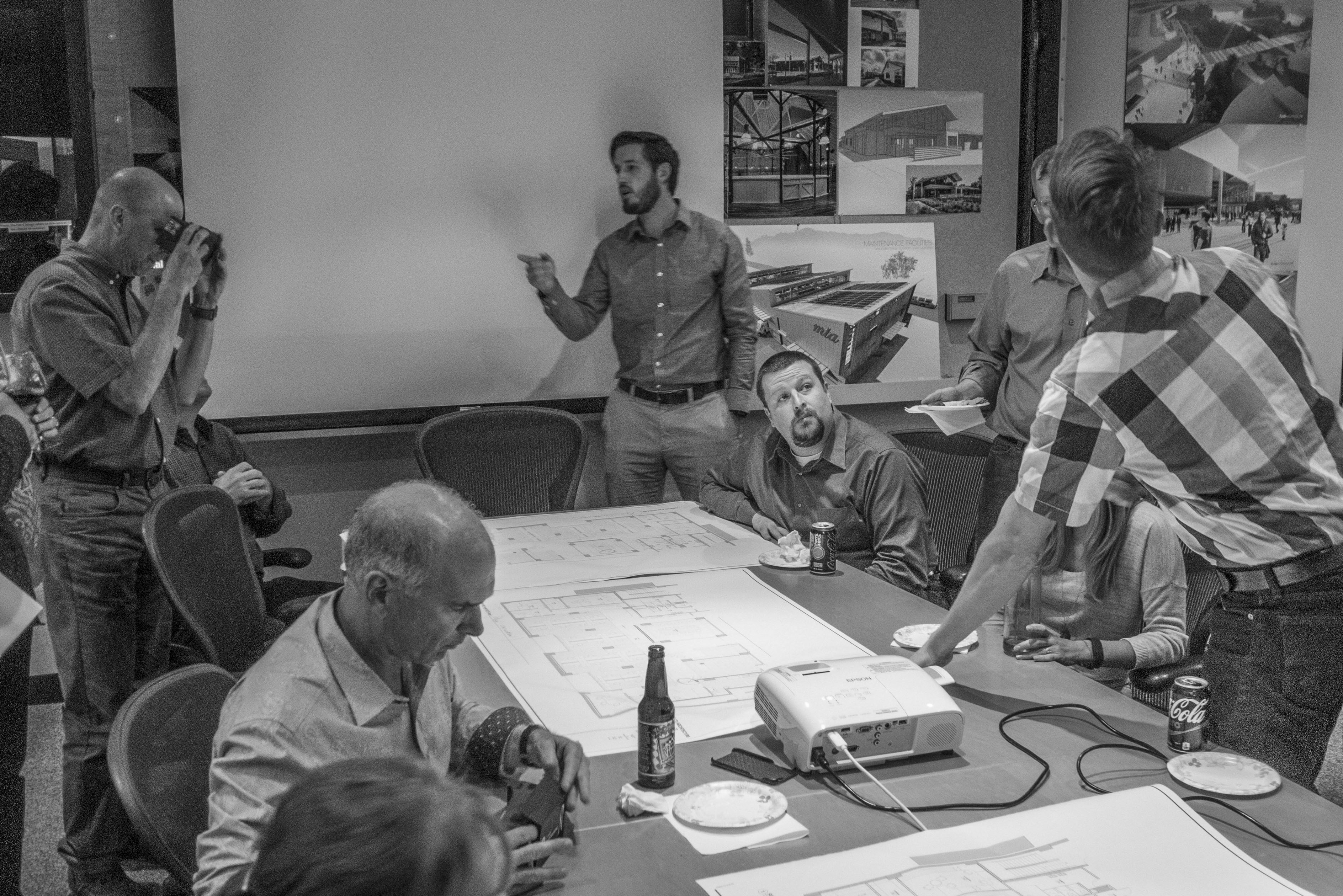 I decided to give it a go and developed several views of 3d panoramas of a current office interior design. I had less than 6 hours for developing the scene materials, lighting and final render time, and little room for production time. I was able to fire off multiple draft renders during the process and keep working the scene similar to our backburner setup for 3dsmax. This was during normal work hours though so backburner was unavailable. Normally this type of work would have been rendered over a weekend but that was not the goal of the exercise. Once I had the developed views uploaded in the cloud, I had Autodesk sprinkle some magic over the top of them. Here’s where we take it up a few more notches, by pairing Cloud Rendering with a couple of iphones and pieces of cardboard, suddenly we were immersing the whole office into the design. You can stand and look all the way around you, with total freedom – and with your body rather than a computer mouse. Amazing!
I decided to give it a go and developed several views of 3d panoramas of a current office interior design. I had less than 6 hours for developing the scene materials, lighting and final render time, and little room for production time. I was able to fire off multiple draft renders during the process and keep working the scene similar to our backburner setup for 3dsmax. This was during normal work hours though so backburner was unavailable. Normally this type of work would have been rendered over a weekend but that was not the goal of the exercise. Once I had the developed views uploaded in the cloud, I had Autodesk sprinkle some magic over the top of them. Here’s where we take it up a few more notches, by pairing Cloud Rendering with a couple of iphones and pieces of cardboard, suddenly we were immersing the whole office into the design. You can stand and look all the way around you, with total freedom – and with your body rather than a computer mouse. Amazing!
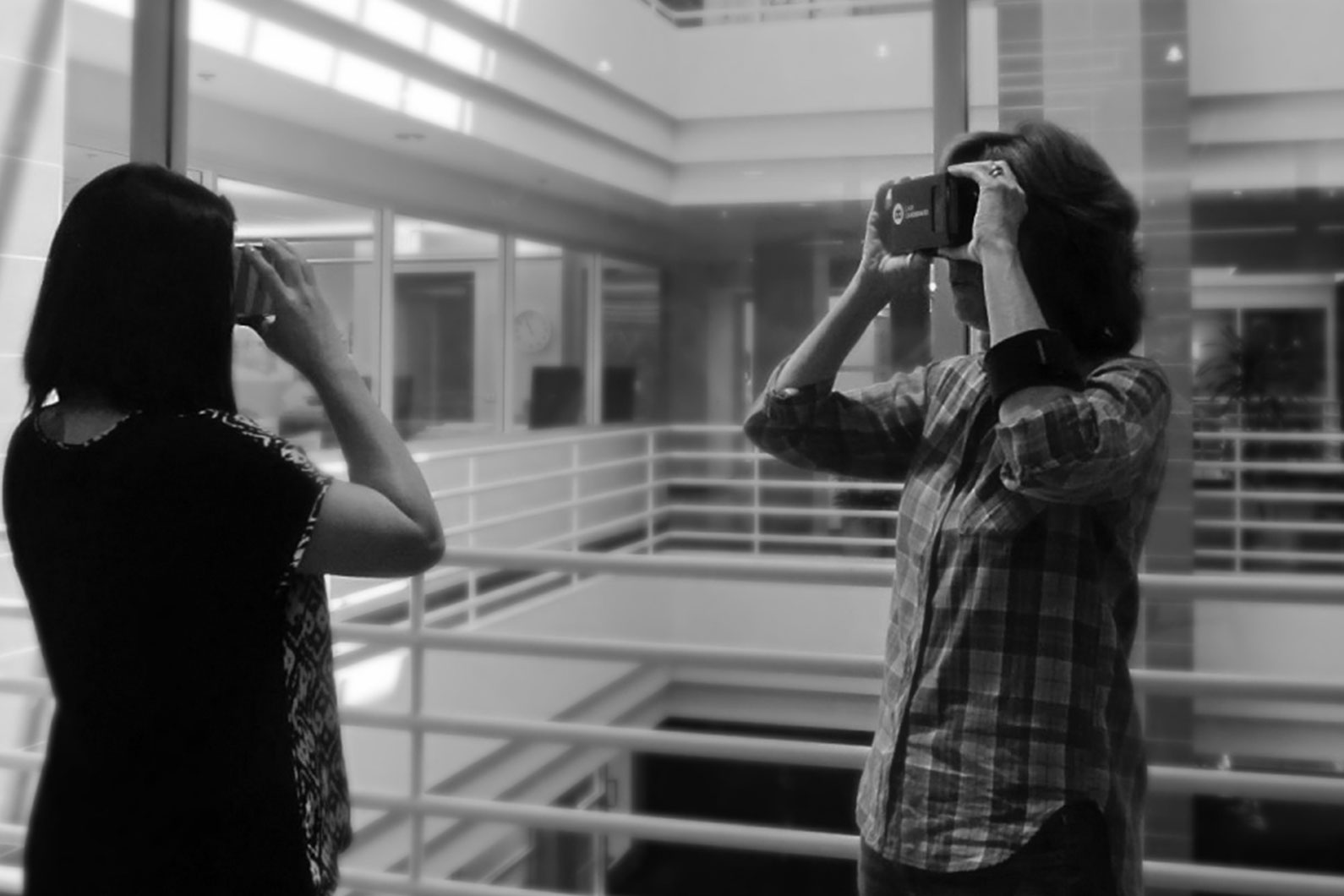 “Holy %&$#” was the phrase we heard from most of the office as first time viewers stood up to put on the goggles. It’s an amazing experience to witness the effect of going from sharing a 2D floor plan to actually putting people in the space. We are very excited for this new design horizon and you can bet TLCD Architecture is going to keep pushing it’s abilities and usability. We look forward to what Autodesk might throw our way in the near future…3D walkthroughs maybe? Who knows, but TLCD is ready and excited for what might be brewing.
“Holy %&$#” was the phrase we heard from most of the office as first time viewers stood up to put on the goggles. It’s an amazing experience to witness the effect of going from sharing a 2D floor plan to actually putting people in the space. We are very excited for this new design horizon and you can bet TLCD Architecture is going to keep pushing it’s abilities and usability. We look forward to what Autodesk might throw our way in the near future…3D walkthroughs maybe? Who knows, but TLCD is ready and excited for what might be brewing.
TLCD’s first LEED Certified project!
Carl Servais AIA
The construction of Solano College Building 600 was completed last December and we recently received news that the project has been awarded enough points to achieve the level of Certified under LEED 2009 for New Construction and Major Renovations (LEED-NC), making it the first TLCD project to officially achieve LEED certification!
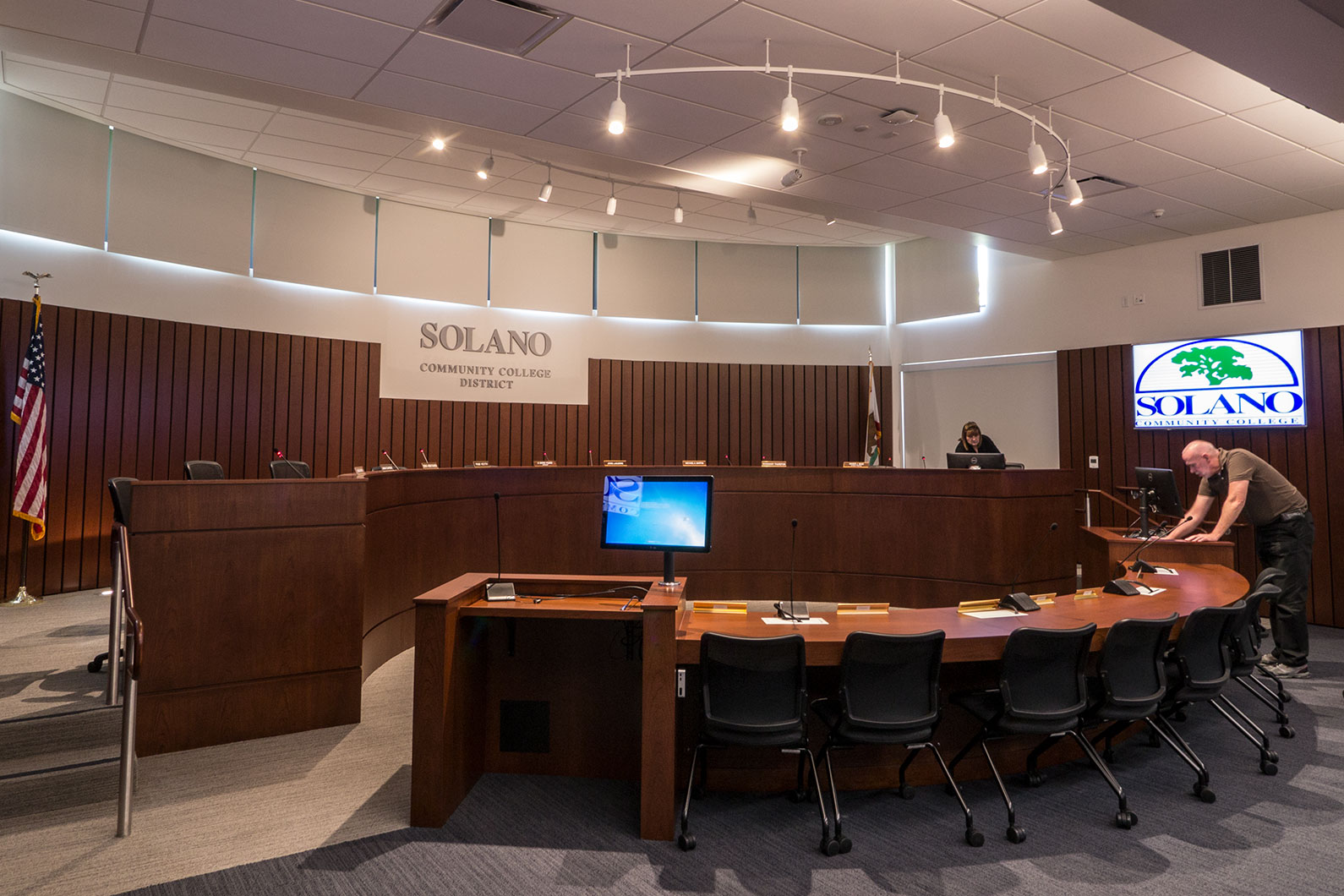
TLCD Architecture was hired as a consultant to Architect-of-Record, Henley Architects + Associates (now A2R Architects) to work throughout the design and construction process of Building 600, a 13,837sf addition and remodel project at Solano College in Fairfield, CA. The project includes bright new office space for the Solano College Administration and a wonderful new Board Room addition with high ceilings and a curved transom window that provides daylight across the beautifully crafted Cherry wood dais.

Some of the green features of this LEED Certified project include:
- High-efficiency HVAC system, designed and built by Peterson Mechanical out of Sonoma, CA.
- High-efficiency LED lighting, designed and built by Sac Valley Electric out of Sacramento, CA.
- A new high-reflectivity, Energy Star certified TPO roof over new rigid insulation.
- New insulation at all existing concrete exterior walls that, combined with other energy efficiency measures, pushed the design to perform almost 10% better than California’s already strict Title 24 Energy Code.
- Tubular Skylights from Solatube that provide natural daylight into open office spaces and corridors in the building that would otherwise have very little access to daylight due to the small amount of windows in the existing exterior. Even during construction, the contractor could work in the sky lit spaces without any electric lights turned on.
As the Project Architect for Building 600, I have to give special thanks to Green Build Energy Group, the LEED consultant who helped guide the team across the finish line, and DPR Construction, the general contractor who built the project with an extraordinary level of care and quality. This project had a lot of budget and schedule constraints, which made LEED Certification an immensely difficult task that could only have been achieved by the wonderfully collaborative effort of everyone involved.
LEED, an acronym for Leadership in Energy and Environmental Design, is a green building certification program created by the United States Green Building Council (USGBC) in 1998 to recognize buildings that take extraordinary measures towards sustainability in the areas of energy and water efficiency, material and resource efficiency, indoor environmental quality, and site design. Sustainable design is an important part of all the work we do, and we have several projects that are currently pursuing LEED certification, so we know that Building 600 will be the first of many LEED certified projects at TLCD.
Look Who’s Talking: Congress Visits the New American AgCredit Headquarters!
The new 120,000 sf American AgCredit Headquarters project by TLCD Architecture is attracting a lot of attention! Last week Congressmen Mike Thompson and Jared Huffman toured the project along with about 20 folks from the Sonoma County Tourism Bureau, led by its Executive Director Ken Fischang. American AgCredit will offer approximately 40,000 sf of lease space, and the Sonoma County Tourism Bureau will move their offices to this new space.
On the heels of the visit by our local Congressmen, TLCD staff took a tour of this amazing project this week. We walked up the temporary stairs to the 3rd floor to explore the Board Room and adjacent outdoor deck. We then checked out the 3rd floor “skybridge”, and saw where the roof walk is being installed. The roof walk will connect the two 3-story portions of the building, and will provide seating with views into the courtyard. It was a beautiful day, and we were able to admire the 360-degree views to nearby hills including Mt. St. Helena.
We also examined the mockup of the building’s perforated zinc cladding. This custom designed cladding system will be installed about 3 feet beyond the building exterior to provide shading, which in turn will greatly reduce the cost to cool what is already a highly energy efficient building. TLCD designed the cladding system with built-in pockets that will hide randomly spaced vertical LED lights around the perimeter of the building. At night these lights will be connected to a computer controller that will provide a randomly changing pattern of lights that will slowly fade on and off, creating ever-changing patterns.
West Valley College Entry Project: More Than Just Signs
Replacing entry signage and more than an acre of gopher infested turf at West Valley College in Saratoga seems most appropriate given Governor Brown’s recent statewide mandate for a 25% cut in water use. This project was conceived to highlight the identity of West Valley College on the main approach to campus. It also aimed to replace the turf with drought resistant plantings. The project, led by TLCD Architecture ultimately added a few more unexpected and interesting elements.
The signs themselves are bold new statements of West Valley College’s identity and take a fresh approach to the campus’ existing trademark logo. Designer Dickson Keyser of the GNU Group created sculptural leaf elements that stand out from the body of the three new signs and add animation to the ensemble. The 60 foot long main sign and the two electronic reader boards are made of self-healing Cor-Ten steel and merge seamlessly with the drought tolerant landscaping and the storm water recharge basin at the base of the site.
 The West Valley Campus is centered on a meandering creek lined with stunning, mature oak trees. Many of these trees have reached the end of their life cycle and are dying off. At the top of the Entry Project, Quadriga Landscape Architecture established an “Oak Nursery”. Over time this nursery will provide stock to replant the deceased trees, keeping the oak lined central spaces of campus vibrant and alive.
The West Valley Campus is centered on a meandering creek lined with stunning, mature oak trees. Many of these trees have reached the end of their life cycle and are dying off. At the top of the Entry Project, Quadriga Landscape Architecture established an “Oak Nursery”. Over time this nursery will provide stock to replant the deceased trees, keeping the oak lined central spaces of campus vibrant and alive.
Two historic palms were relocated from the location of the original farmhouse that preceded the college, when the site was orchard lands. They have been moved from an unnoticed location in the middle of a parking lot to create a fresh reminder of the history of the land.
The two reader boards are intended to announce campus events. WVC Director of Communications and Technology, Scott Ludwig, has programmed them with inspiring words that rotate on ten-minute cycles. Scott told me yesterday that students now walk up to him a spontaneously exclaim “Collaborate!” or other words of the moment, taking their cues from the reader boards.
The campus and nearby community has taken notice of the change and is appreciative of the dynamism of the statement. Over time, as they discover the other elements, it will become an even richer experience.


Modern, Energetic and Flexible Work Places are Emerging in the North Bay
TLCD Architecture’s approach to a project fully integrates architecture and interior design to create modern and energetic work places. One project, which has been getting a lot of attention, is the 120,000 SF American AgCredit Headquarters building at the Airport Business Center in Santa Rosa.
The North Bay Business Journal recently did a piece on “Designing the New Workplace” which looks at how the design of modern work environments are focusing on flexibility and encouraging collaboration.
Suzanne Nagorka, TLCD’s Director of Interior Design, was interviewed for the piece and describes how American AgCredit’s new headquarters was designed specifically for the financial institutions’ changing needs – including movable sound-insulated partition walls that can be reconfigured.
Over our 50-year history, TCLD has worked closely with a variety of clients on office planning solutions for private sector, public sector, healthcare and financial markets and we are always looking for ways to innovate and best meet our clients’ needs.
Read the full NBBJ article here.

How Many Architects Does It Take to Pack a Food Box?
That’s a rhetorical question because you can never have too many architects helping out at their local food bank. TLCD Architecture had a team volunteer at the Redwood Empire Food Bank (REFB) last Friday and it was both gratifying and a great team building exercise. A staff member gave us a tour before we settled in to pack food. Within 90 minutes we had packaged and loaded nearly 5 palettes of food boxes. Anyone remember the “I Love Lucy” episode where the assembly line items are flying by? It felt that way at first, but we got the hang of it!
We heard that the facility needs 1200 volunteers each month to get food processed and packaged, so we will definitely be back.
Carl Servais Takes on Winter in DC for AIA Grassroots Conference
As the 2015 President of the AIA Redwood Empire Chapter (AIARE), I recently had the privilege of traveling to Washington DC for the annual AIA Grassroots Conference. Over 600 architects and administrative staff gathered together to advocate important legislative issues with our representatives on Capital Hill, to receive leadership training, and to network and collaborate with each other to find ways of better serving the AIA membership. I met with AIA leaders from chapters all around the country, from coastal Louisiana to northern Minnesota. Many of the folks I spoke with had issues similar to what our local chapter faces: how to best serve a diverse set of professionals from a vast geographic area with limited resources and how to motivate and inspire the emerging professionals who will carry the leadership torch of our future. There are no simple or easy answers to these questions, but I met lots of inspiring colleagues and I returned with a renewed sense of focus and energy, and with a handful of ideas that I will bring to my fellow directors on the AIARE Board.
Here are three of the highlights of my trip:
As an architect, of course the first thing I had to do after arriving was to walk the Mall. What I hadn’t realized is how beautifully the many historical buildings and monuments are lit up at night. I grew up in Wisconsin, so the cold winter night was no problem for me.
On the first day of the conference, my schedule didn’t start until the afternoon, so I took advantage of the free time by waiting in line to see oral arguments of the so-called “Obamacare” law at the Supreme Court. I waited for about 2-1/2 hours to get in, and I only got to sit for about 3 minutes in the courtroom, but it was well worth the wait to see the court in action. Fortunately, there were about 200 protestors providing entertainment for everyone waiting in line.
Finally, Wendy Young, the AIARE Executive Director, set up meetings for us to meet with 5th District Congressman Mike Thompson, and 2nd District Congressman Jared Huffman. After receiving training from the AIA federal advocacy team about the important legislative issues that were on the table, I was prepared to discuss the following:
1. Protect and enhance the Federal Historic Tax Credit (HTC).
2. Cosponsor the Safe Building Code Incentive Act, which encourages states to voluntarily adopt and enforce nationally recognized model building codes for residential and commercial structures in order to qualify for additional post-disaster FEMA grants.
3. Cosponsor the National Design Services Act, which extends to architecture graduates student debt relief in exchange for work in underserved communities.
Unfortunately, Mother Nature intervened and dumped 6 inches of snow the day of my meeting, thereby effectively shutting the government down for the day. We still made the trek up to Capital Hill and had the opportunity to meet with Scott Rasmussen, Congressman Huffman’s Legislative Assistant. I think I made a good, confident presentation of the legislation we were there to promote and I went away feeling great about having advocated for our profession.
Academic Center at College of Marin Nears Final Completion

The new Academic Center at College of Marin, designed by TLCD Architecture and Mark Cavagnero Associates, is rapidly reaching the final stages of construction. Prominently situated on the corner of Sir Francis Drake Boulevard and College Avenue, the splendid combination of massing, materials, and craftsmanship is becoming visible as the scaffolding gradually disappears.
 One of the unique features of the building is the grand atrium space, which with the finishes installed, is now showing off wonderful qualities of natural light. The building is expected to be completed in May, with full occupancy by the College in time for the Fall Semester. The project will signal the successful completion of the District’s Measure C Bond program, approved by local voters in 2004.
One of the unique features of the building is the grand atrium space, which with the finishes installed, is now showing off wonderful qualities of natural light. The building is expected to be completed in May, with full occupancy by the College in time for the Fall Semester. The project will signal the successful completion of the District’s Measure C Bond program, approved by local voters in 2004.
Habitat for Humanity Volunteer Day – GoPro Style!
Quick update to the recent blog post on the AIA Redwood Empire volunteer day for Habitat for Humanity of Sonoma County. What I didn’t mention is that we brought the GoPro camera and had a little fun capturing our work. You’ve heard of the “birds-eye” view, we thought strapping the camera to a shovel would add an interesting perspective!
For more information on the AIARE Volunteer Day, read more here.
Birds-Eye View of New American AgCredit Headquarters at Airport Business Center
Recent aerial photographs show the new American AgCredit headquarters building taking form at the Airport Business Center in Santa Rosa. The project, designed by TLCD Architecture clearly show how the two buildings that comprise this 120,000 square foot complex wrap around to enclose a central courtyard, and how the buildings are connected by pedestrian bridges at each end.
Read other posts about the American AgCredit project:
Photographing the New North Sonoma Mountain Regional Park
Sonoma County Regional Parks opened a spectacular new park, North Sonoma Mountain Regional Park, that links the Bennett Valley/Sonoma Mountain Road region with Jack London State Park in Glen Ellen. My wife and I took to the trails and captured some of the beauty of this newest addition to our regional park system.
The park has one main trail leading to the western border of Jack London State Park near the top of Sonoma Mountain. Most hikers appeared to be doing the 2.2 mile hike up to the Bennett Valley Overlook about half way up the trail. The trails are new and while the trek is all up hill the grades are quite reasonable. There is about 800 feet elevation gain to the Overlook and about another 300 to the park boundary.
The beginning of the walk is wooded, gradually opening up as you gain elevation. With the fog last Friday morning it was stunning to look down on the layers of clouds lying in the valleys. From the Overlook there is a wide view looking from Mt. Taylor and sweeping eastward to Hood Mountain in the east.
The new park is very popular right now and while getting in during the morning was achievable for most of those I talked too, the rangers were turning away people in the afternoons. There is a narrow access road leading into the park from Sonoma Mountain Road. The turn is just short of three miles from Bennett Valley Road.
We saw about a dozen different types of wildflowers in bloom and I expect that in a few weeks it should be an even better display. Definitely worth the trip!
TLCD Getting Their Hands Dirty
You don’t often go out on a Saturday morning in January and think to yourself, “Did I need to put sunscreen on this morning?” But that’s what I found myself doing a couple Saturday’s ago with a crew of folks from the AIA Redwood Empire, including four from TLCD Architecture; Nick Diggins, Peter Levelle, Ron Starkey (Marina‘s husband), and myself. We spent the better part of that Saturday working on the second of five houses to be built at the Woodland Hills project in Cotati for Habitat for Humanity of Sonoma County. We were split into two groups, one crew building a wood fence and the other crew placing sand and pavers for the driveway. I think I speak for the whole group when I say we put in a lot of hard work, and we also had a lot of fun that day. It’s very rewarding at the end of the day to see the fruits of your labor in something as beautiful as a rustic driveway of pavers, or a fresh wood fence. It’s even more rewarding to know that your labor has helped provide a home for a deserving family in your community.
Win-Win Meeting Space for Non Profits in Sonoma County
Each year, the Board of Directors of the AIA Redwood Empire (AIARE) gathers for a retreat to strategize and plan for the coming year. This year as the current AIARE President, I organized the retreat that was held at the new Redwood Empire Food Bank (REFB) facility in Santa Rosa. In addition to supporting and partnering with an essential community assistance organization by renting the REFB boardroom for the day, the AIARE board members were also able to take time during the retreat to do some volunteer work in the warehouse. Our group enthusiastically worked on sorting carrots from a pair of 1,700 pound palettes into 3 pound bags to get them ready for distribution to families in need.
After volunteering, the AIARE board members were led on a tour of the facility by the architect, Julie Jackson, AIA of Jackson Liles Architecture in San Francisco, and by a former President of the REFB Board of Directors, Alan Butler, AIA of TLCD Architecture. Alan was board member of the REFB at a time when they had outgrown their old facility. Alan helped write the program for the innovative new facility after touring a number of food banks across the country to see what worked and what didn’t. As a result, the new facility includes elements that do more than just store and distribute food, like a small market for low income customers and a commercial kitchen that supports new programs like “upcycling” bulk foods, and culinary education for the community.
The REFB is the food distribution hub for over 175 food related non-profits and distributes almost 14 million pound of food to the region each year. They offer their conference facilities at a very reasonable rate to non-profits in order to expose their operation to a wider audience. Check out the REFB if your non-profit needs a meeting space!
Welcome to the Beach
We started the surface refinishing of our new office! As usual photos don’t do it justice. I did manage to sneak in during their lunch hour and take a peek at the transformation in its early stages. The concrete is taking on a satin feel which is truly remarkable to experience. I wish all concrete could be like this… Oh and another bonus, having an indoor beach is be pretty cool for office parties too.
Wondering how that giant opening got in this solid concrete box?
Recognition for the Mendocino College North County Center in Willits
 The Mendocino College North County Center in Willits was recently named a winner in the education category of the North Bay Business Journal’s awards program for Top Real Estate Projects in the North Bay. The North County Center, designed by TLCD Architecture and built by Midstate Construction, opened in the Fall of 2013 and has spurred a growth in the number of students enrolling in classes at the Center. The heart of this facility is the Learning Center, a collaborative learning resource environment with a pair of redwood barn doors that open to administrative space and a wood and glass sliding storefront wall that connects to a computer classroom. The redwood barn doors and redwood board paneling on the interior serves to complement weathering steel panels on the building’s exterior that are slowly oxidizing to a beautiful rust red color.
The Mendocino College North County Center in Willits was recently named a winner in the education category of the North Bay Business Journal’s awards program for Top Real Estate Projects in the North Bay. The North County Center, designed by TLCD Architecture and built by Midstate Construction, opened in the Fall of 2013 and has spurred a growth in the number of students enrolling in classes at the Center. The heart of this facility is the Learning Center, a collaborative learning resource environment with a pair of redwood barn doors that open to administrative space and a wood and glass sliding storefront wall that connects to a computer classroom. The redwood barn doors and redwood board paneling on the interior serves to complement weathering steel panels on the building’s exterior that are slowly oxidizing to a beautiful rust red color.
As Project Architect for the North County Center, this was the first project at TLCD that I was able to work on from conceptual design all the way through construction. When my Mom came to town for a visit, this is the project I took her to see. I am anxious to see the final results of this oxidation process so that the complete design vision can be realized (and so we can do the final photography!). I can’t complain though since I got to work with a couple of folks from the College, Mark Rawitsch, Dean of Instruction, and Mike Adams, Director of Facilities Planning, who had to wait more than 25 years to see the North County Center realized! I guess it’s like they say, all good things are worth waiting for.
Rapid Prototyping: Captured on Video
This was the perfect project to take a test drive of Autodesk’s Dynamo for Revit and see what we could do. Dynamo is a new, exciting, visual programming software that is similar to Grasshopper for Rhino. We are actively beginning our exploration into computational design, and have already begun to see its benefits as we integrate Dynamo into TLCD’s BIM design process. In this quick exercise we were able to quickly develop eight different iterations from our design. Don’t miss the video and take a peek of us creating an addicting, generative design solution to share and discuss with the entire office and friends!
Check out an earlier blog post from December that started this conversation. Rapid Prototyping: Exploring Multiple Design Options
TLCD @50
This morning everyone at TLCD Architecture toasted our 50th anniversary. Quite the milestone!
It began on January 1st of 1965 when Tom Tomasi left Steele & VanDyke, then one of Santa Rosa’s 2 primary architectural firms to begin his own practice. He worked above Stanley’s Music (now Skeeters, et. al.) on 4th Street in Santa Rosa in a rear office with a view of the blank wall of the (now former) Topaz Room. From those humble beginnings he moved into a well-known Victorian house at the corner of Sonoma and Brookwood Avenues, also in Santa Rosa.
Several years later George Lawry began his own firm, later joined by Ken Coker and Joel DeSilva. LCD’s office was also on Sonoma Avenue, just a couple blocks down the street from Tomasi Architects. In 1993 all of these initials (and a couple dozen others!) came together to create Tomasi, Lawry, Coker, DeSilva, later TLCD Architecture.
At 50 TLCD Architecture has a rich legacy of completed projects, and continues to be a positive force in the communities in which we work. We continue to grow and evolve, and look forward to new and exciting things in the years ahead.
We’ll more formally celebrate this important milestone later this year, once we’ve moved into our new space at Museum on the Square. But kicking things off with a nice Sonoma County sparkling wine on the first workday of the year isn’t a bad way to get the celebration rolling!
Rapid Prototyping: Exploring Multiple Design Options
One year ago TLCD Architecture purchased an Universal LS 6.60 laser-cutting machine. This amazing piece of equipment can cut and etch wood, cardboard, plastic and metal with precision cuts to 3/1,000 of an inch. We are still exploring all the options of what this technology can do.
The laser cutter is being used primarily for producing architectural models. It can take digital files and make incredibly precise cuts at a small scale. Something very difficult to do with an X-Acto knife… and with fewer sliced fingertips!
We are currently exploring the ability to do rapid prototyping, which means we can easily explore multiple design options in model form very quickly. This process took many hours of hand cutting in the past and rarely produced more than one option.
This last week Nick Diggins and Carl Servais from our office experimented with a new workflow made possible by the Dynamo scripting software now available within the Revit modeling software that is our mainstay architectural design tool. They created eight different versions of a complex perforated 3-D form for centerpieces for our holiday party at DeTurk Round Barn. With the scripting software, Revit output can be prepared for the laser cutter quickly and design options created and manufactured with the laser-cutter.
One exciting possibility is that the models can be scaled up and architectural designs can be fabricated at large scale with CNC Routing machines for wood and softer materials, and plasma cutters for metal and other more durable materials. Forms that were nearly impossible to conceive of or too expensive to fabricate by hand are now easily accessible. The possibilities are endless!
Watch the video we produced on our GoPro of this fabrication process. Rapid Prototyping: Captured on Video
New Academic Center at College of Marin Will Create Iconic Identity
 The new Academic Center for College of Marin is currently at 60% construction and scheduled for completion in April 2015. Located on the corner of College Avenue and Sir Francis Drake Boulevard in Kentfield, this project replaces 3 aging academic buildings and Mexican restaurant formerly located on this prominent corner. Set against the backdrop of Mount Tamalpias, the Academic Center will provide a new and iconic identity for the college.
The new Academic Center for College of Marin is currently at 60% construction and scheduled for completion in April 2015. Located on the corner of College Avenue and Sir Francis Drake Boulevard in Kentfield, this project replaces 3 aging academic buildings and Mexican restaurant formerly located on this prominent corner. Set against the backdrop of Mount Tamalpias, the Academic Center will provide a new and iconic identity for the college.
The new building will house classrooms, as well as faculty and administrative offices. A central classroom atrium and a courtyard built around a majestic oak on the upper level will make this a most distinctive academic environment within the college.
The project is the result of a design competition won in a collaborative effort with TLCD Architecture of Santa Rosa and Mark Cavagnero Associates of San Francisco. The Academic Center was developed with substantial input from the students, staff, faculty and community in a series of workshops and public forums.
Groundbreaking Ceremony for Transit Facility in Chico
At a formal ceremony earlier in October, ground was broken for the new Butte Regional Transit Operations Center In Chico, California. The new 10-acre, 41,000 square foot facility, designed by TLCD Architecture, replaces the current, outdated and undersized 3-acre bus operations and maintenance facility.


BCAG is an association of all the local governments within Butte County. It is responsible for development of federal and state transportation plans and programs that secure transportation funding for the region’s highways, transit, streets and roads, pedestrian and other transportation system improvements. BCAG is also the administrative and policymaking agency for the region’s public transit “B-Line” bus service.
The 10-acre Butte Regional Transit Operations Center will provide administrative, operations, maintenance, as well as bus wash and fueling. An orchard-like grid of trees responds to the extensive orchards that surround the city of Chico, and firmly place the project in its regional context. This “orchard” provides shade to parking lots and areas around buildings. It extends to the street in lieu of street trees.

Large shade canopies are covered by a photovoltaic array capable of meeting most or all of the facility’s electrical needs, while providing shade for a significant portion of the bus fleet. The photovoltaic array is one of many sustainable design features of the project, which is targeting LEED certification at the Silver level.
To view a real time webcam of the project, click the Kitchell link below…
TLCD Architecture’s Don Tomasi Celebrates 30th Work Anniversary!
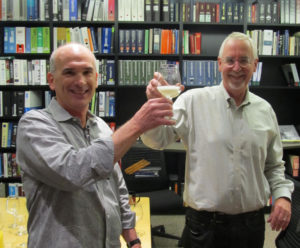 By Alan Butler, Principal TLCD Architecture
By Alan Butler, Principal TLCD Architecture
In today’s world it’s rare to stay anywhere for 30 years, so it’s with great excitement that we celebrate the 30th work anniversary of my friend and partner Don Tomasi. Our paths nearly crossed in the summer of 1984 when unbeknownst to each other, Don and I were working and living on the same street in Seattle, Washington. Later that year, Don returned to Santa Rosa to work for his father at Tomasi Architects. The following year in 1985, I returned to Santa Rosa and began working at Lawry Coker DeSilva Architects… located at the other end of Sonoma Avenue as Tomasi Architects. Although blocks apart, it would be another few years before we met.
In 1993 the two firms merged to form Tomasi Lawry Coker DeSilva Architects later to become TLCD Architecture. In the ensuing 21 years that we’ve worked together, the firm has grown to become a premier design firm in the North Bay region. It is under Don’s design leadership that the firm has evolved to produce a wide range of innovative and finely crafted projects in the education, healthcare, civic and commercial realms.

To mark this occasion, we started the day with cake and champagne at the office, and then Don will fly down to Los Angeles with TLCD Architect Kevin Teel to accept an AIA California Council Design Award for the DeTurk Round Barn project located in Santa Rosa. This is the 7th award for this notable historical project, and the first AIACC award for the firm. Not a bad way to celebrate a milestone work anniversary!
It’s been quite a ride, and next year TLCD celebrates its 50th year of practice since Don’s father founded the firm in 1965. In spring 2015, we will be moving our office to the Museum on the Square building in downtown Santa Rosa. Like so many other projects he has been involved with, I believe Don’s vision for Museum on the Square will be a transformative event in the life of our city.

I am glad we finally made the journey down the block and got together. I am proud to have been Don’s partner during many of his 30 years in practice. The relationship has always been rewarding and we have been blessed to find a group of talented people to work with. Happy 30th anniversary and here’s to many more!
Rammed Earth Wall Rises at TLCD Project
Of particular note, soils were collected from various geographic areas from across the western United States serviced by American AgCredit. The colors of these soil samples were then matched to soils of the particular consistency necessary to provide the structural integrity required. This prominent wall will reflect the diverse geography serviced by the company, which makes loans for agriculture. It also reflects the fact that soil, along with sun and water, is one of the key components of agriculture.
We all look forward to seeing the results; waiting until next year is going to require patience!
Two of TLCD’s Best Recognized at AIARE Chapter Awards
It’s always a thrill to see team members recognized for their involvement in the local design community. TLCD Architecture’s Nick Diggins, Associate AIA and Carl Servais AIA, were recently recognized by the American Institute of Architects’ Redwood Empire (AIARE) for their service to the Chapter.
Nick Diggins was recognized as Associate Member of the Year. In addition to serving on the AIARE Board as Associate Director, Nick volunteers his time at a number of AIA events including the Chapter’s Residential Showcase and Design Awards programs. He also lends his stellar graphic design skills to the chapter as needed. After earning a Masters of Architecture from Montana State University in 2010, Nick joined TLCD as an architectural intern. He is currently pursuing licensure and is in the process of taking the ARE exams. Nick quickly immersed himself in all aspects of design at TLCD, and livens things up with his quirky personality and boundless enthusiasm. He has led TLCD’s push towards digital fabrication, and is experimenting with different media and applications. Nick is actively involved in the design of TLCD Architecture’s new office in downtown Santa Rosa and is a key team member on the 120,000 sf American AgCredit Headquarters Building, currently under construction at Airport Boulevard. Nick lives in Santa Rosa with his wife Mindy and their two sons Seamus and Deklyn, where they’re currently developing high module recovery systems for outer space time travel (editorial addition by Nick).
Carl Servais, AIA, was recognized as Young Architect of the year. Carl has served two years on the Board, last year as Director of Chapter Affairs and as Treasurer for 2014. During his time on the Board Carl organized a membership drive, organized a build day for Habitat for Humanity Sonoma County, and assisted with the Chapter’s Residential Showcase and Design Awards programs. Carl is a Project Architect at TLCD and co-leads Building Information Modeling (BIM) training and mentoring at the firm. He is currently exploring linking and coordinating Revit models with project specifications and is working on a new multi-use building that is a pilot project for this endeavor. Carl is an educator and has taught Digital Architectural Drafting and BIM courses at local college campuses. A quiet personality, Carl unleashes his power on the TLCD bowling team where he not only delivers consistent strikes, but also has been known to shatter bowling balls! Carl and his wife Lauren, an English instructor at Santa Rosa Junior College, have two daughters Chelle and Halle.
Everyone at TLCD Architecture joins the AIA Redwood Empire Chapter in congratulating Nick and Carl for their dedication to the Chapter and to our profession!
TLCD Architecture Recognized at AIA Redwood Empire Design Awards
On Saturday evening at the American Institute of Architects, Redwood Empire Chapter 2014 Design Awards, TLCD Architecture was honored to receive two awards for outstanding projects. The program, juried by a distinguished panel of architects from the Bay Area, Los Angeles and Chicago recognizes design excellence in the North Bay.
TLCD received a Merit Award for the Luther Burbank Savings Headquarters Branch in downtown Santa Rosa. This project converted the former Traverso’s deli into a striking, modern building that marks the western entry into downtown Santa Rosa. This project has received other accolades, but this is its most prestigious award to date.
TLCD’s second award of the evening was a Citation Award for the Mendocino College Lake County Center in Lakeport. This new satellite campus is boldly modern, yet fits comfortably into its rural environment. The buildings are carefully oriented in relation to an adjacent creek and views to nearby hills. The Lake Center was awarded an IIDA Northern California Chapter Honor Award earlier this year.
“TLCD is a firm with a fascination for creative possibilities. Our work represents a contemporary vision of what our communities can be, while deeply respecting the architecture and character that makes this region unique. We are thrilled to have our work acknowledged by the design community”, said Don Tomasi, Principal.
TLCD Architecture: Always a Best Places to Work!
The votes are in and once again TLCD Architecture has been voted a Best Places to Work by our team! The annual North Bay Business Journal survey highlights local firms that have great workplaces. TLCD has no shortage of good times, professional fulfillment and camaraderie to share. This is a team that enjoys working collaboratively during office hours, as well as playing well together after hours.
This blog was launched 5 years ago with a goal to talk about our company culture, feature interesting updates on our projects and engage in a conversation about the practice of architecture. We hope it shows the world a little about ourselves and what makes TLCD a great place to work!
Sneak Peak at the Future of Banking

This week the Santa Rosa, California based Exchange Bank held a well-attended ribbon cutting for the grand “reopening” of its Windsor branch. The bank was completely renovated and will serve as the bank’s prototype “Bank Branch of the Future”. The project was designed by TLCD Architecture of Santa Rosa, California in conjunction with DBSI of Chandler, Arizona. Midstate Construction of Petaluma, California was the General Contractor, and Trope Group of Santa Rosa provided furniture specification and installation services. Design of custom furniture was a collaborative effort with DFM Furniture out of San Francisco, who specializes in custom wood casegoods.
Surprisingly, the most unusual aspect of the project isn’t inside; a new outdoor patio offers a casual seating area for customers to relax or do their banking online. It is the only known outdoor bank patio according to those at the opening (if anyone is aware of others, we’d be interesting in knowing!). The patio has been a big hit, and is being enjoyed by many of the bank’s customers.
A customer arriving at the branch is in for a surprise. They are first greeted by a concierge, who accesses the customer’s needs then directs them to the appropriate employee. Then another surprise; it becomes immediately apparent that there are no teller lines. Instead, customers interact with employees at sit-down semi-private offices, or at informal cash bars.
Cash bars are freestanding stand-up tables at which the customer and employee stand side by side during transactions! A “cash recycler” facilitates this informal arrangement. A cash recycler is a complex machine that handles a couple of simple, but important tasks—accepting and dispensing cash. It also stores money securely, keeps an accurate accounting of cash on hand, and automates the cash cycle. Both the cash bars and semi-private offices are equipped to handle any type of transaction
Other important features of the branch include a video conference room where customers can meet remotely with employees at Exchange Bank’s various locations about wealth management, trust services, and other services not provided at the branch. A coffee bar, kid’s area, and lounge give the branch hospitality feel, and make for an inviting environment for customers. Even if you are not yet an Exchange Bank customer, stop by the Windsor branch and check out what the future of banking looks like.
Keeping up with Architectural Fabrication Techniques

Alan Butler AIA
As architects, it’s critical to keep up with new materials and emerging fabrication techniques. The materials we use, the way they go together and their application in buildings is constantly changing. In an effort to better understand the potential of new fabrication tools, TLCD Architecture purchased a laser cutter at the beginning of 2014. Small, but powerful and precise, it’s an incredible tool for making mockups and architectural models. We can cut wood, plastics and paper up to ½” thick and and to a maximum size of 18”x 24”. We are now able to quickly produce models and look at various design options very quickly versus the time consuming process of hand cutting mat board with a utility knife. Recently, we’ve been experimenting with designs for screen elements at our new office in the Museum on the Square building in downtown Santa Rosa. We’ve been producing some beautiful prototypes of the screens, but the question arises… how do we make the full size version?
So as any curious design firm would do, we set out exploring. Last week, Nick Diggins and I visited Gus Dering’s cabinet shop in Cotati to see a CNC (Computer Numerically Controlled) Router in action. The shop is called Sonoma Country Pine, but we didn’t see any cabinetmakers with hand planes making colonial style cabinets. Rather we saw the Selexx Chief CNC Router in action. This machine has an eight bit rotating tool head that can cut, drill and route all the parts for a cabinet body in a matter of minutes. The machine holds the plywood in place with the suction of two vacuum pumps, through a sacrificial layer of low density fiberboard. With incredible precision it can cut all the parts to tolerances of thousandths of an inch. Because of the sophisticated programming there is little waste, sometimes only the sawdust from the router bit! The machine is so precise, it can produce “miter folded” applications leaving the last 3/1000th of the veneer face in tack, so plywood sheets can be folded with seamless corners. With the CNC Router, Gus produces cabinet parts for his own shop and several others.
A few days prior, Nick Diggins and TLCD Principal, Don Tomasi visited the shop of Klaus Rappensberger, a Sonoma County sculptor and craftsman. They discussed the option of making screens from sheet steel and cutting the screen patterns with a water jet cutter. We are now considering what we can produce in-house with our laser cutter, or possible options with these other digital technologies. The possibilities and potential are endless. The more we understand, the more we can do.
The Emergency Department – Considerations for Innovative and Strategic Design

By Julie Wycoff
I recently had the pleasure of attending a conference focused on Emergency Department design hosted by The Center for Healthcare Design and held at the AIA San Francisco. TLCD Architecture is a corporate affiliate of the CHC which gives us access to a wide array of seminars, webinars and conferences related to healthcare design. The topics presented at the ED Design Conference delved deeply into the current thinking of how Emergency Departments are designed and organized with an eye to better addressing long wait times, delivery of care, and responding to an ever-changing healthcare environment. The presenters were a mix of healthcare providers and designers specializing in Emergency Department design.
Over the course of the discussions, some key themes emerged:
- Eliminate Triage
Triage based intake practices are outdated and increase wait times and create backlogs. More and more EDs are going to “Split Flow” patient intake and rapid treatment methods whereby patients are seen immediately and are either treated in a low acuity area or are sent to an ED treatment room. Patients never return to the waiting area, but are constantly kept moving through their care.
- Design for Flexibility
Emergency Departments must be designed so that they can respond to all types of patients and all types of events. Rather than designing highly specific treatment rooms, all rooms should be of a universal design that can accept any patient at any time.
- Evaluate the Problem
The answer to the problem of overcrowding and long wait times isn’t necessarily adding more treatment rooms or space. Often a thorough evaluation of staffing and patient intake patterns can lead to changes that do not require costly changes to the physical environment.
The Emergency Department is increasingly the primary healthcare access point for many in this country not only for trauma patients but for those with chronic conditions to the mentally ill. As such, EDs must be able to rapidly adapt to these types of patients in addition to everything from an infectious disease outbreak to a natural disaster. Designers and providers can work together to create spaces that can effectively deliver care, provide an organized work environment for staff, and a safe, healing space for patients. Knowing the needs of Emergency Departments and the challenges they face allows TLCD to help our healthcare clients plan their Emergency Departments for the present and future.
Lowery Student Center – Transformation Inside and Out
From outdated library (view spectacular new Library here: Mendocino College LLRC) to the Lowery Student Center this project shows how an existing building can be repurposed for additional important functions. Since the new library location would essentially displace all existing student center functions on campus (bookstore, student lounge and café / dining) it was decided that the old library location would be a perfect fit for their relocation. To this end Midstate Construction deftly handled the idiosyncrasies of working in an older building.
By opening the western wall of the building a dramatic entry element was realized. Entering the main gathering space, campus users can easily navigate between the student lounge (complete with pool table and gaming devices), bookstore, or the greatly expanded Schat’s Café and dining area. This is a great place to get morning coffee, a Danish, and maybe finish the homework in a relaxed setting! The light filled spaces are accented with warm, rich recycled redwood paneling by Viridian.
It was also a great opportunity to consolidate all of these functions around a wonderful new courtyard. The courtyard now serves large campus gatherings and student activities. In a time where campuses find it hard to persuade students to stay on campus, beyond class time, this consolidation / modernization is sure to help on this campus.
Wine Business Institute at Sonoma State Receives $3 Million Gift
 The press was lighting up this week at the news of a $3 million donation for the Wine Business Institute at Sonoma State University. The transformation of the former University Commons building to the home of the 16 year-old wine program is being supported through generous gifts from key partners in the wine industry such as Marvin Shanken of the Wine Spectator Scholarship Foundation.
The press was lighting up this week at the news of a $3 million donation for the Wine Business Institute at Sonoma State University. The transformation of the former University Commons building to the home of the 16 year-old wine program is being supported through generous gifts from key partners in the wine industry such as Marvin Shanken of the Wine Spectator Scholarship Foundation.
TLCD Architecture is pleased to be working with Sonoma State on designs for the Wine Institute and we have enjoyed the opportunity to help create an innovative and collaborative learning center that will support wine business education, both locally and internationally. Look for future updates as this exciting project moves forward!
Read full article in North Bay Business Journal
Read full article in Press Democrat
Mike Hauser Algebra Academy: Mentoring Students in Math and Technology
For the past 3 mornings, TLCD Architecture has hosted 30 freshman high school students attending the Mike Hauser Algebra Academy, now entering it’s 7th year. This is a tutoring program organized by the Santa Rosa Chamber of Commerce to assist students in becoming proficient in algebra to meet graduation requirements. TLCD joined other local businesses – Agilent Technologies, Medtronic Cardiovascular, JDSU, PG&E and the City of Santa Rosa Utilities Department in providing classroom space within their companies. One of the primary goals of the MHAA program is to show the students the connection between math and technology and how it’s used in the real world work place.
Between instructional sessions, TLCD staff offered insights into the architectural profession with presentations on recent local projects, architectural rendering techniques, and 3D design and drafting with a laser cutter demonstration that created a personalized name plaque for each student. A previous MHAA session was held at the City of Santa Rosa’s Utilities Field Office, designed by TLCD and it provided an opportunity for staff to present the design and drafting efforts required to construct a physical space recently used by the students.
The MHAA instructor, Math and Science teacher Aaron Prysock called TLCD’s presentation “spot on” and hopes he can return with next year’s academy classes.
Touring the Largest Collection of Wine Artifacts in the United States
Yesterday, a group from TLCD Architecture had the rare opportunity to visit the largest and most diverse single collection of vintage wine related and viticultural artifacts in the United States. Jim McCormick, long-time collector, antique dealer and specialist in wine and viticultural antiquities, led the tour. His collection comprises 30 years of travel, hunting and gathering unique hard-to-find viticultural rarities from the wine regions of the United States and abroad, with an emphasis on California. It includes over 4,500 historical artifacts.
The collection is housed in Jim McCormick’s 2nd floor downtown Petaluma gallery, and in 3 barns located outside of town. We were amazed at the quality and diversity of his collection, but were equally impressed by the excellent condition of the objects; Jim has painstakingly restored each item, arranged them for display, and maintains them in beautiful condition. It is almost incomprehensible that one person can maintain 4,500 objects and the spaces they are housed in. Simply amazing! Jim is knowledgeable about each and every item in his collection, and is exceptionally passionate about what is obviously a labor of love. We feel honored to have been able to visit the collection, and to learn about the intricacies of many of the objects and their historic importance to the wine industry.
Much of his collection will be housed in the California Wine Museum (CWM), currently being designed by TLCD Architecture in collaboration with exhibit designer David Edquist of EDQ Design. The CWM will be located in Museum on the Square in downtown Santa Rosa and is expected to open in late 2015. The mission of the Museum will be to preserve and exhibit California’s wine heritage, educate visitors about state-of-the-art winemaking plus learn the nuances of wine appreciation.Visitors will be immersed in interactive exhibits of California wine history and wine making that include over a thousand of Jim’s artifacts.
http://www.californiawinemuseum.com (collection)
http://www.californiawinemuseum.org (museum)
http://www.edquistdesign.com (EDQ Design)
It Takes a Team to Skin a Hospital
The exterior of the existing Kaiser Santa Rosa Hospital, built in the early 1990s was showing the signs of age and was in need of replacement. TLCD Architecture and Swinerton Builders worked together to replace the exterior building skin with a new composite metal panel system. The project not only provided a solution to a deteriorated exterior, it also reinterpreted the original architecture into a contemporary building. The meticulous installation of the composite metal panels was an important aspect of the design and worked with the complexity of the existing building geometry to modernize the identity of the building and campus. The use of virtual models, physical models and on site mock-ups made the precise installation possible and turned the design intent into reality.
The project needed to be constructed in phases to allow the hospital to remain fully operational throughout construction. The design and construction team worked together with the facility to develop construction sequencing and installation strategies that evolved throughout construction to minimize disruptions to the facility and keep them operational.
It was an amazing process to be a part of and the successful results speak to the teamwork involved to “Skin the Hospital”! Check out this video put together by Swinerton Builders for more on the project.
Museum on the Square: Fiat Lux (Let There Be Light)

This morning the upper floors of Museum on the Square were flooded with light as the first exterior concrete panels were removed. Saws with blades as large as 36 inches in diameter sliced through concrete panels weighing upwards of 22,000 pounds each. A large crane then gently lifted the panels to the ground where they will be broken apart and recycled.
A total of 9 concrete panels were removed today, about one third of the total panels that will be removed during the course of construction on this project designed by TLCD Architecture.
Exterior demolition continues on the opposite, Courthouse Square side of the building where exterior precast panels are being removed by jackhammer prior to the removal of the structural concrete walls. On the interior, portions of the concrete floor slabs are being removed to accommodate new elevators and stairs.
The changes to the interior space are going to be dramatic as natural daylight visits this building for the first time!
Concrete Saws in Action at Museum on The Square!

This week heavy-duty concrete saws began cutting through walls as thick as 15 inches at Museum on the Square. This existing 5-story building, formerly a nuclear blast resistant telephone switching building, was constructed without windows. The building is now being converted to retail, office and museum use, necessitating the removal of large portions of the concrete walls.
The saws are mounted to rails that are attached to the building walls. Blades as large as 3 feet in diameter slice through the concrete. A very small length of the total perimeter of each new window opening is left uncut. Once all of the new window openings have been cut in this manner a large crane will be brought in, the final cuts will be make in order to free the panels from the building structure, and the panels will be lowered to the ground to be demolished, then removed.
Currently concrete sawing is occurring on the south face of the building. On the more visible north side – from Courthouse Square, there are two layers of concrete. The outer, precast concrete panels are being removed by jackhammer before the structural concrete can be removed. Concrete is also being removed on the interior of the building to accommodate new elevators and stairways. Interior demolition of walls, ceilings and equipment is nearly complete.
Check back for further updates!
Groundbreaking at Santa Rosa's American AgCredit Headquarters
Approximately 200 people turned out yesterday for the formal Groundbreaking Ceremony for American AgCredit’s new 120,000 square foot headquarters building in the Airport Business Center, just north of Santa Rosa.
Designed by TLCD Architecture, the iconic zinc-clad structure will feature three floors of office space wrapping around an enclosed outdoor courtyard, two roof decks, and three “sky bridges”.
Several executives and board members from American AgCredit, along with Sonoma County 4th District Supervisor Mike McGuire spoke about the project, American AgCredit’s recommitment to keeping its headquarters in Sonoma County and how the project will allow the organization to accommodate projected growth. Then Supervisor McGuire along with representatives of American AgCredit, TLCD Architecture, and JMA Construction dug the ceremonial first shovelfuls of dirt. Following the ceremony, guests and dignitaries enjoyed snacks and beverages under a agent on what proved to be the hottest day of the year to date!
Construction will last approximately 18 months, with completion scheduled for November of 2015.
Savannah: America’s First Planned City
Buzz of Construction Activity at Museum on the Square
 Construction activity moved outside this week as crews from Richmond-based C. Hammond Construction began taking down some of the exterior facade on the former AT&T Building in downtown Santa Rosa. On the 3rd Street side of the building, another crew put up a maze of scaffolding in preparation for the removal of the precast concrete panels.
Construction activity moved outside this week as crews from Richmond-based C. Hammond Construction began taking down some of the exterior facade on the former AT&T Building in downtown Santa Rosa. On the 3rd Street side of the building, another crew put up a maze of scaffolding in preparation for the removal of the precast concrete panels.
Located at the crossroads of Santa Rosa Avenue and and 3rd Street, this highly visible project will be a literal buzz of activity over the coming weeks and months. Teams from TLCD Architecture will be seen in and about the building throughout construction as we begin the transformation to the new Museum on the Square mixed-use project.
Stay tuned for more updates!
At Last! Demolition of AT&T Building Begins
After 7 years of planning, redesign, and changing political winds, TLCD Architecture’s Museum on the Square project is finally underway! A front page article in the Santa Rosa Press Democrat this morning discussed current demolition activities and the upcoming removal of 18 inch thick concrete walls. Large sections of concrete will be removed from the currently windowless building by means of industrial concrete saws, lowered by a large crane onto flatbed trucks, then removed and recycled. As developer Hugh Futrell noted, this will be a particularly exciting phase of the project. In my opinion it can’t happen soon enough!
This 100,000 square foot landmark downtown Santa Rosa project will be completed in early 2015. We will call the 3rd floor home and are currently busy designing our new office. Stay tuned for details!
IIDA Northern California Honors TLCD at 2014 Awards Gala
At an evening ceremony held on March 19th, TLCD Architecture received an Honor Award from IIDA Northern California for the interior design of the Mendocino College Lake Center. The annual event, held at the beautiful Fox Theater in downtown Oakland, celebrates the very best in interior design. Nate Bisbee, Suzanne Nagorka and Domenica Sheets were present from our office and enthusiastically received the award in front of a packed house.
“We are so pleased that the IIDA jury chose to recognize the modestly-scaled project in Lake County as one of this year’s recipients. The new Lake Center Campus is the result of a 4-year long collaboration with Mendocino College staff and faculty. We could not be happier with the outcome! For our team of collaborators, this honor is a great way to recognize the tireless efforts of those who made the project a reality. We hope you appreciate the palette of simple, natural materials and the genuine care we put into the details,” said Nate Bisbee, lead Architect and Designer.
In 2013, TLCD Architecture received the IIDA NC Honor Award for the DeTurk RoundBarn. Back-to-back wins have us feeling well-loved!
Museum on the Square: Santa Rosa Revitalization Project to Begin Construction
 TLCD Architecture just learned that the project loan for Museum on the Square has been approved and that construction of this high profile downtown Santa Rosa project will commence immediately. The team at TLCD Architecture wasted no time in celebrating the news today with sparkling wine!
TLCD Architecture just learned that the project loan for Museum on the Square has been approved and that construction of this high profile downtown Santa Rosa project will commence immediately. The team at TLCD Architecture wasted no time in celebrating the news today with sparkling wine!
The idea for Museum on the Square began in July 2008 when TLCD Architecture decided to pursue the prospect of renovating the building to house, among other tenants, our own offices. The Hugh Futrell Corporation formed a project team to develop the building, and nearly 6 tumultuous years later, TLCD is within a year of taking occupancy of the 3rd floor.
Construction of Museum on the Square will begin Monday, March 24th, with completion and occupancy slated for early next year… just in time for TLCD’s 50th anniversary! Museum on the Square will be the first large-scale construction project in the heart of Santa Rosa’s downtown in nearly 2 decades and will play a significant role in the revitalization of Courthouse Square. Luther Burbank Savings, a local lending institution will occupy the 4th and 5th floors, and a restaurant and The California Wine Museum will anchor the lower street level.
TLCD will continue to post updates on this exciting project as construction and interior renovations progress!
Academic Center Taking Shape: Steel Topping Out at College of Marin
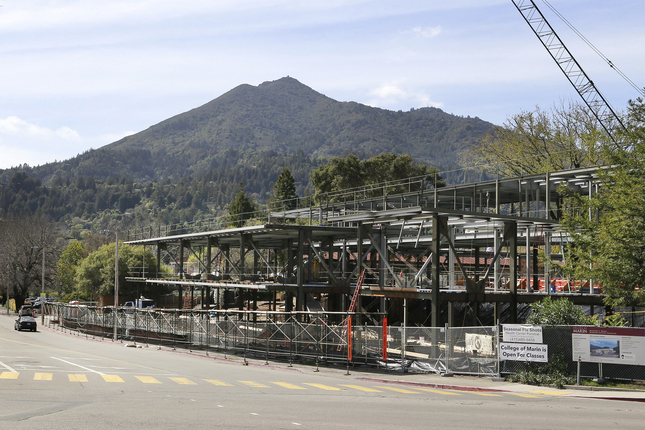
I had the great pleasure of participating in the Topping Out Ceremony for the College of Marin Academic Center on Friday, March 7. With perfect weather accompanying the event, the final piece of steel was lifted onto the three-story structure by the project’s general contractor, Wright Contracting. Designed by the team of TLCD Architecture and Mark Cavagnero Associates, the structural frame of the new building has taken shape at the corner of Sir Francis Drake Boulevard and College Avenue in Kentfield. It is especially pleasing to see this project, which our team started planning with the College in 2009, progress towards its completion early next year. See the full article on the event in the Marin Independent Journal.
And for those who enjoy a high-wire act, see the amazing video from the steel beam’s perspective, as filmed by Wright Contracting:
Project-Based Learning: The Catalyst for New STEM Buildings

Project-based learning is at the forefront of teaching in the STEM (Science Technology Engineering and Math) disciplines in both K-12 and Higher Education. A new generation of innovative science buildings are being designed that support this new active learning pedagogy.
This past week I attended a conference in San Antonio, Texas on creating STEM buildings for Higher Education institutions. We heard from faculty, architects and educational thinkers about the evolution of science education and laboratory design and toured the new Center for the Sciences and Innovation at Trinity University. Their new STEM building embodied many of the concepts we explored together during interactive conference sessions.
What are the hallmarks of a 21st century science teaching facility? Foremost they are about active and project-based learning. These are environments where students become agents of their own learning and work both collaboratively and individually to solve real world problems. The buildings are transparent and accommodating, making science visible and blurring the boundaries between the laboratory and the classroom. With plenty of “soft spaces” they become a magnet for students and build a supportive community of science learners.
At the Center for The Sciences and Innovation at Trinity University we saw labs with floor to ceiling glass, making the activity of the labs less mysterious and immensely inviting. On every floor, formal and informal study spaces were full of science (and non-science) students who inhabit the building almost around the clock. Write up spaces, separate but housed within the labs, become the places where, it was pointed out, all the data from the labs is transformed into learning. These are also spaces where students can study, collaborate and meet with faculty.
While the entire building is a beacon, reaching out to the greater campus community, the highlight of the facility is the Innovation Studio, a multi-modal maker space surrounded by shops, computer design labs and meeting spaces. The Innovation Studio, which is part of the Engineering Department, reaches out to all the sciences and the greater campus as a place for students to make their projects real. This facility will have strong links to the Business and Entrepreneurship programs within the University.
Rainwater Harvesting; What’s the Payback?

By Alan Butler AIA
This weekend I installed a thousand gallons of rainwater storage tanks in my side yard. I found some very nice Bushman Slimline tanks that are only 25” wide, fit neatly in my side yard, and still allow me to get by with the trashcans and the wheelbarrow. They collect roughly half of the water from my roof, and with a thousand square feet of roof area I can fill the tanks with 1 3/4 “ of rain. They were a fair amount of work to move around – weighing nearly 300 pounds apiece and being seven feet long and six and a half feet tall, it was a real trick for three of us to unload them. Once we pushed the tanks into place, I installed piping that led from the gutters to the tanks. With piping complete and a light rain on Sunday, I finally heard the satisfying sound of the rainwater flowing into the tanks.
While installing the tanks, one of my neighbors walked by and we started talking about the concept of payback. As with my home, he installed photovoltaic panels on his roof a couple of years ago. He related the story of attending an informational meeting about solar panels just before he put in his system. One member of the audience kept asking: “But what’s the payback?.” He related to me that while a friend of his bought a new Mercedes for $50,000 that same year, he bought a new Prius and his solar panel system. Nobody asked his friend what the payback was on his new Mercedes! My neighbor’s electric bills have dropped dramatically and in approximately seven to ten years the system will have paid for itself. He said even with economic facts in play, it was equally or more important for him to do the right thing. I won’t go into the whole argument about renewable energy, carbon dioxide and our current unsettled weather.
I looked at my utility bill for the first time in detail on Sunday evening. I found that our household uses three to five thousand gallons a month during a normal rainy winter and an astonishing twenty-five thousand gallons a month during the warmest part of the year. A thousand gallons of water probably costs only $15 when you look at all the flat fees and related sewer charges. If we have a really rainy spring and I’m diligent about using my harvested rainwater, my payback for the tanks might be fifteen rather than thirty years. Not a really compelling economic argument but…
I’ve already become a more conscientious consumer as the result of reading my bills carefully for the first time. My bills will likely drop as result. If we have a severe drought and have to cut back or eliminate landscape watering, I’ll be able to keep my lemon trees and vegetable garden going this summer. Unlike the luxury car, it really will pay back in both economic and less tangible, but significant ways. I feel like I’ve made the right decision. I’ll stick with my Toyota Hybrid too!
Another MIlestone for Aurora Behavioral Health
The Aurora Behavioral Health Psychiatric Hospital in Santa Rosa has reached another milestone in their efforts to bring the facility to full operating capacity. TLCD Architecture enjoyed working with Aurora Behavioral Health for the renovation of the facility and are gratified to have been a small part of their efforts to bring quality mental healthcare back to Sonoma County. Please read the North Bay Business Journal article for the full story.
"If You Build It Movie" Inspires
IF YOU BUILD IT is a captivating movie that follows designer-activists Emily Pilloton and Matthew Miller to rural North Carolina where they work with local high school students to transform their community and lives. Pilloton and Miller lead their students through a year-long design and build project that does more than teach just basic construction skills – it shows them the power of design-thinking to reinvent their town and what is possible.
The movie will be released on February 28th at the Landmark Cinema in San Francisco and the Shattuck Cinemas in Berkeley. It opens March 1st at the Smith Rafael Film Center in San Rafael. Watch the trailer and be inspired!
Thanks to my SMPS group for sharing this great link!

